Jeju Olle Trail Route 8: Wolpyeong- Daepyeong Olle
Total distance: 19.6km/ Total time: 5~6 hours
The Badang Olle continues past Yakcheonsa (Temple), the largest temple in the Orient, Beritnae Oreum, Jungmun Beach, Yerae Ecological Park, and Yeolli coastal road. It is a pity the route’s midpoint sit right inside Jungmun Tourist Complex, but the first and second half are both excellent.
Starting point: Wolpyeong Awenangmok Rest Area
Finishing point: Daepyeongpogu (Port)
Stamp stations: Wolpyeong Awenangmok Rest Area, Beritnae Park Gazebo, Daepyeongpogu (Port)
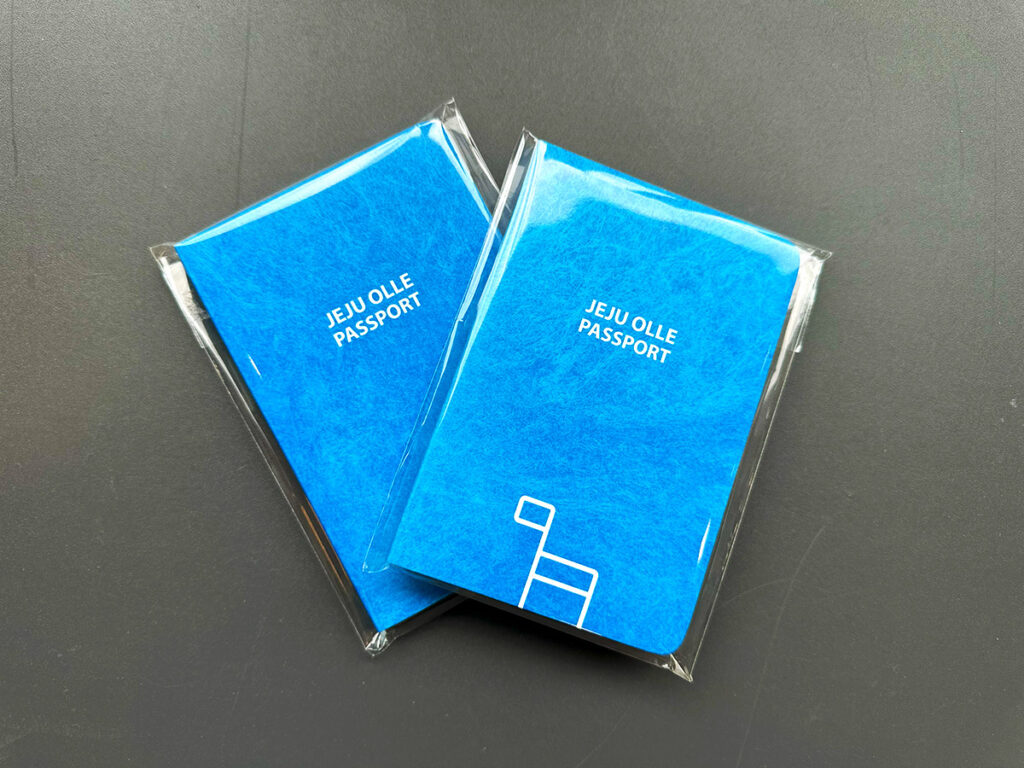
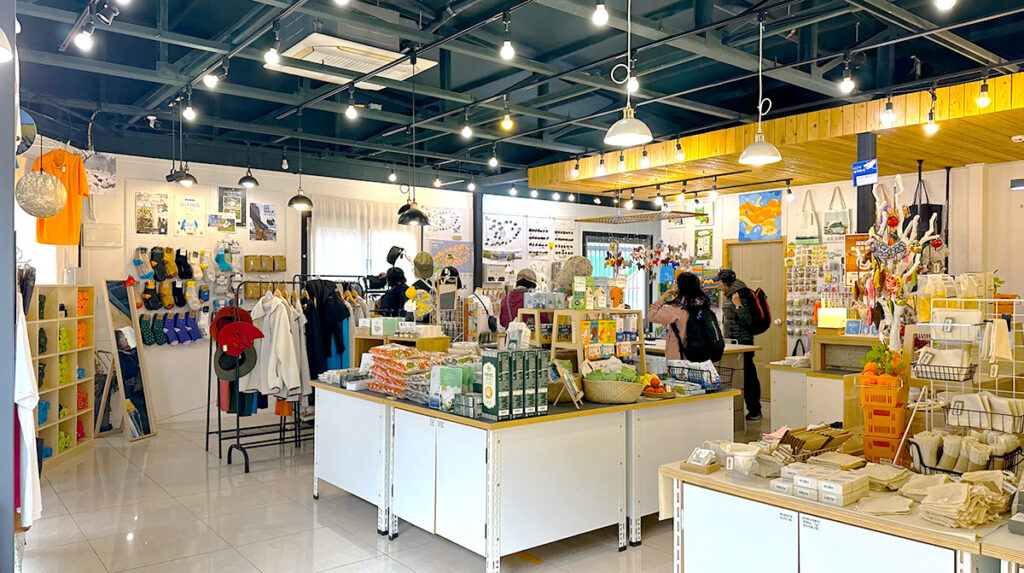
We’ve been planning and preparing for this moment with excitement and care ever since we arrived on Jeju Island. This trek is one of our biggest goals here. After failing to summit Mt. Hallasan via its two main trails during the winter—due to continuous closures and severe weather—we became even more determined not to fail this time.
Just imagine experiencing the entire island of Jeju on foot. Through this journey, we hope to absorb the island’s culture, connect with locals, taste Jeju’s unique dishes, and see every inch of its landscape with our own eyes.
Before diving into our journey, here’s a short introduction to the Jeju Olle Trail Challenge.
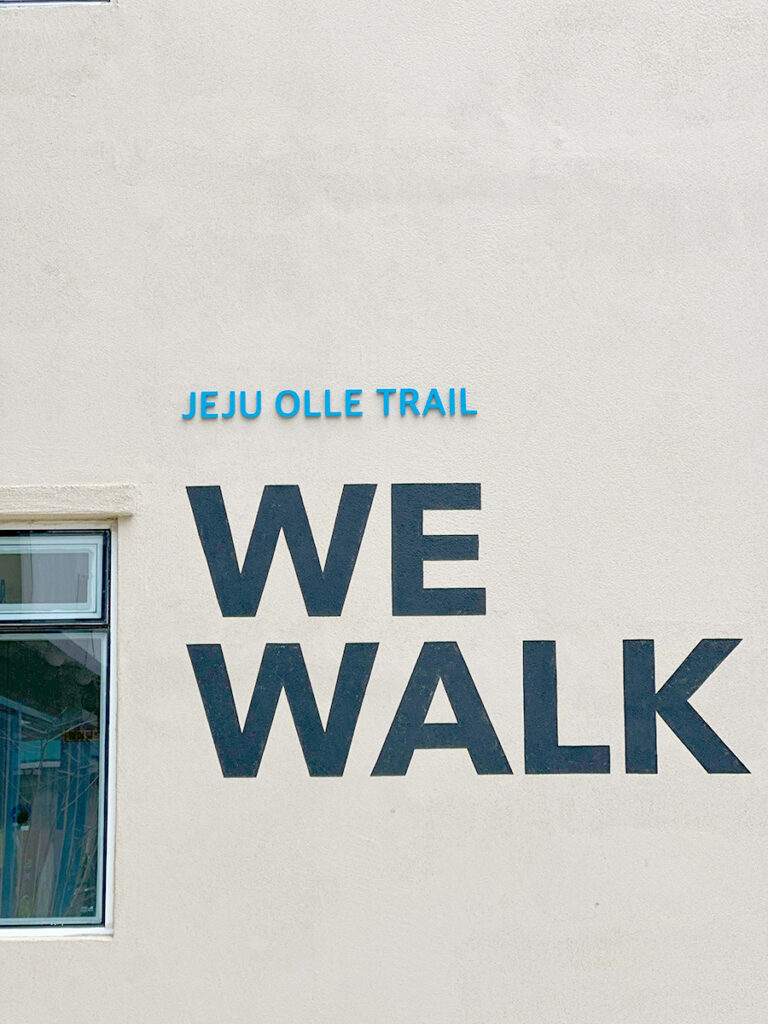
The Jeju Olle Trail is a stunning network of long-distance footpaths that encircle Jeju Island, Korea’s volcanic jewel. The trail system was founded in 2007 by Suh Myung-suk, a former journalist who was inspired after walking Spain’s famous Camino de Santiago. Upon returning to Korea, she and a team of volunteers restored forgotten paths, linking old village alleys, coastal roads, forests, and farmlands to create a walking journey that celebrates both nature and community.
Today, the Olle Trail spans 27 routes—including 21 main trails, 6 sub-routes, and one spur trail near the airport—covering approximately 430 to 437 kilometers in total. Each route typically ranges from 10 to 18 kilometers, taking anywhere from 4 to 8 hours to complete, depending on terrain and pace. Some trails are manageable in half a day, while others offer a full-day hiking adventure. Completing all the routes is a fulfilling way to witness Jeju’s varied and captivating landscapes.
Now, let us take you through the first part of our beautiful journey on Route 8…
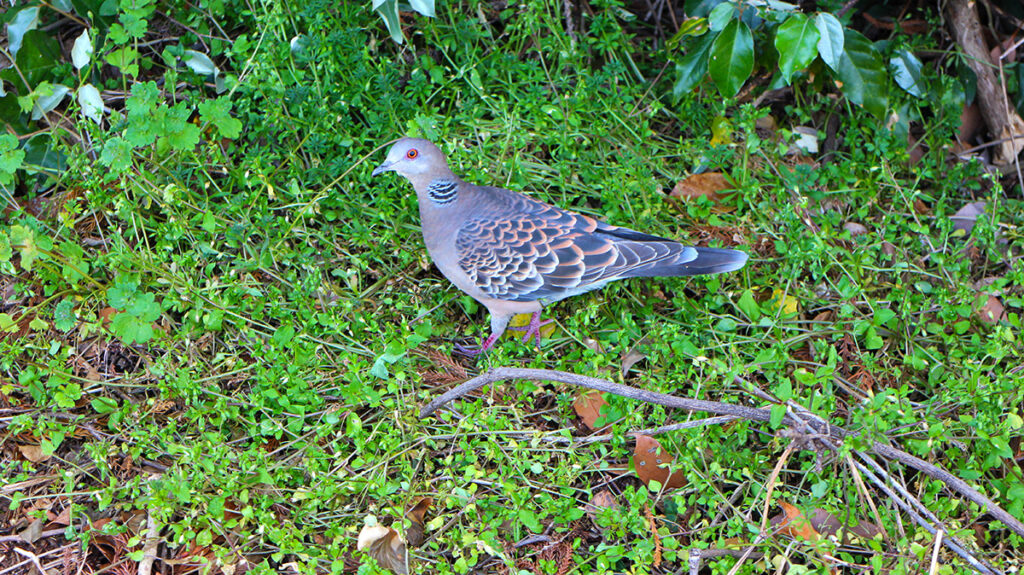
Since we live near Route 8, it made sense to start there. We took a bus to Wolpyeong Awenangmok Rest Area, the official starting point of this trail.
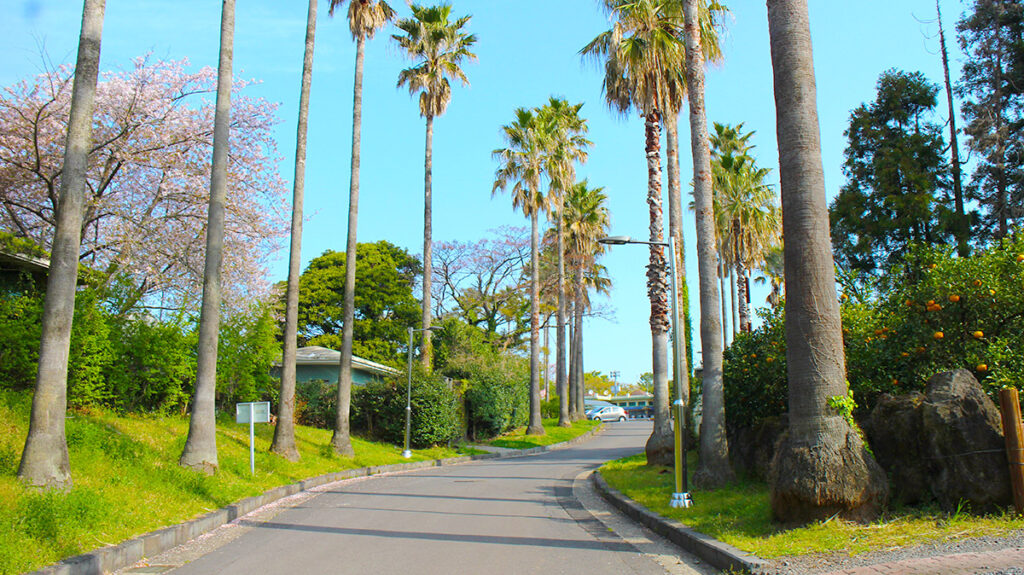
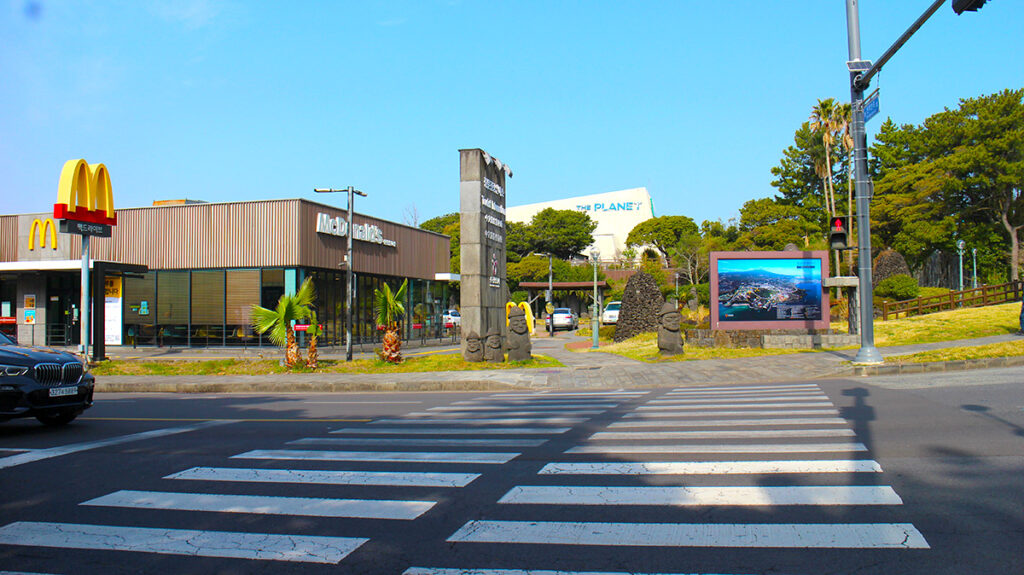
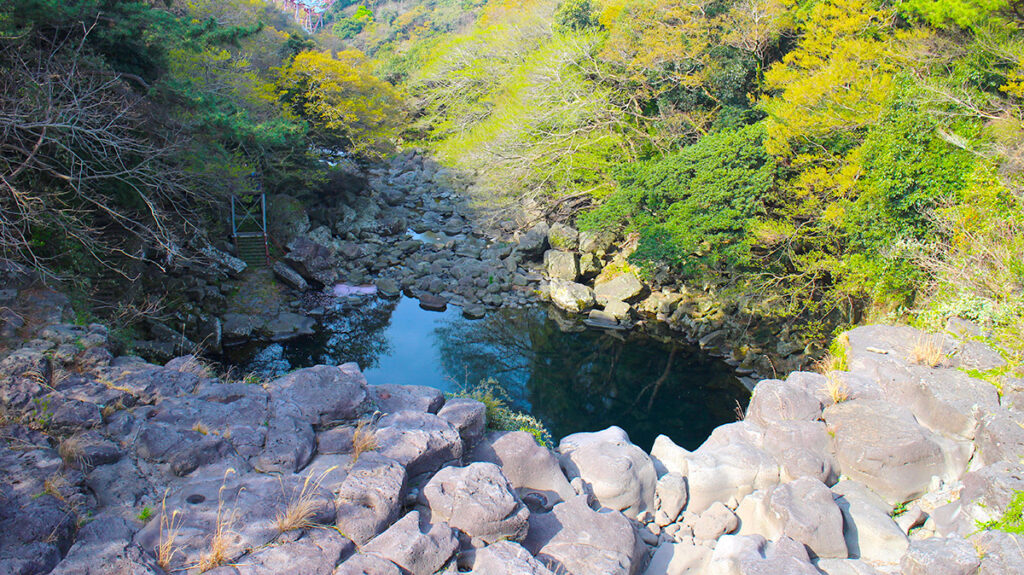
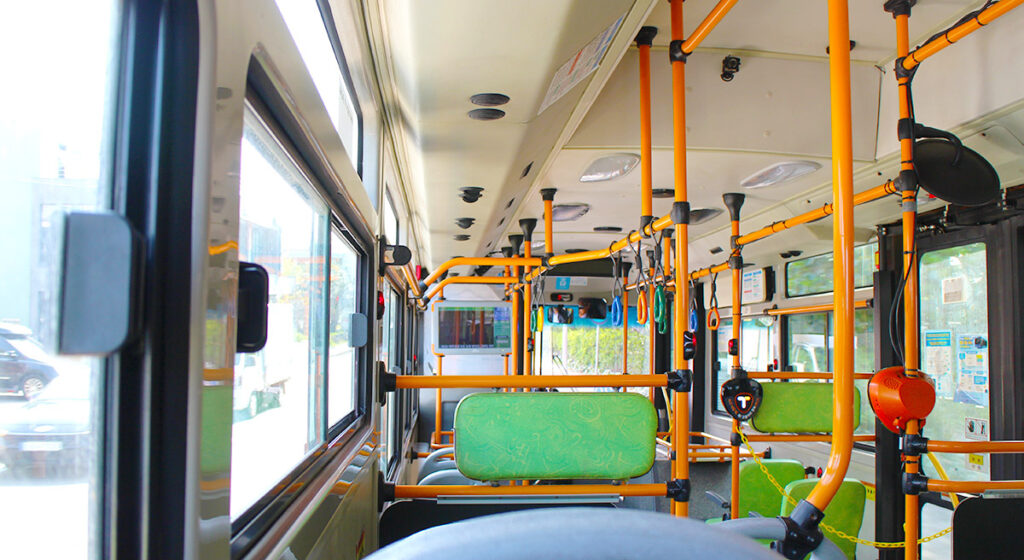
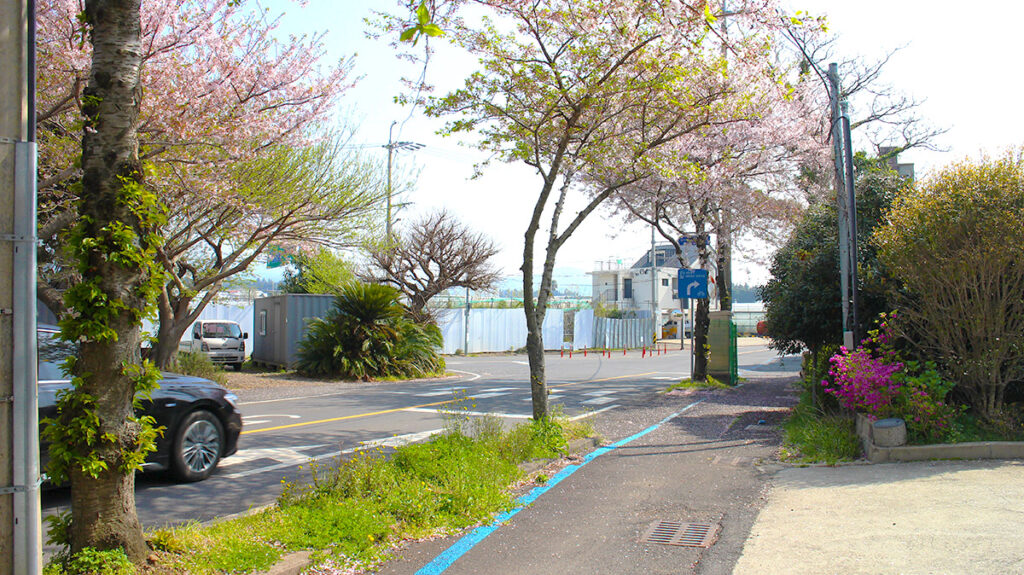
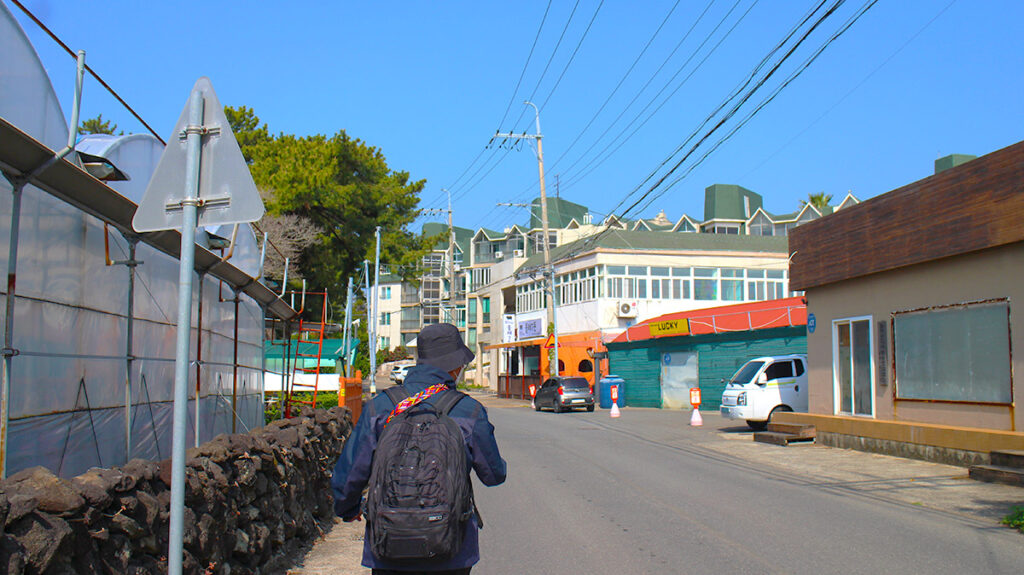
We started a bit later than planned because we had to wait for McDonald’s to open for breakfast. We arrived at the rest area at 10:18 AM, snapped some souvenir photos to mark the beginning of our challenge, got our first Olle Trail passport stamp, and officially began the trek at 10:30 AM.
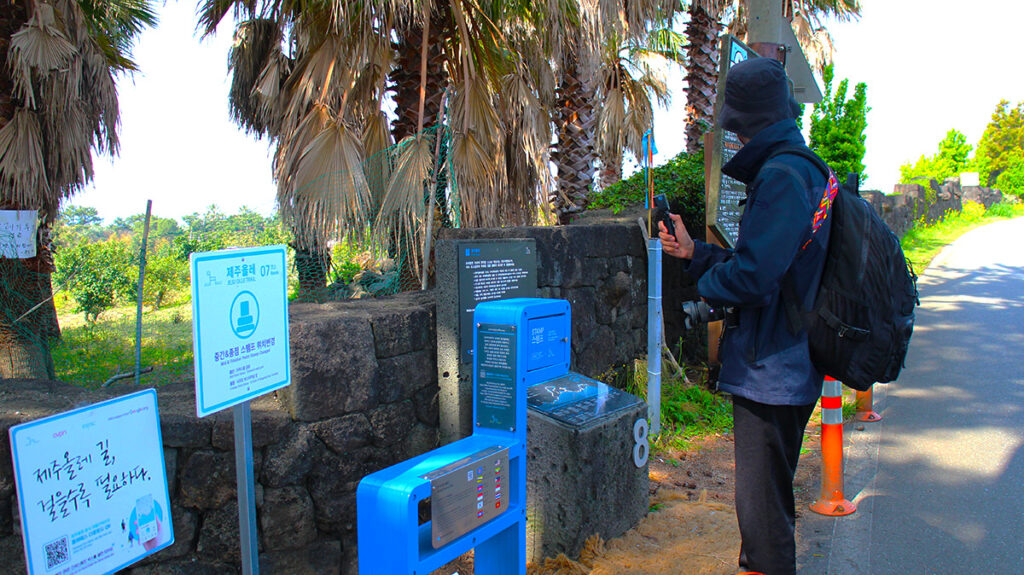
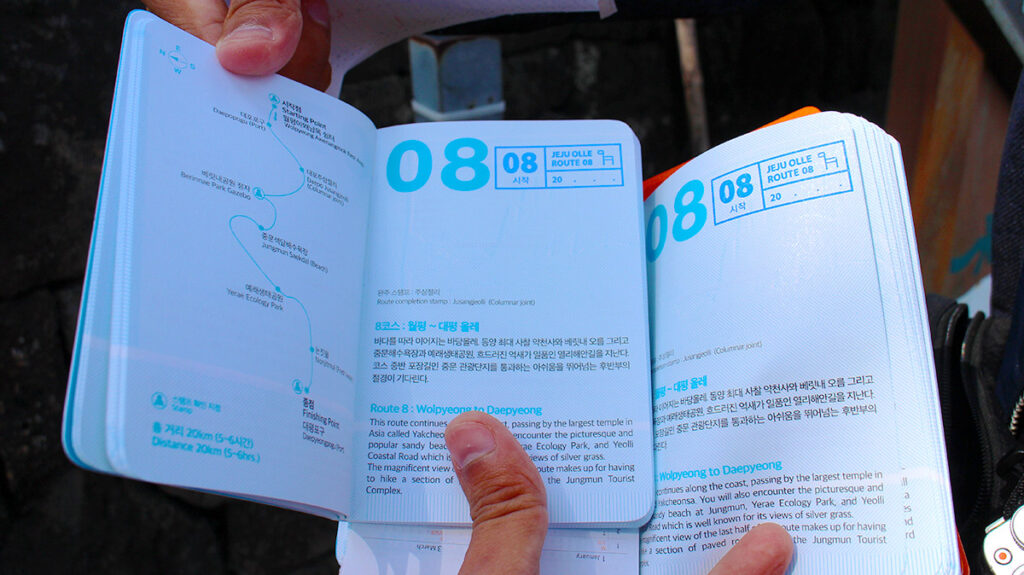
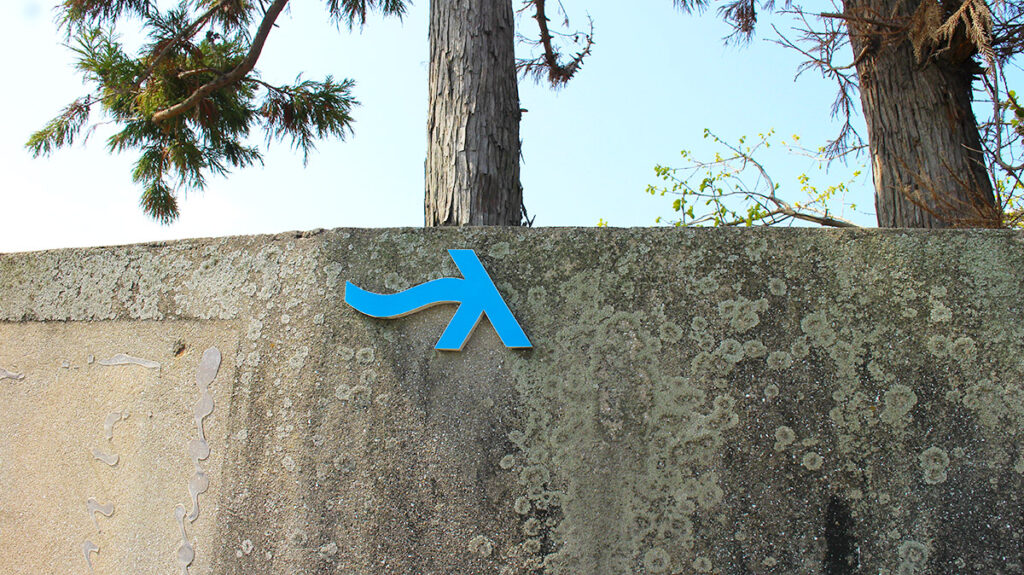
The trail opened with a walk through a quiet village, instantly evoking that nostalgic, countryside feeling.
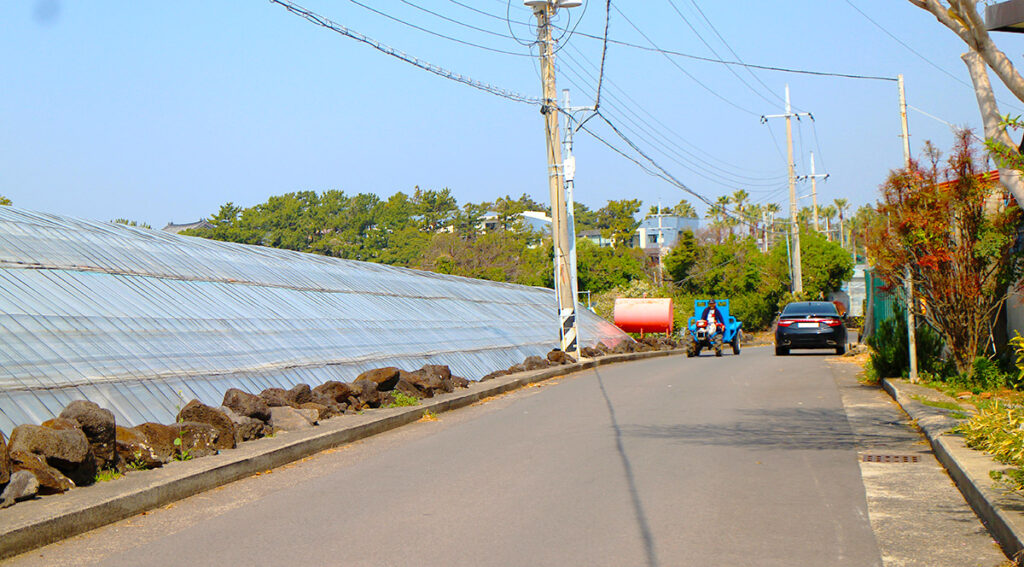
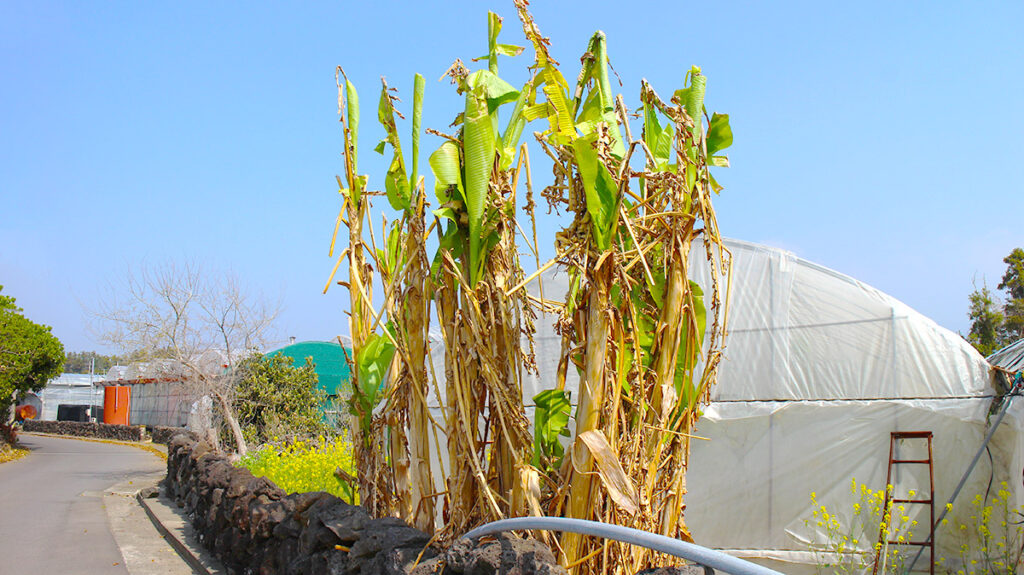
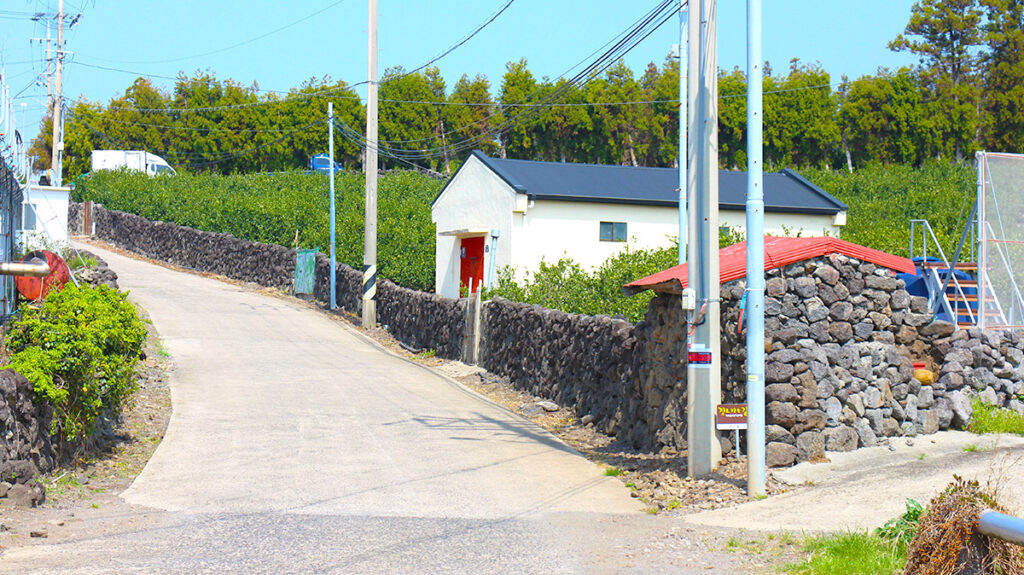
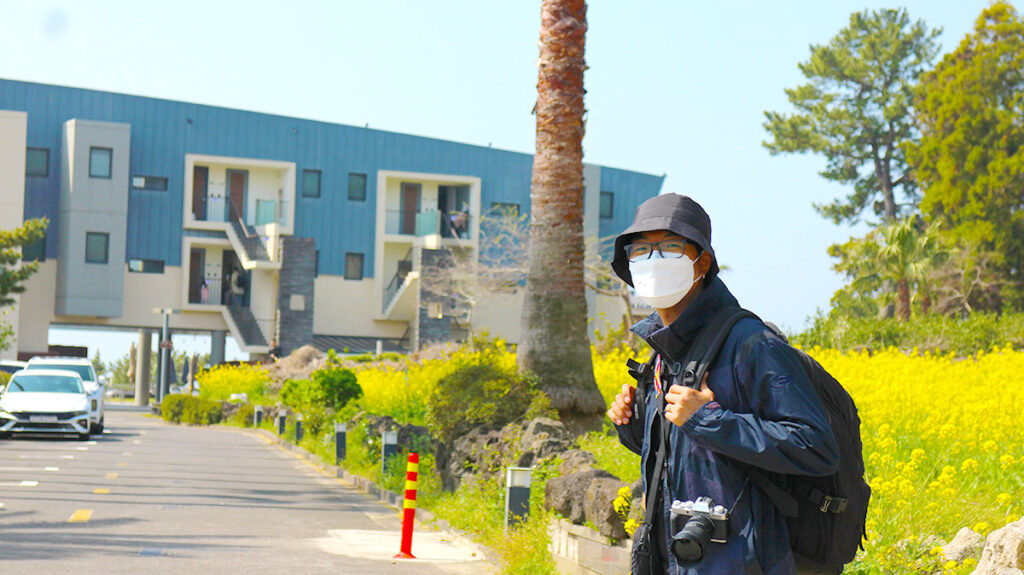
Still, despite the heat, the scenery lifted our spirits—lush farmlands, wide open green spaces, and the bright blue sky. It was exactly the kind of peacefulness we were looking for.
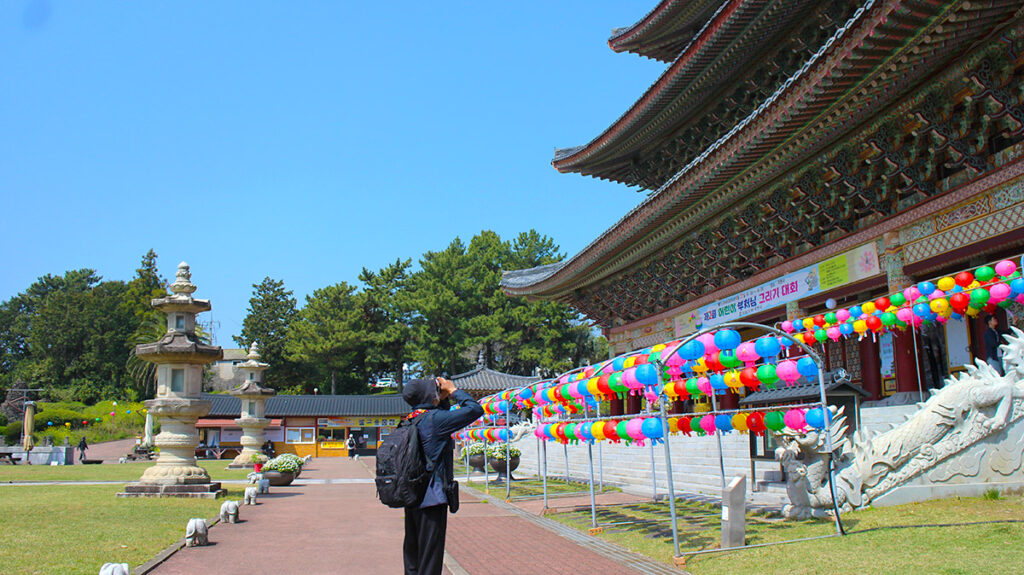
We soon arrived at Yakcheonsa Temple, one of the largest Buddhist temples in East Asia. It’s a popular destination for both prayer and tourism, so expect crowds. The temple complex is truly grand, and you could easily spend an hour exploring the grounds. But with a full trail ahead, we kept our visit brief.
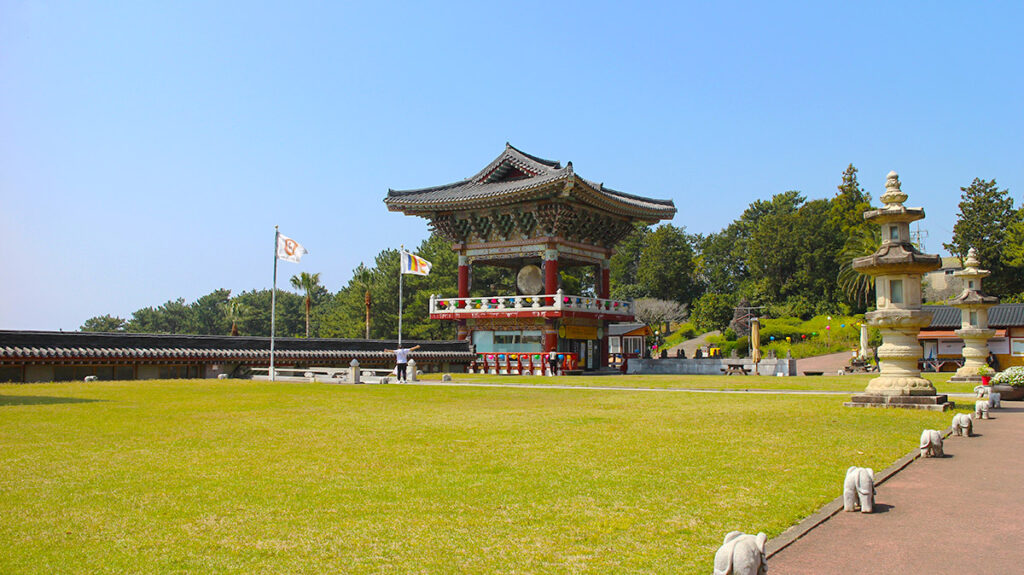
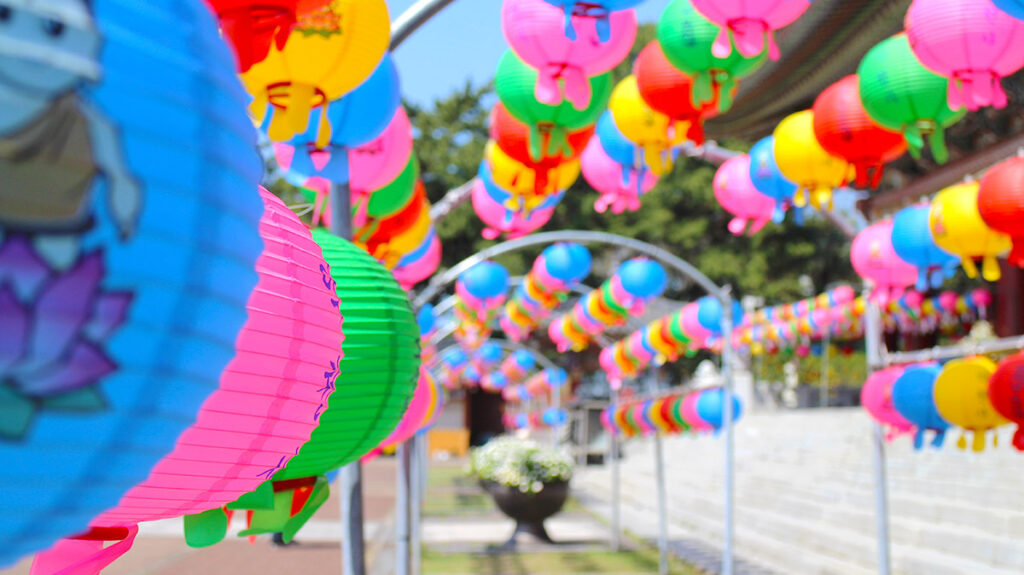
After Yakcheonsa, the trail led us past several cafés and restaurants before arriving at a rugged coastal section. This was both beautiful and brutal. If you’re not wearing proper footwear, be warned: walking over uneven basalt rocks (현무암) can be punishing. Hiking boots are strongly recommended.
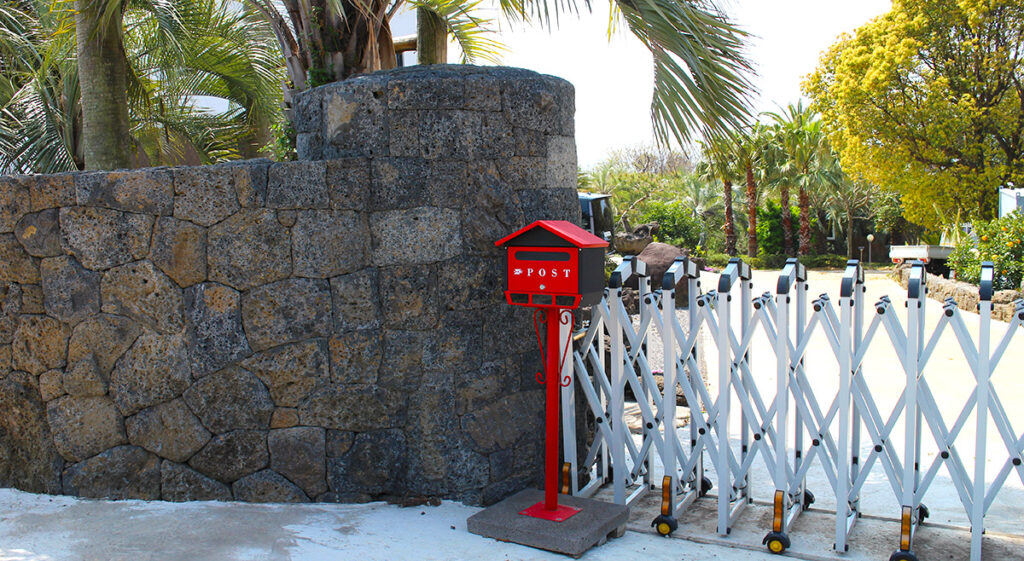
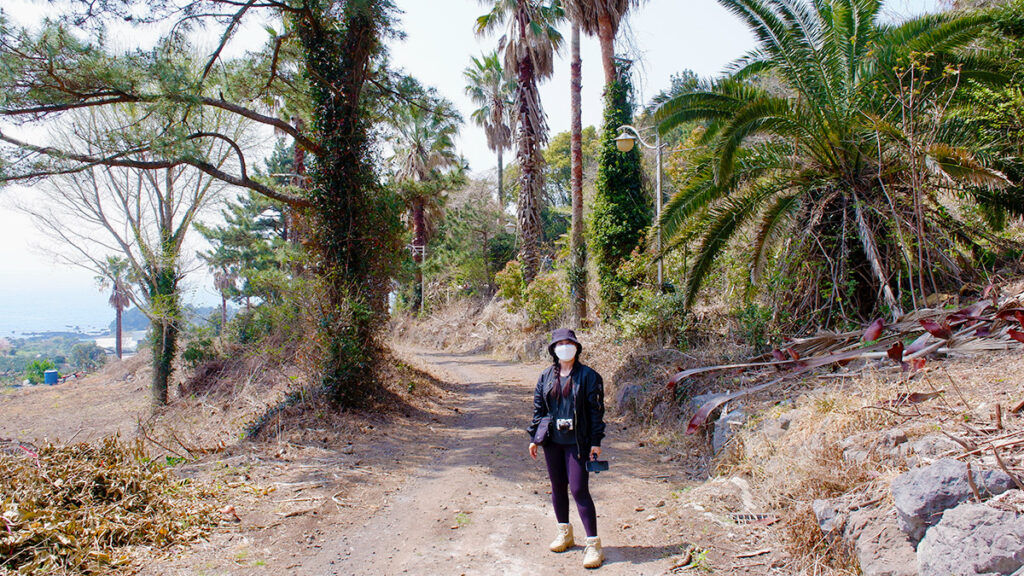
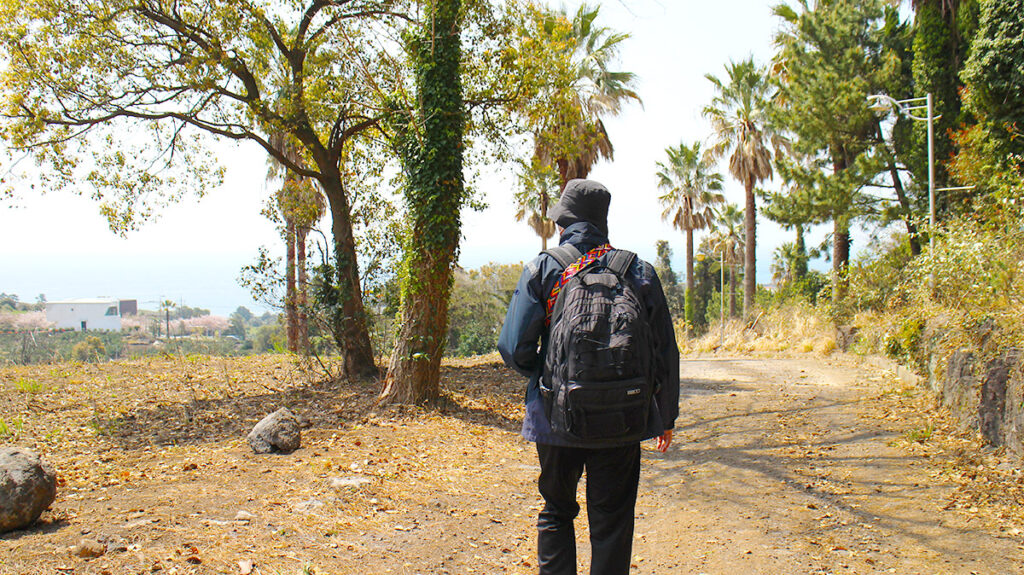
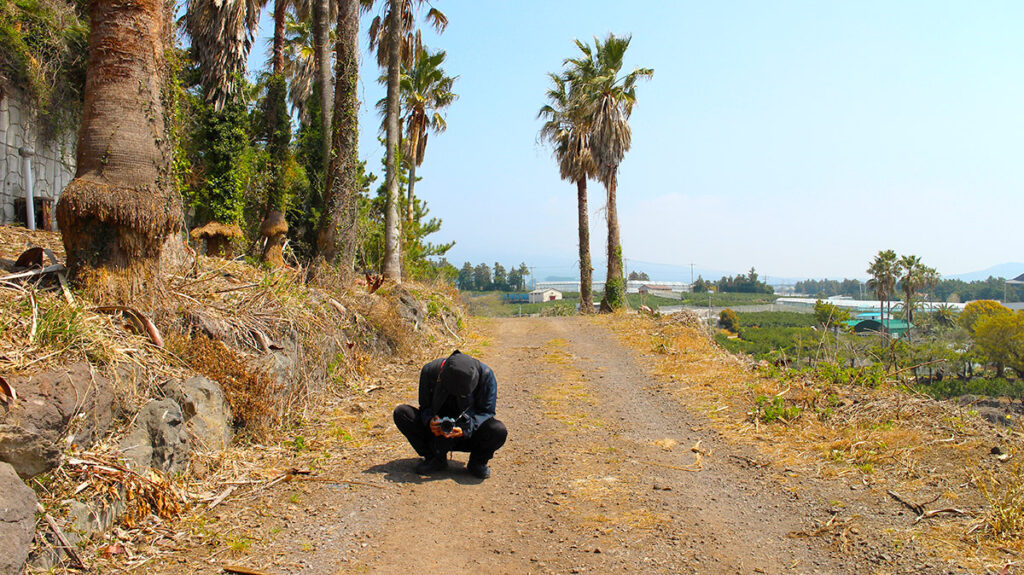
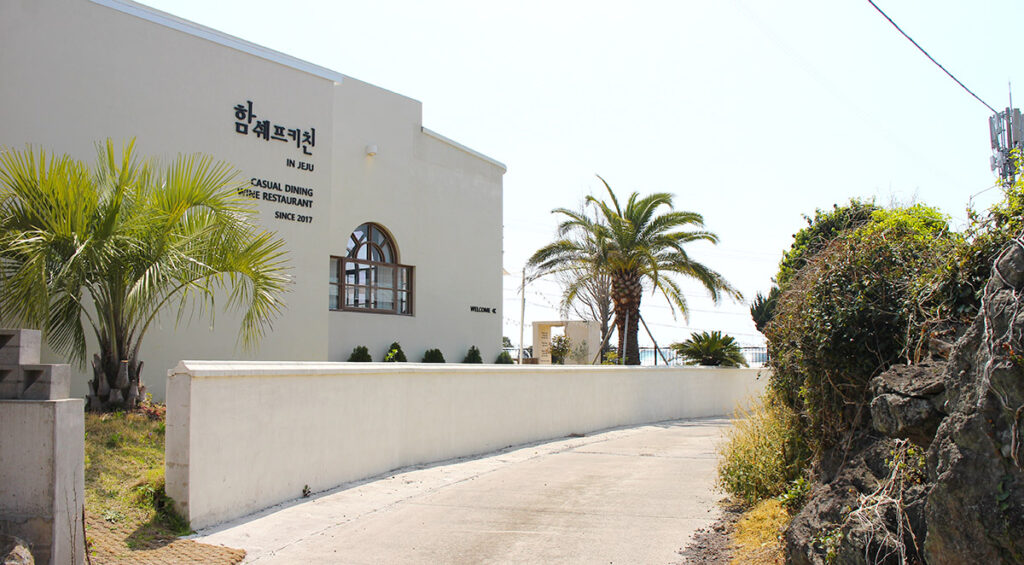
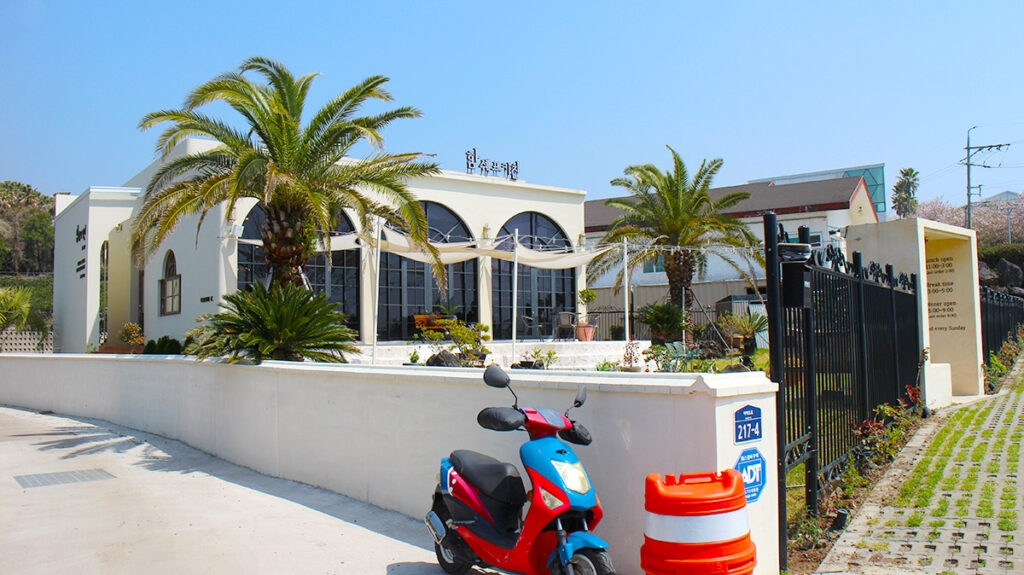
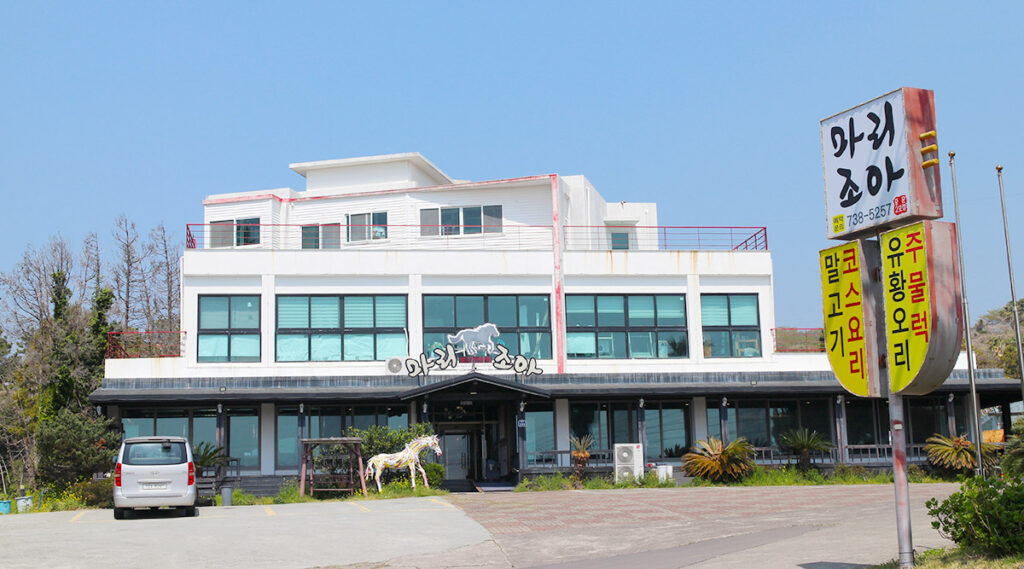

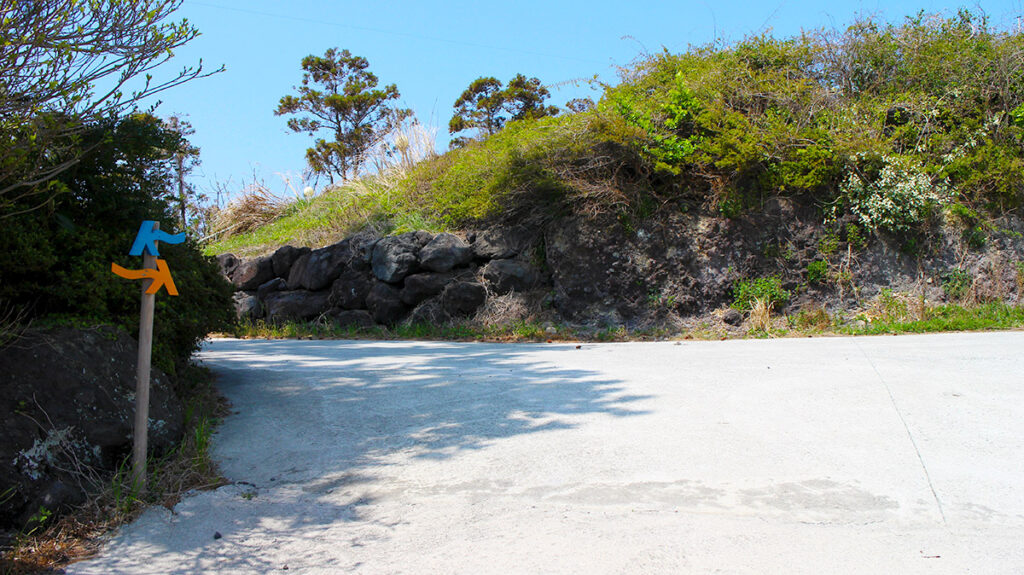
Complaints aside, the scenery here was breathtaking—waves crashing onto black volcanic rock, the vibrant colors of spring flowers, and the raw beauty of Jeju’s coast. The contrast between the pinkish-purple wildflowers and deep black rocks was pure magic.
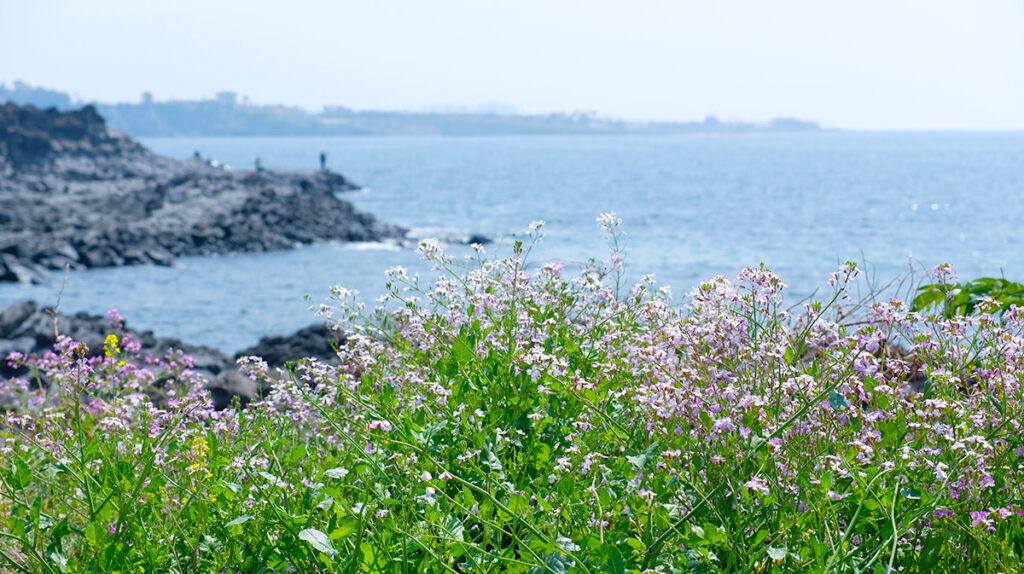
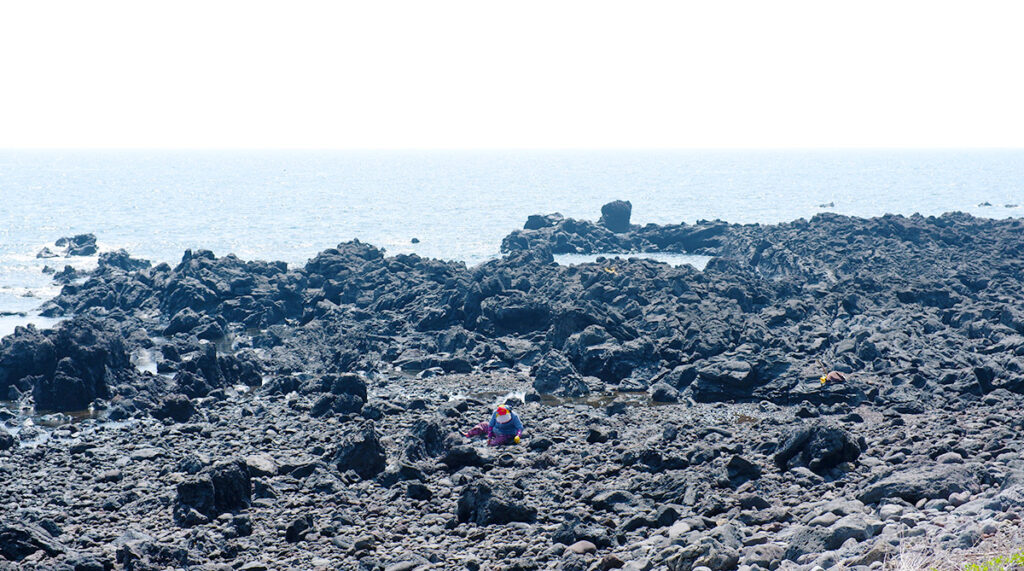
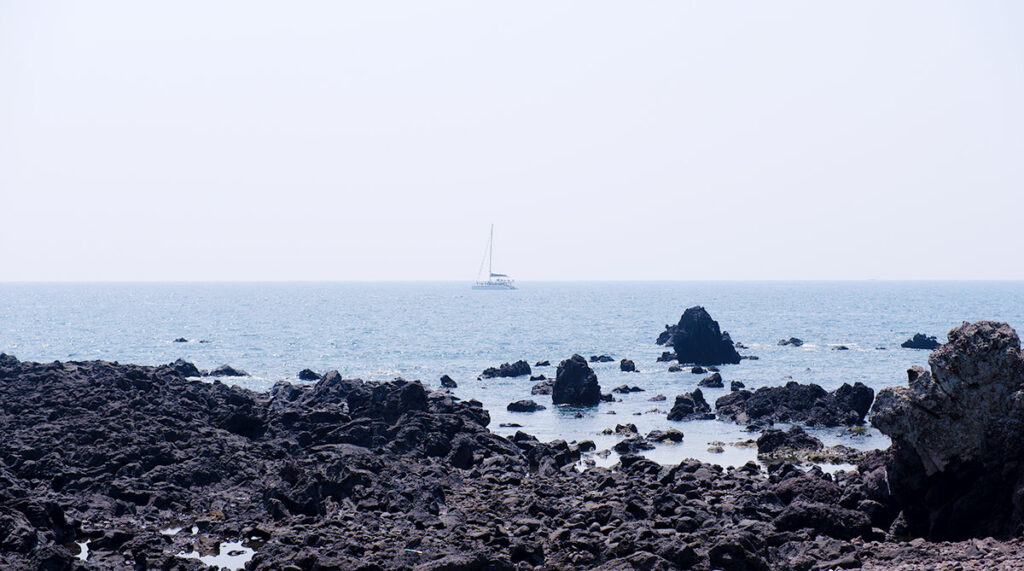
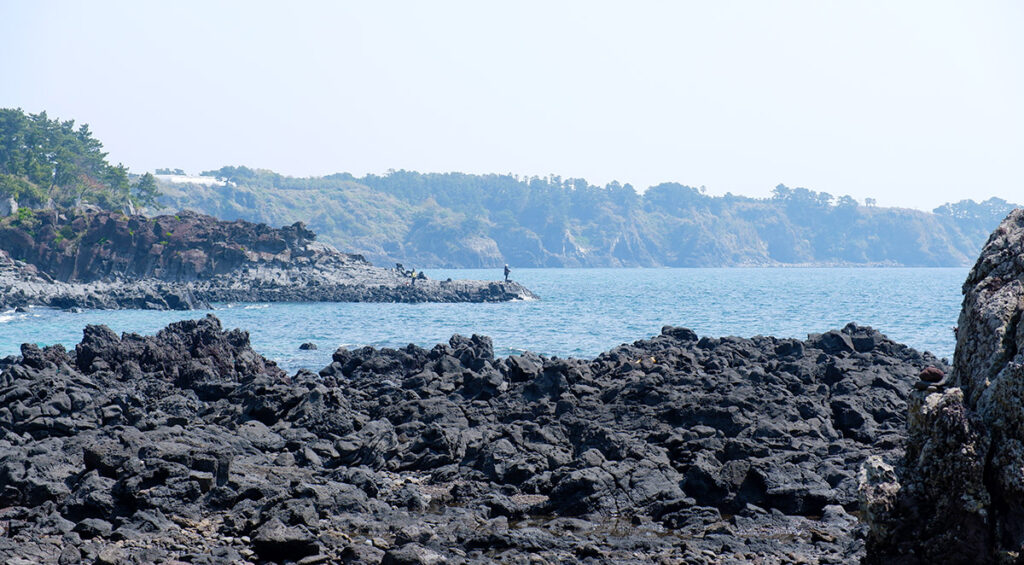
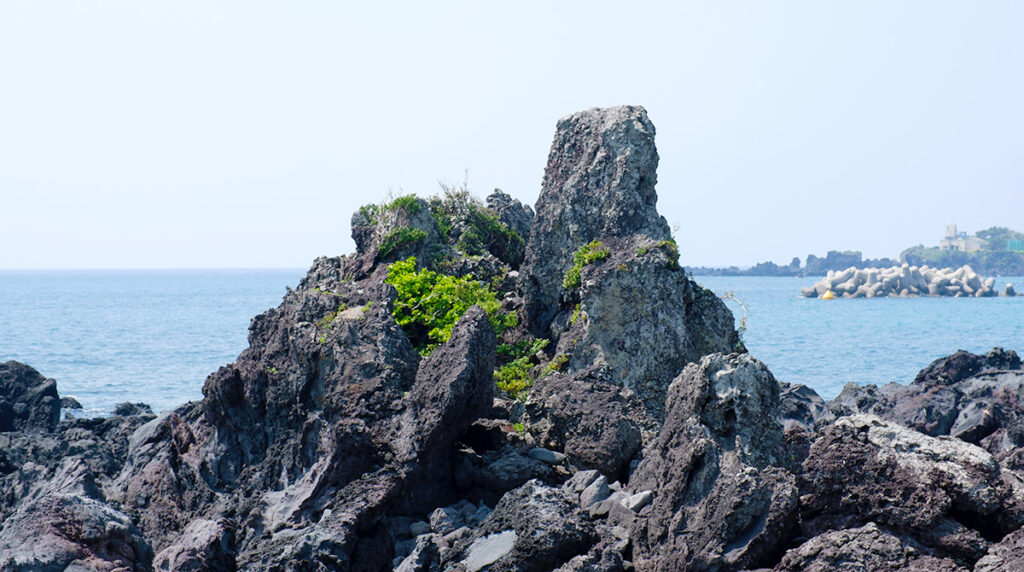
Leaving the coast, the trail curved back inland through another village. We took a break at a nearby 7-Eleven, cooling off with drinks. Right next to it was a field of blooming canola flowers, perfect for a quick photo session. A little further along, we reached Daepo Port, a lively spot with boat rides, seafood restaurants, and more cafés.
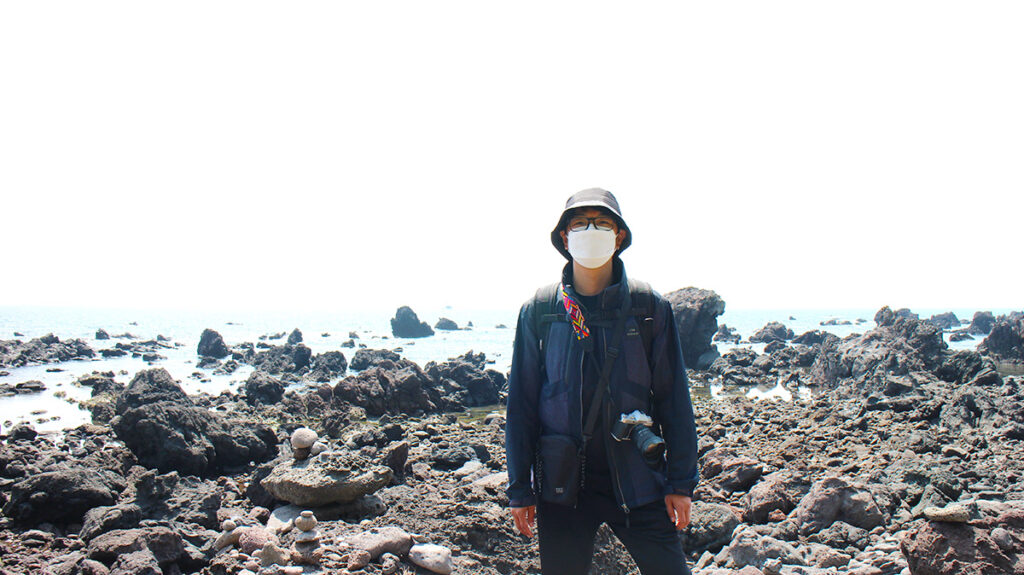
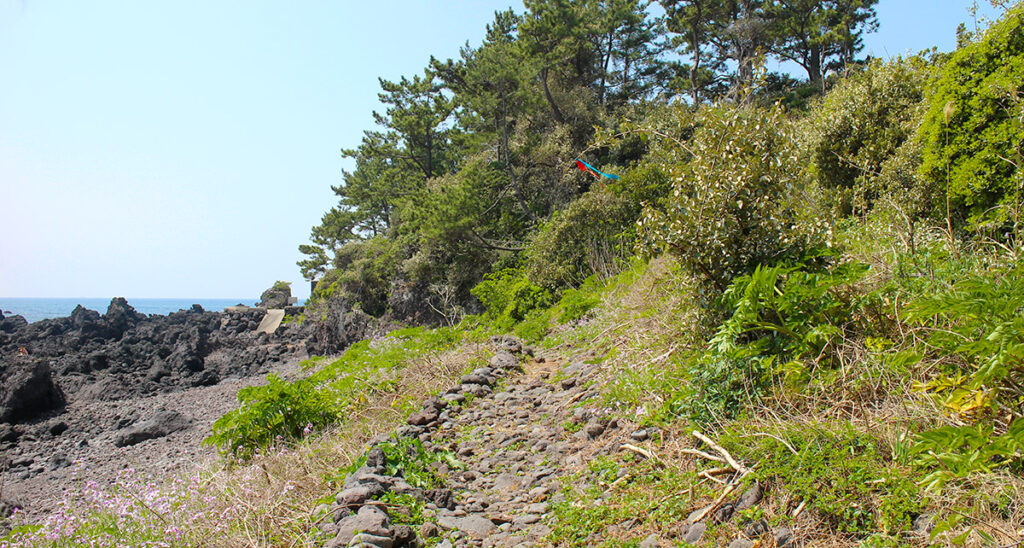
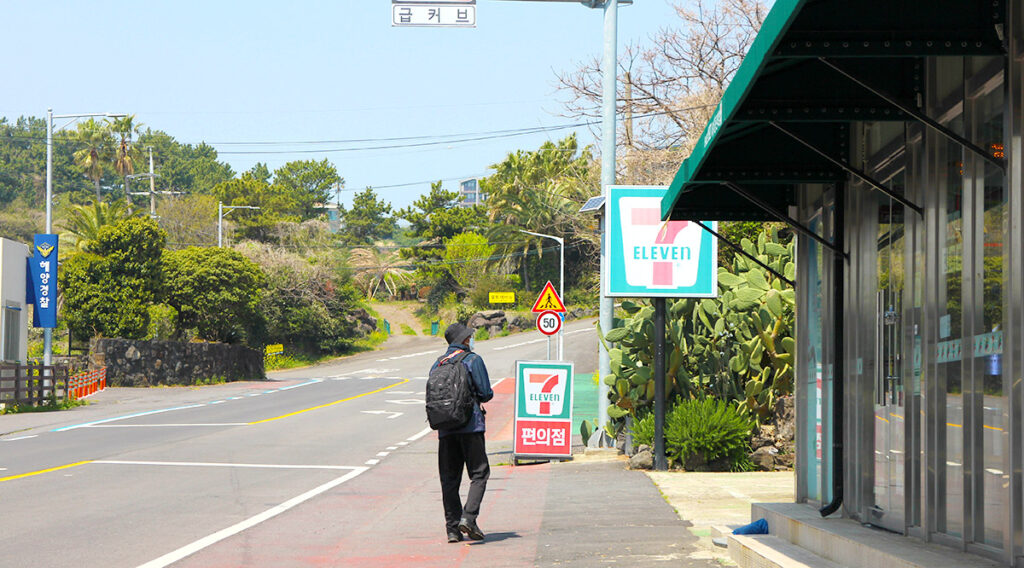
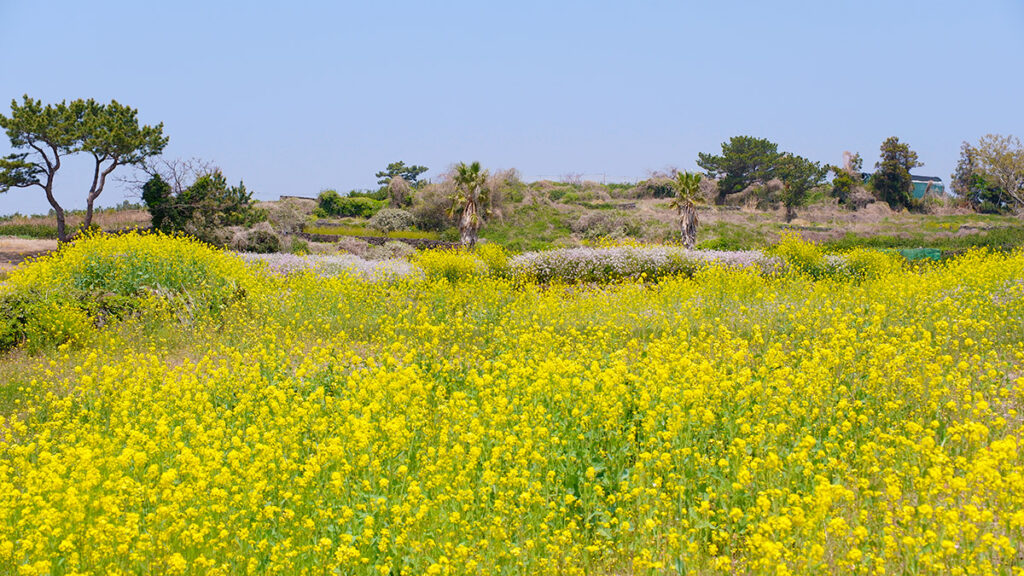
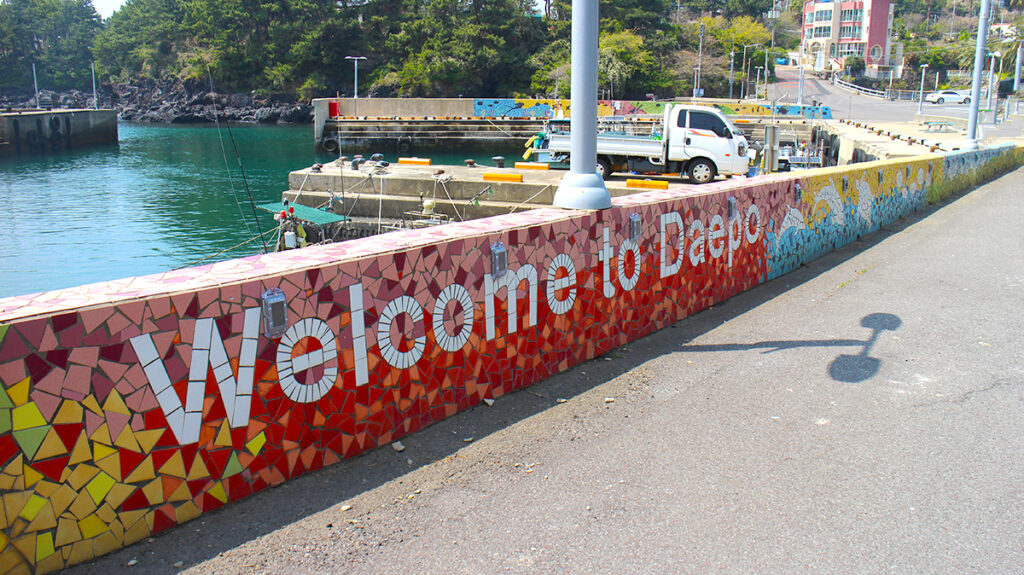
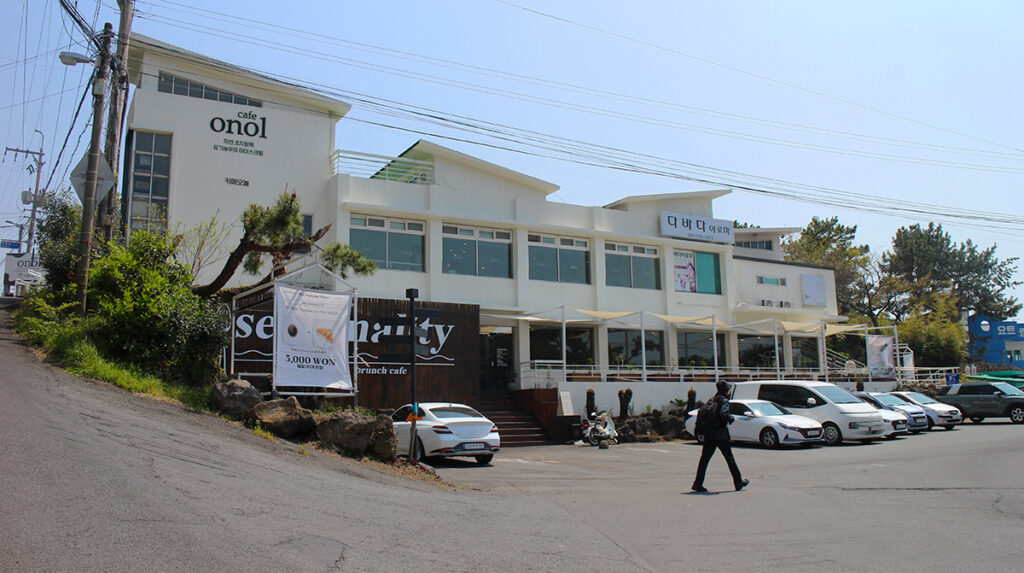
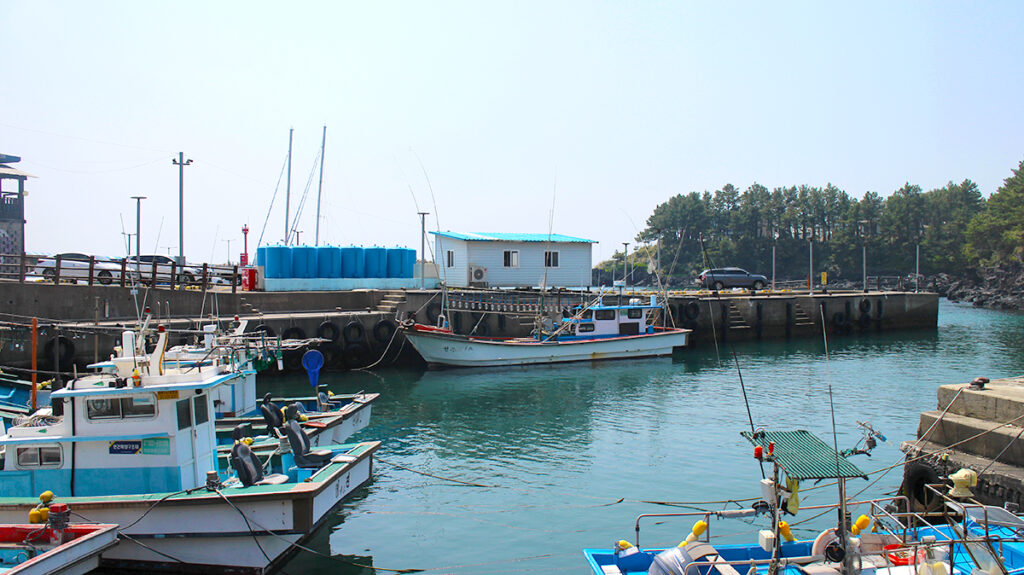
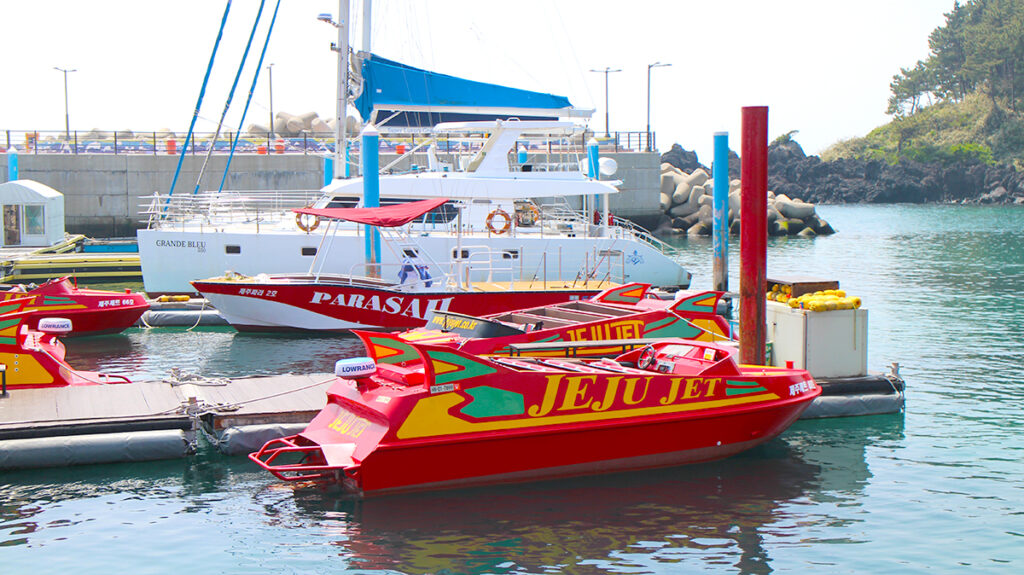
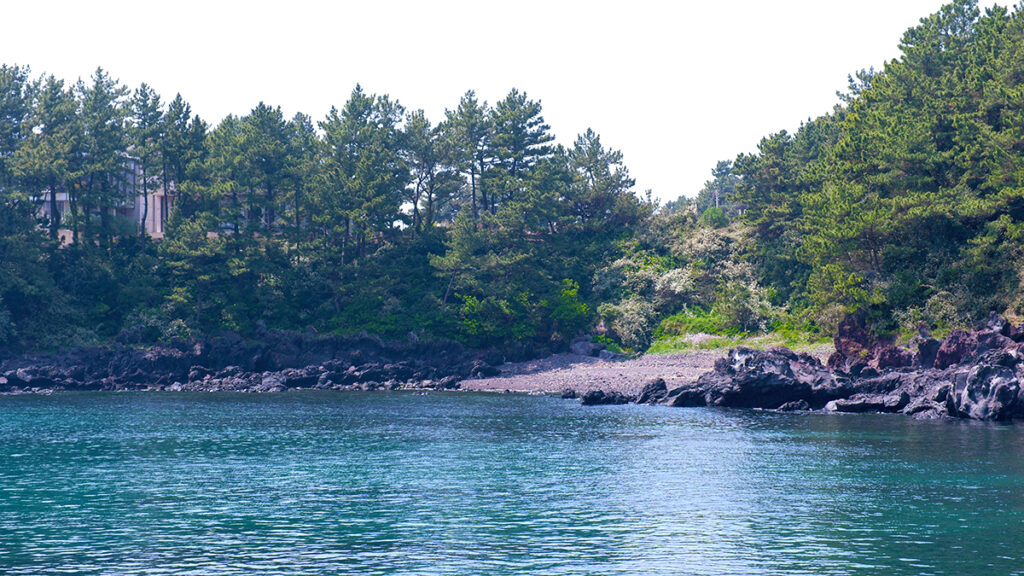
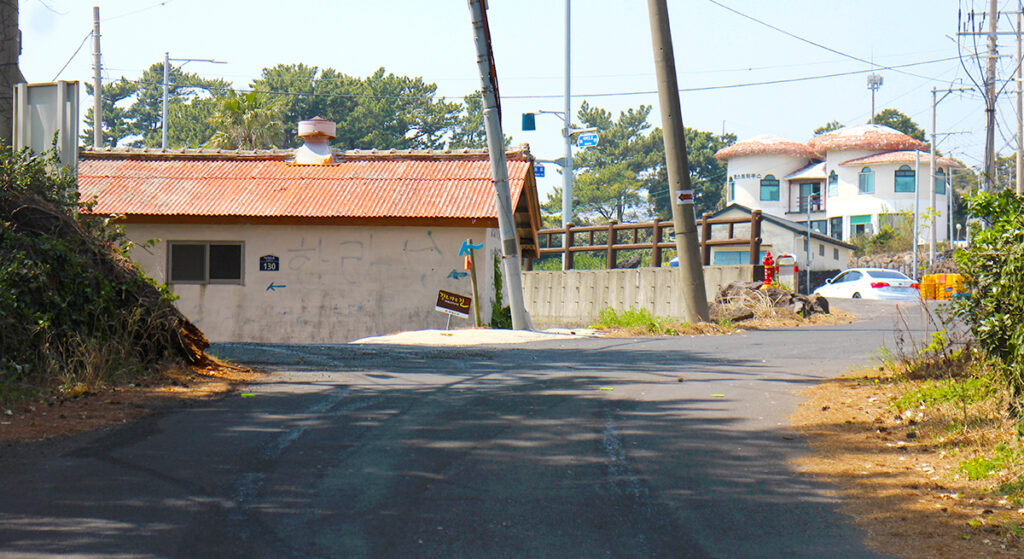
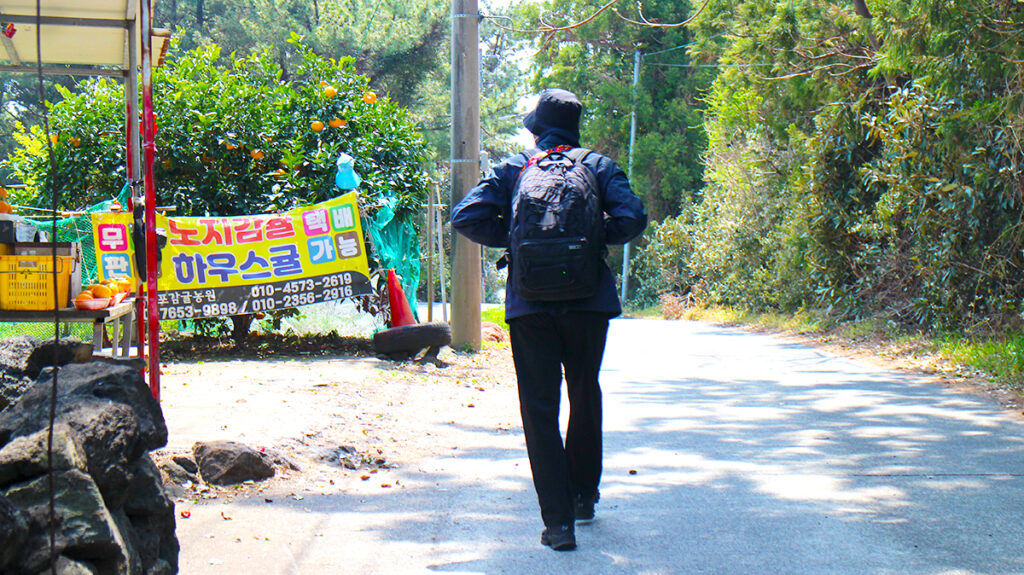
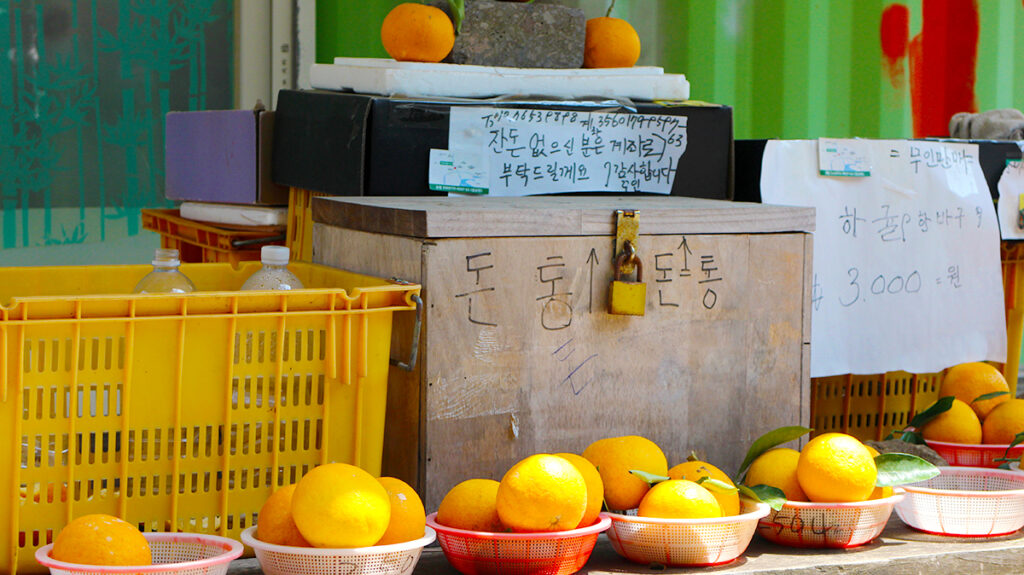
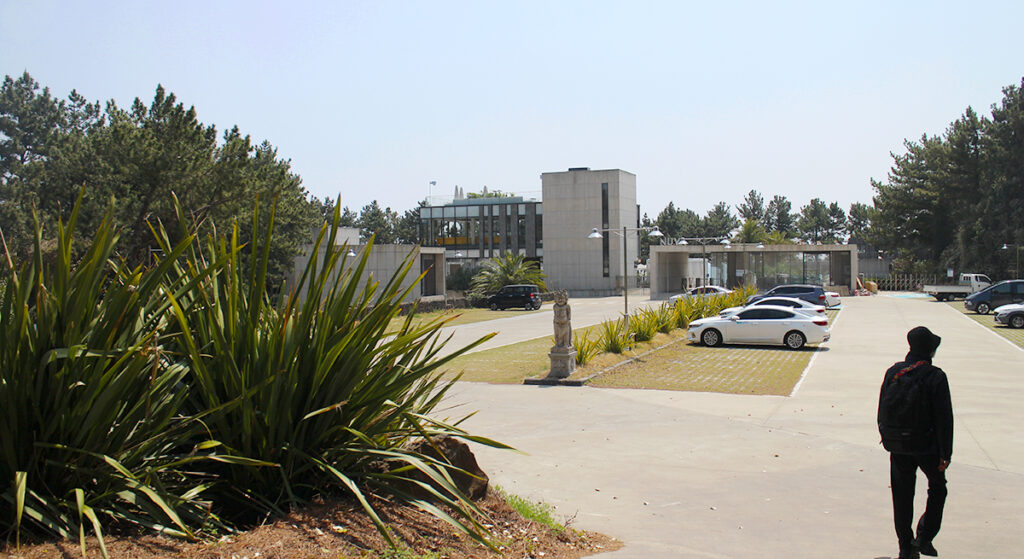

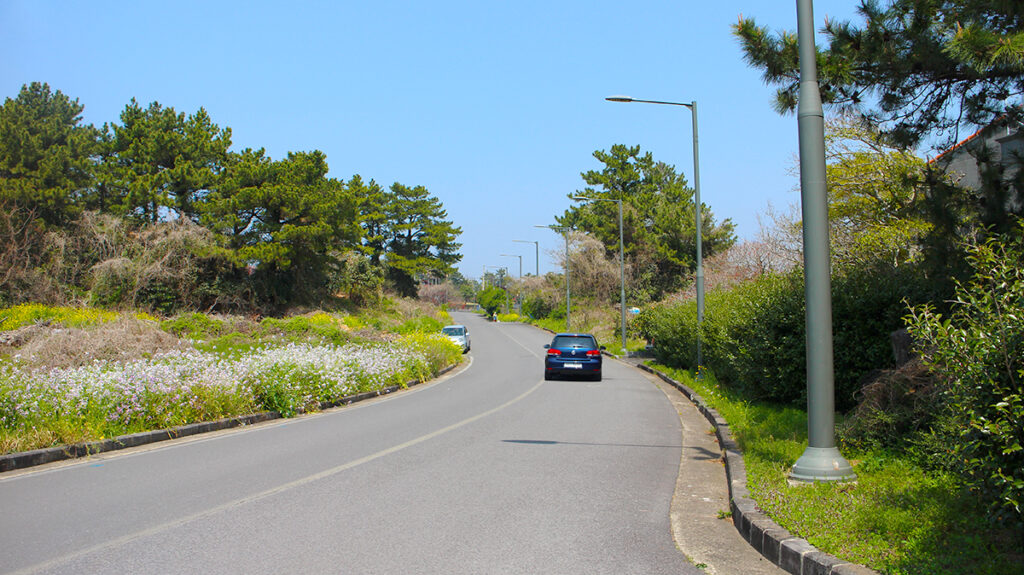
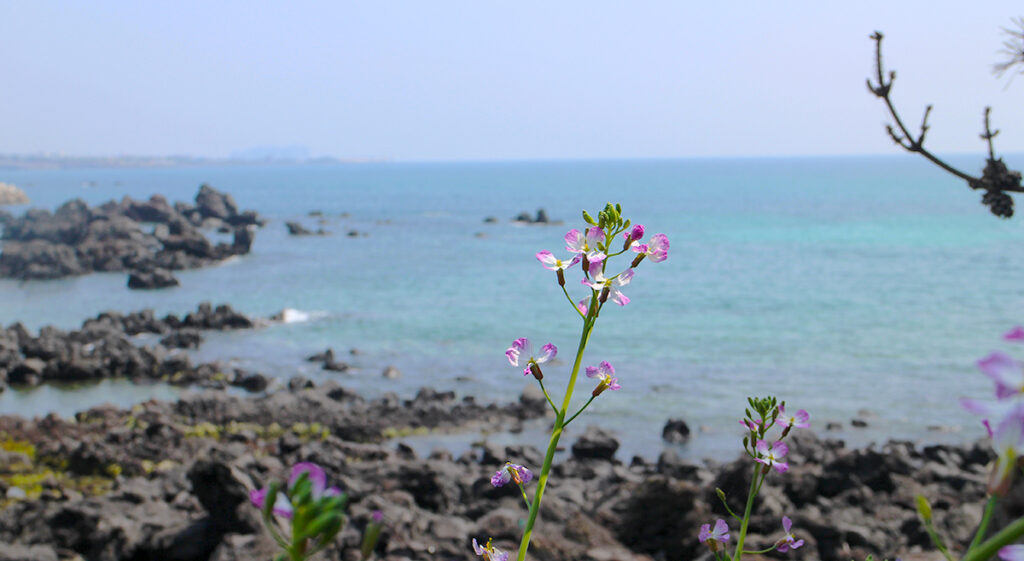
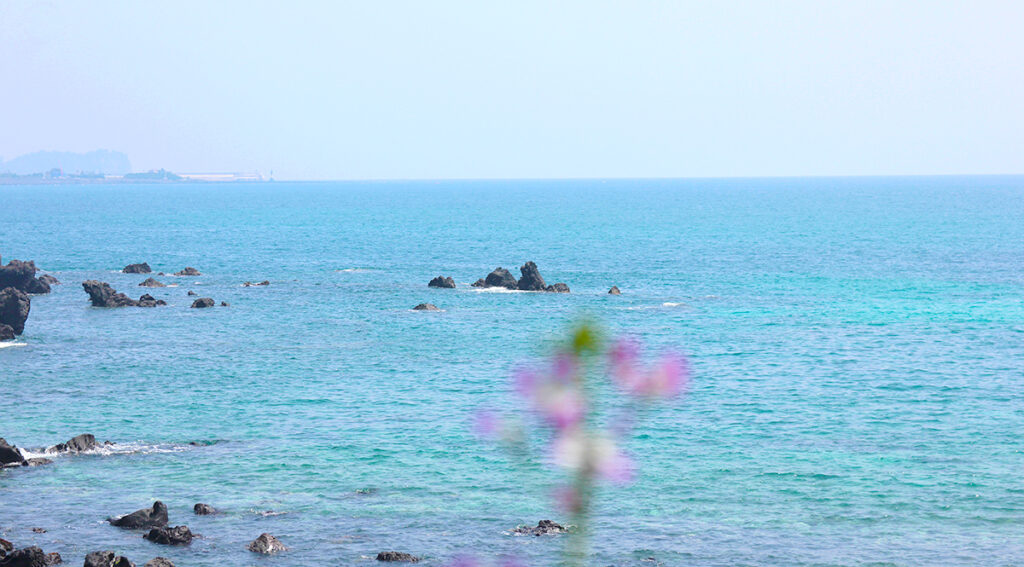
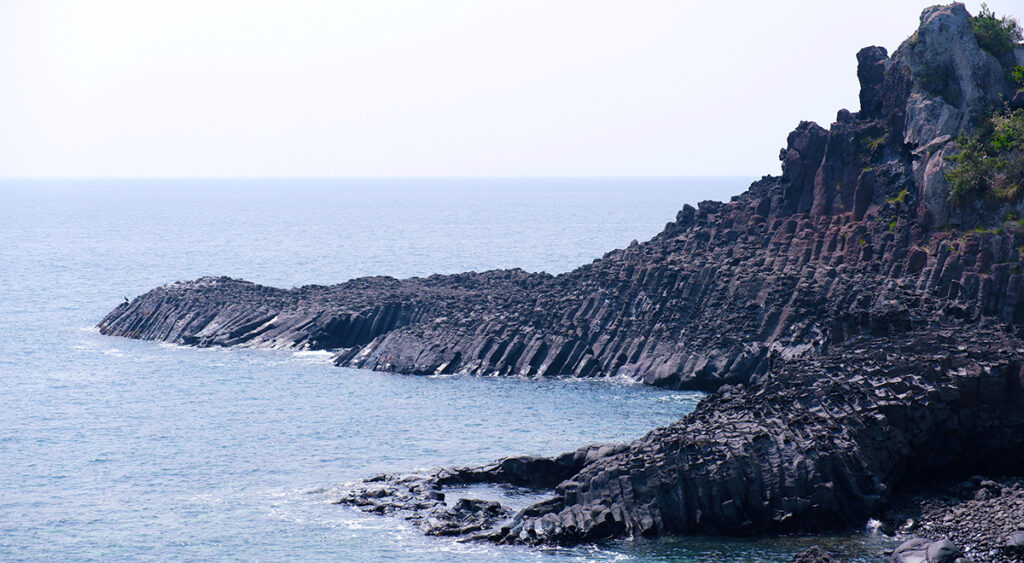
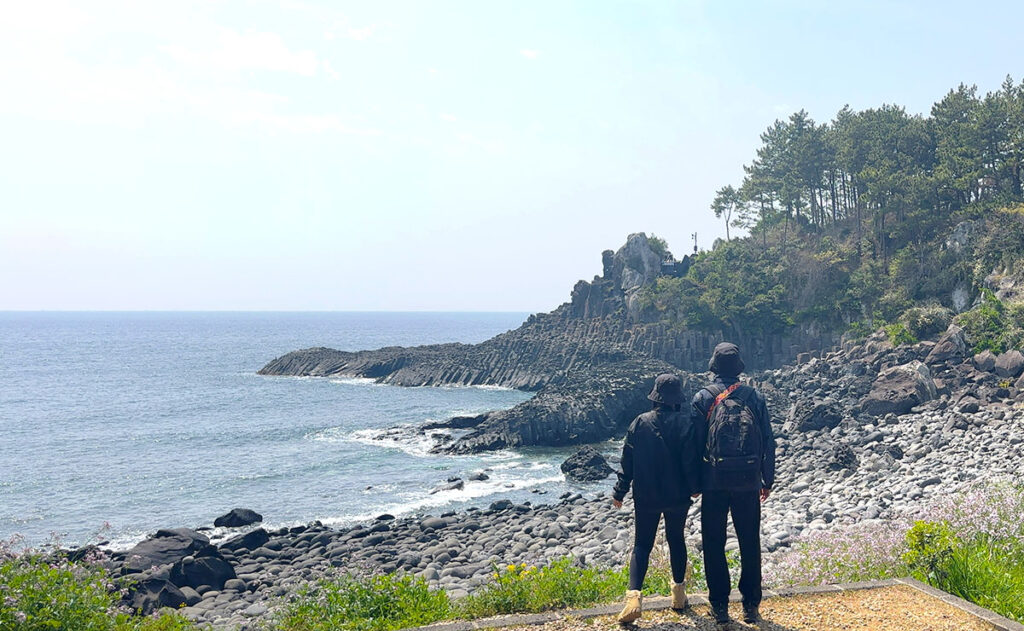
Eventually, we found ourselves in familiar territory—an area we often stroll through in the mornings. This stretch of the route passes by ICC Jeju (the International Convention Center) and several well-known luxury hotels.
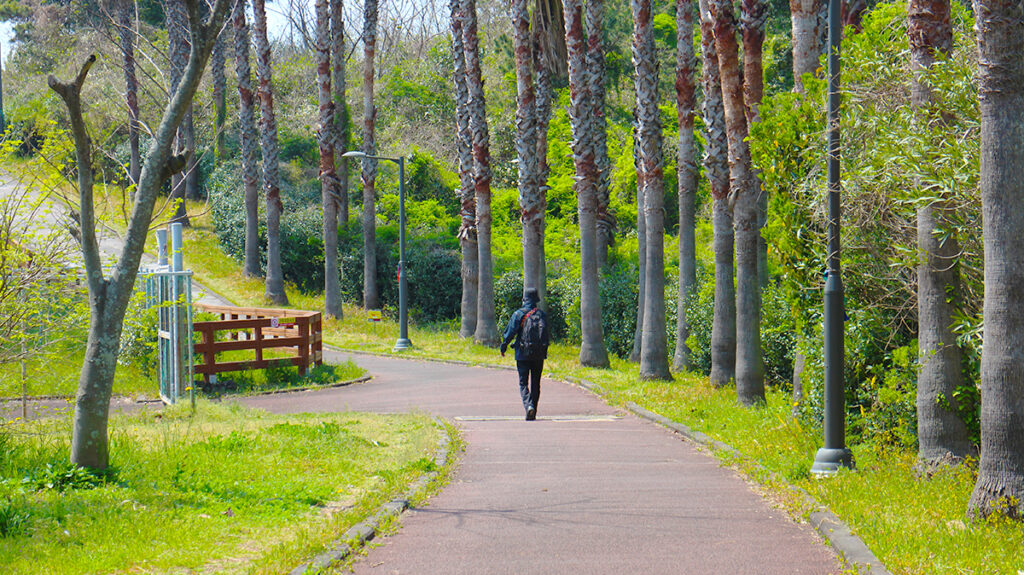
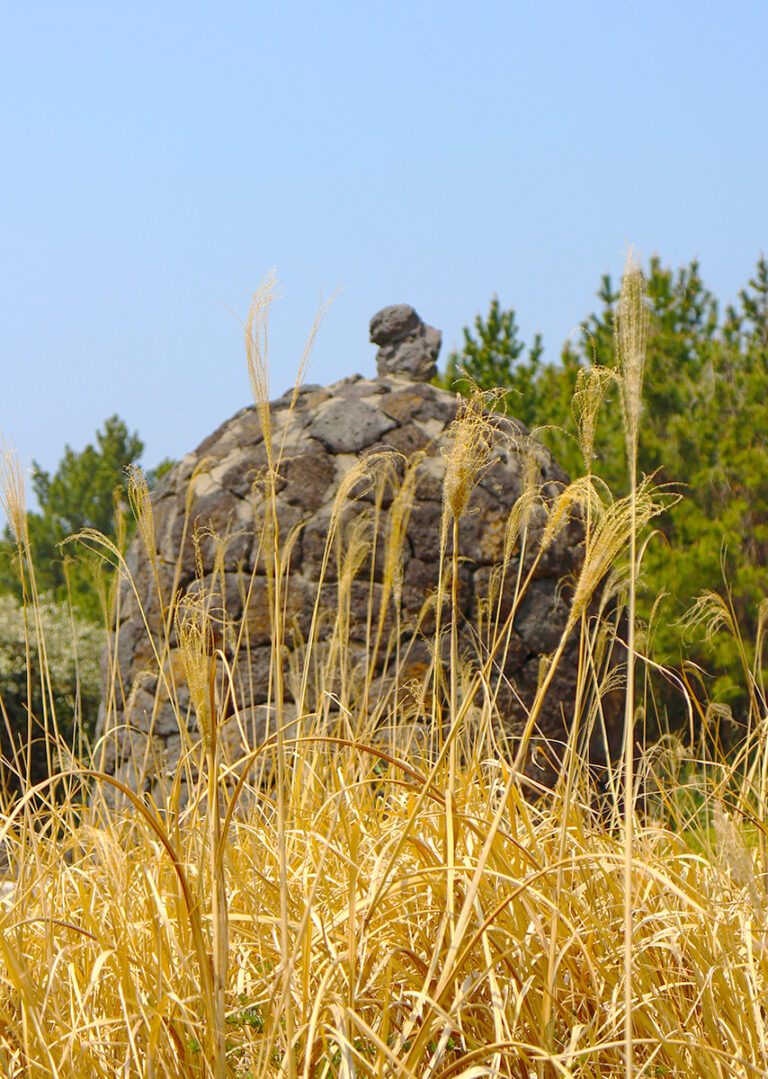
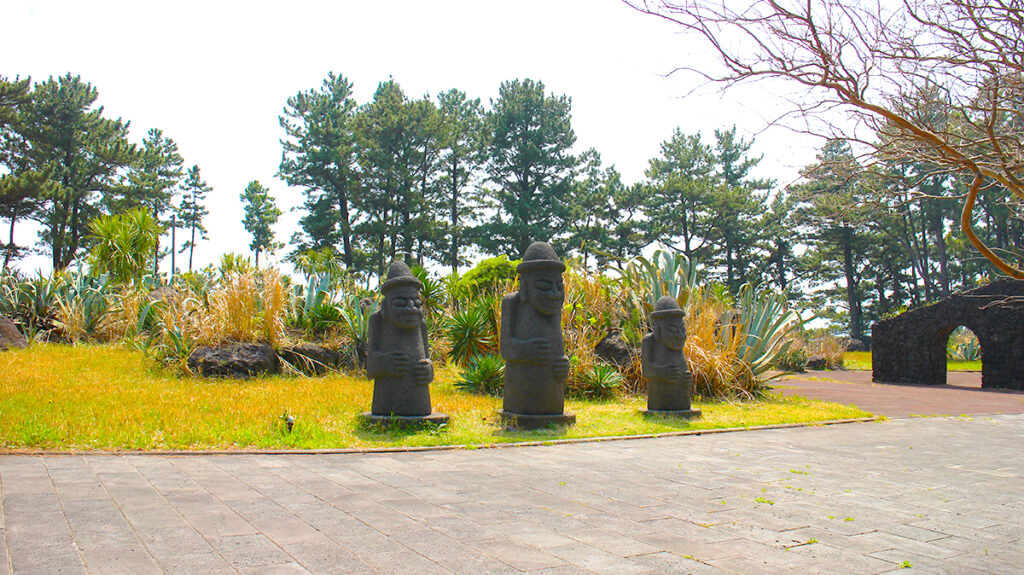
By 2:00 PM, we finally arrived at Jungmun Saekdal Beach, but by that time, the heat and hours of walking had really worn us out. We were completely exhausted.
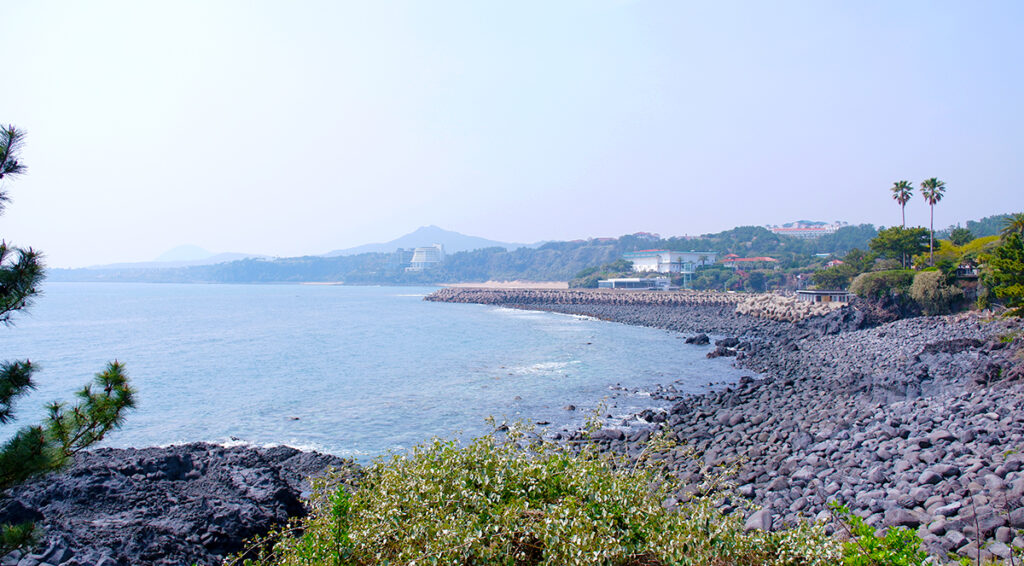
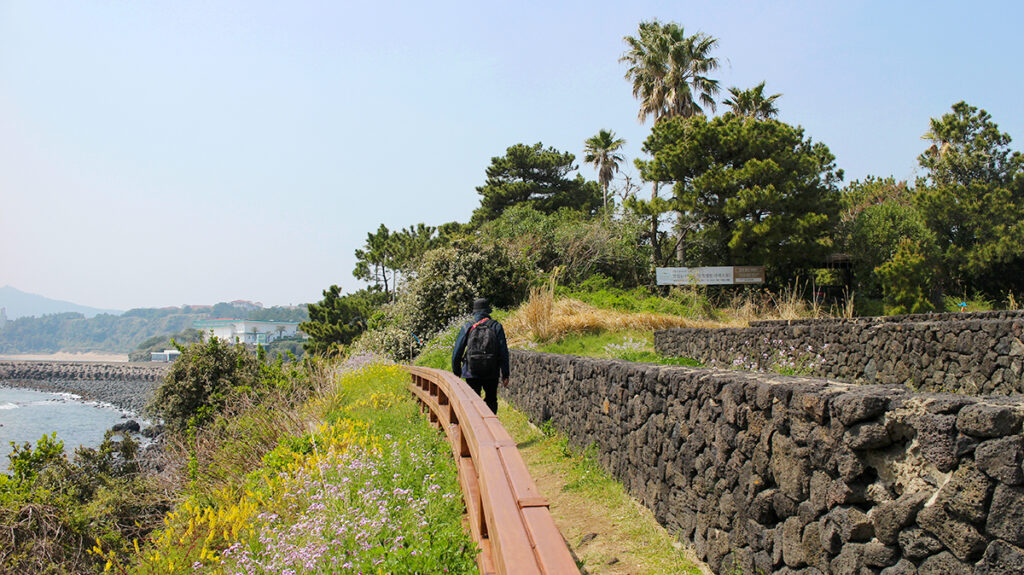
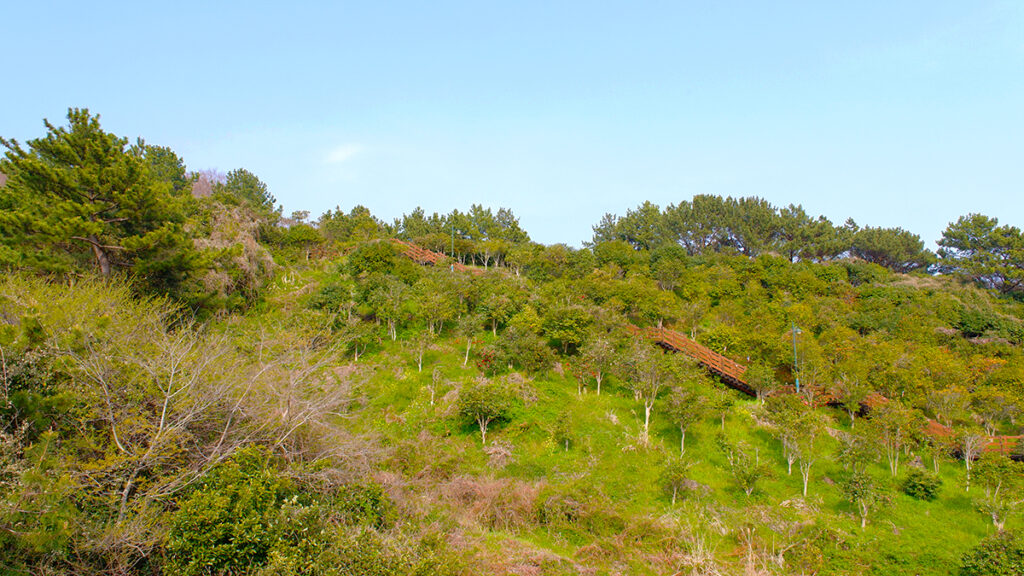
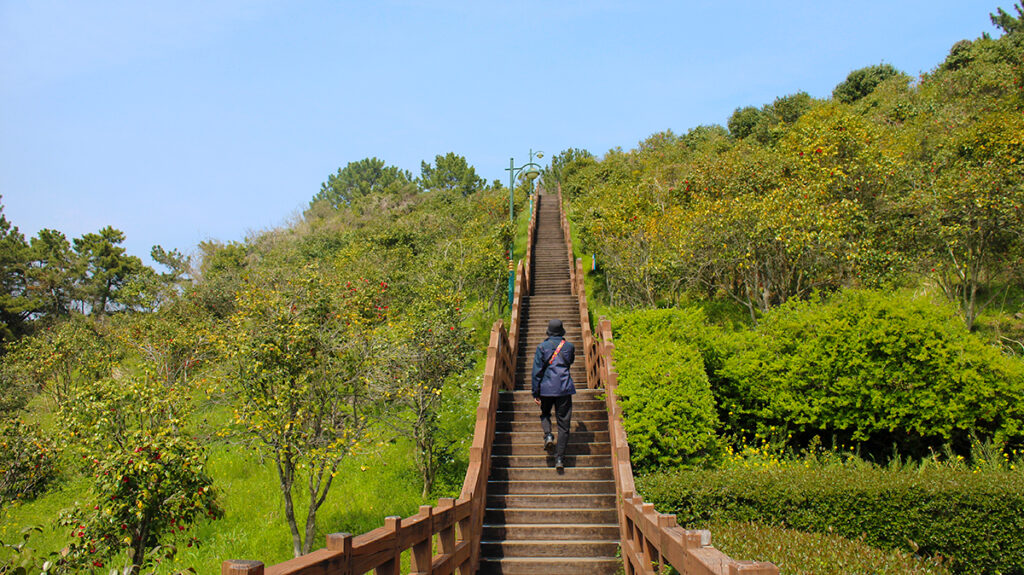
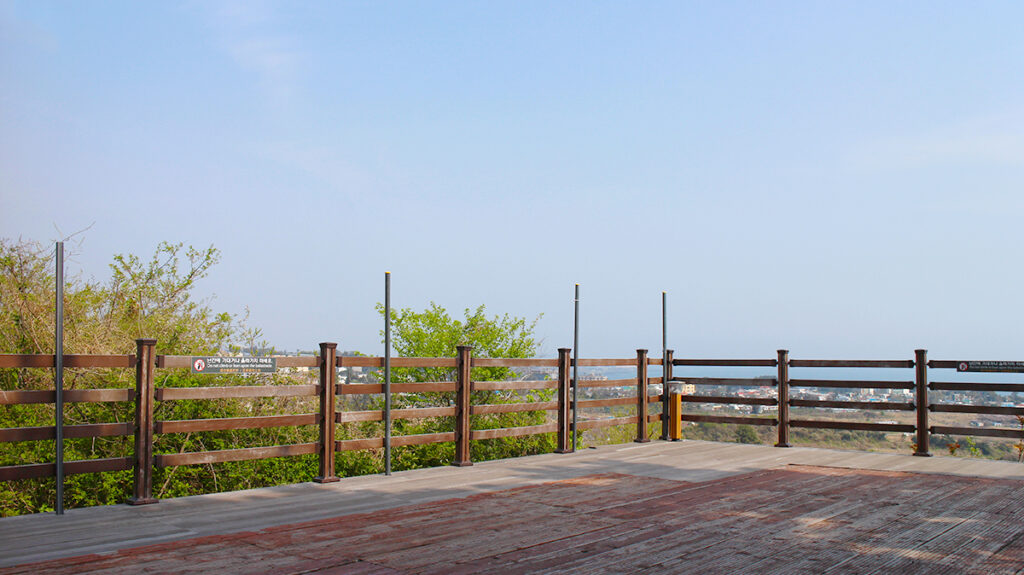

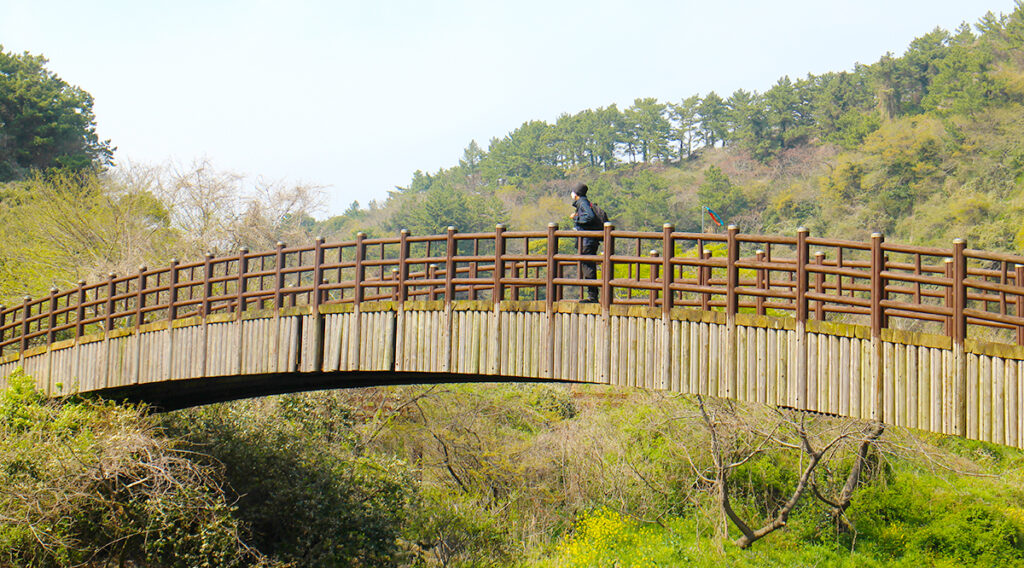
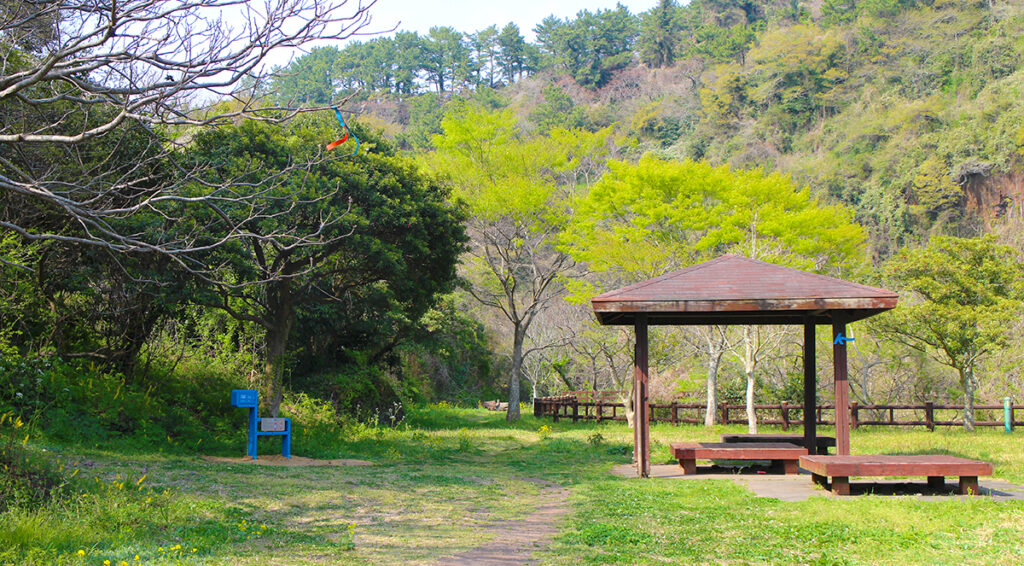
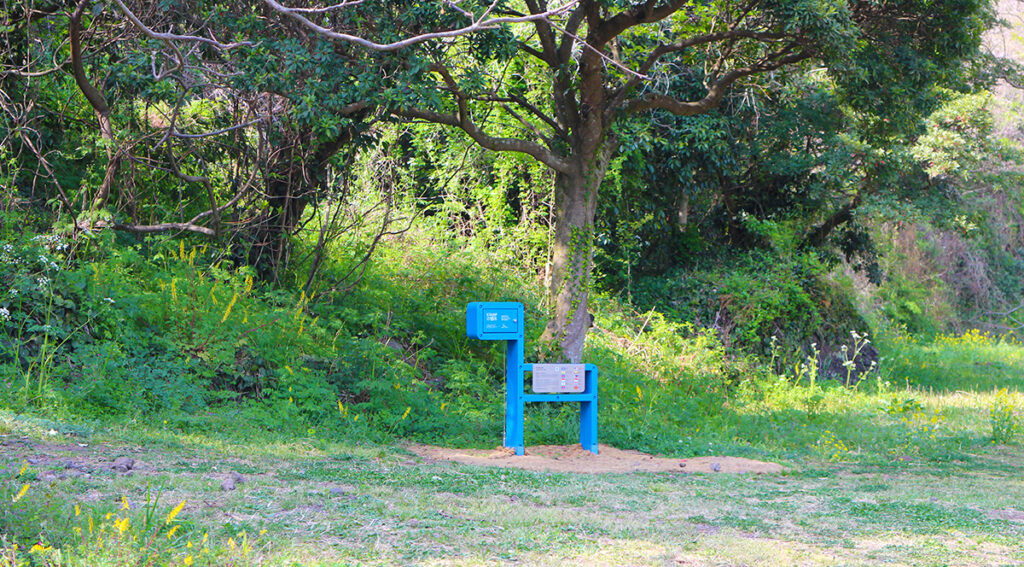
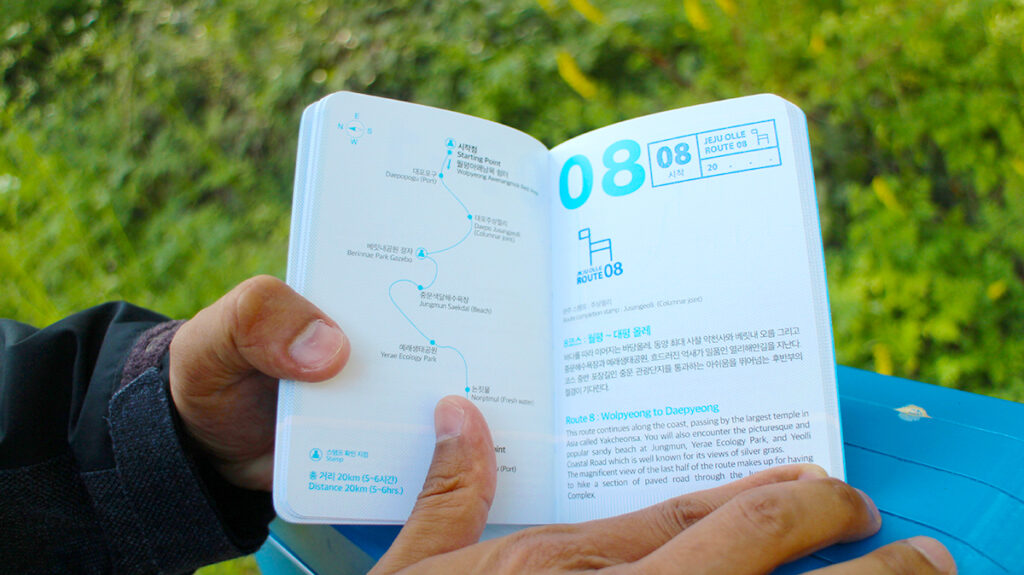
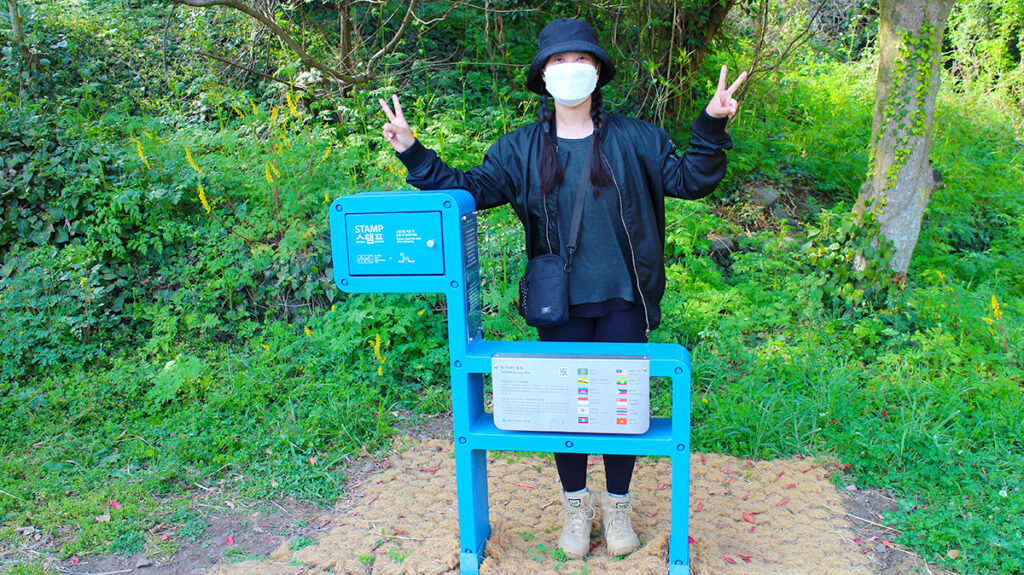
After getting our Olle passports stamped, we finished the last of our drinks and continued our trek. Since we had eaten all the snacks we brought, we decided to look for a convenience store near the route.
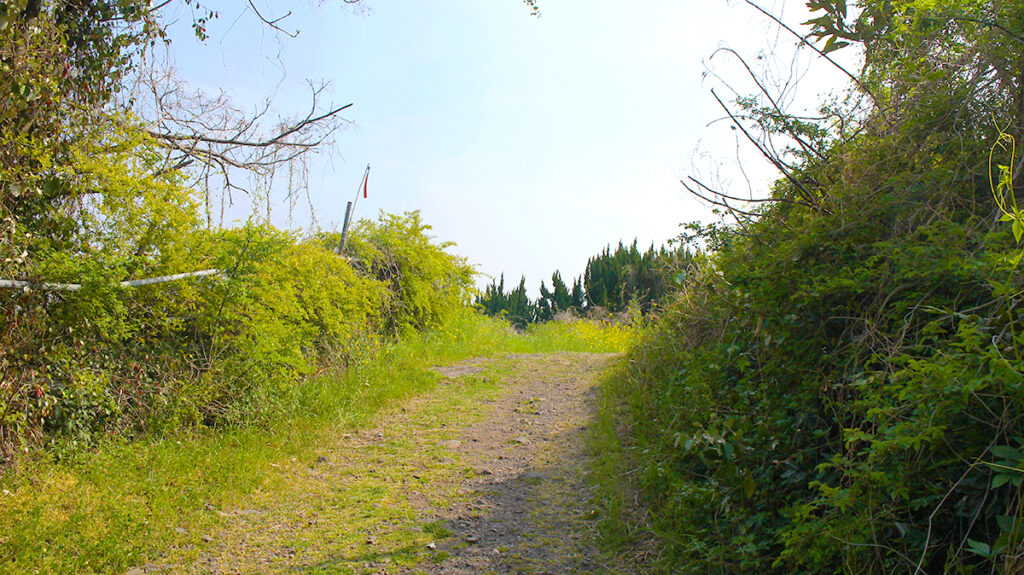
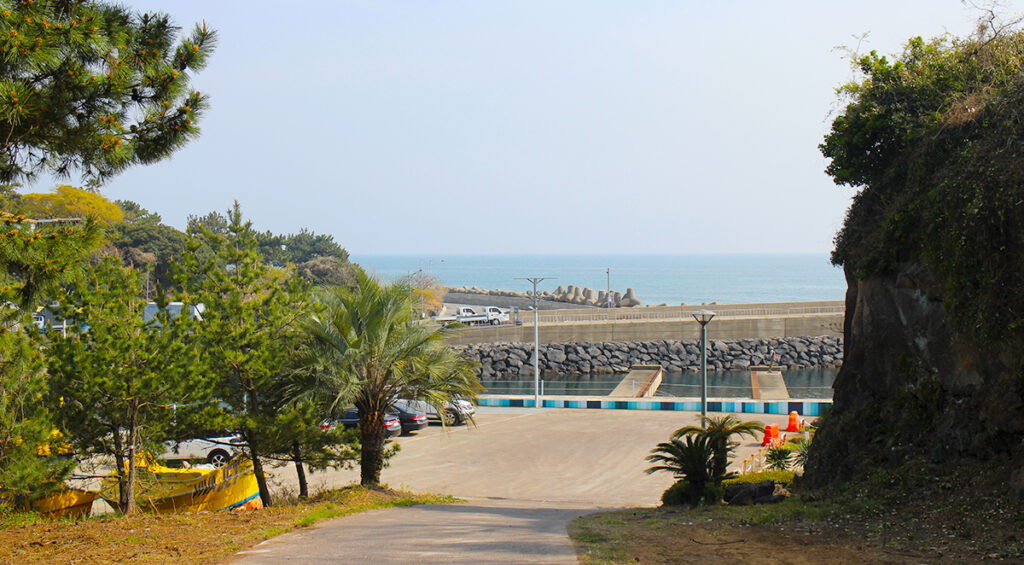
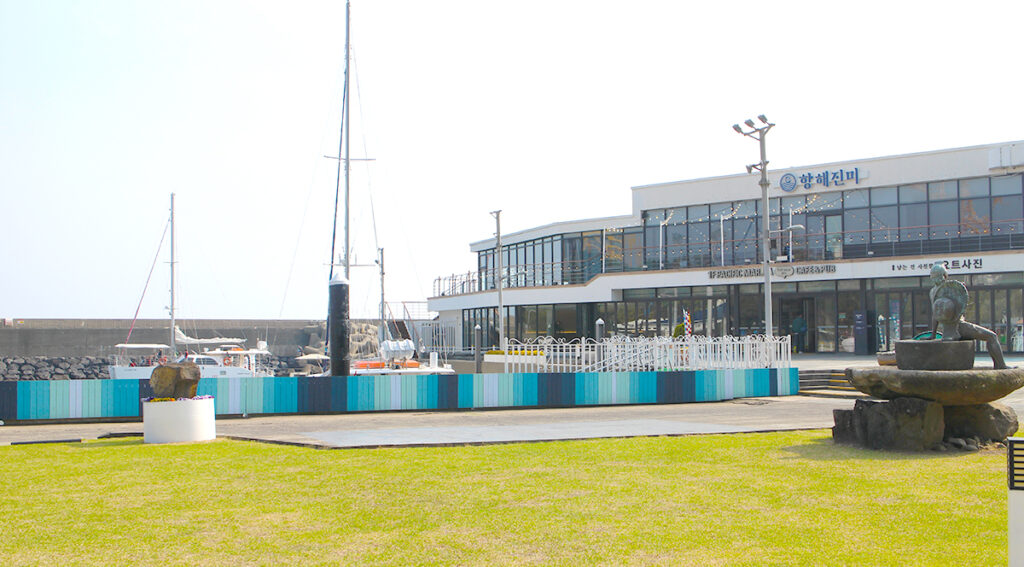
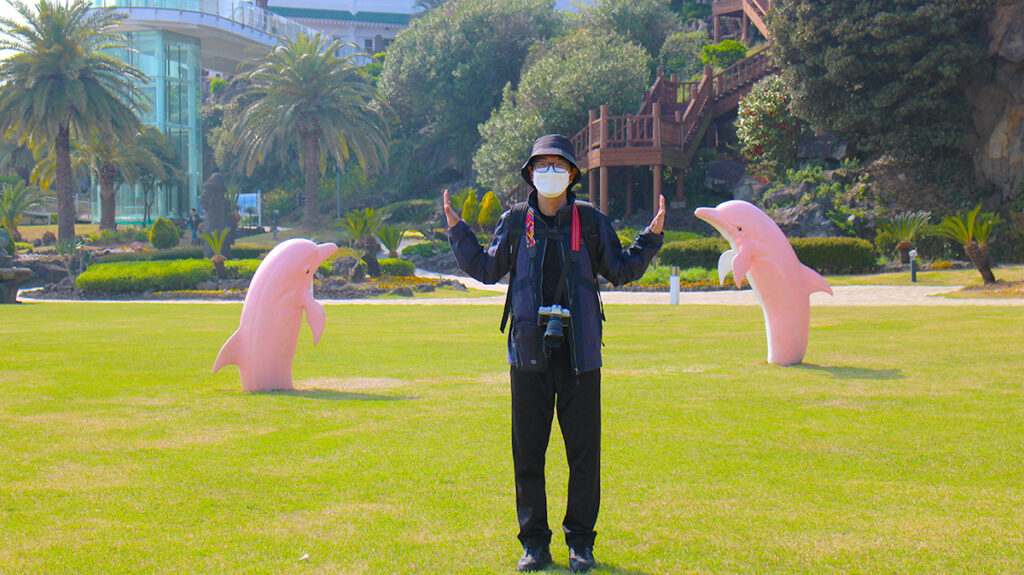
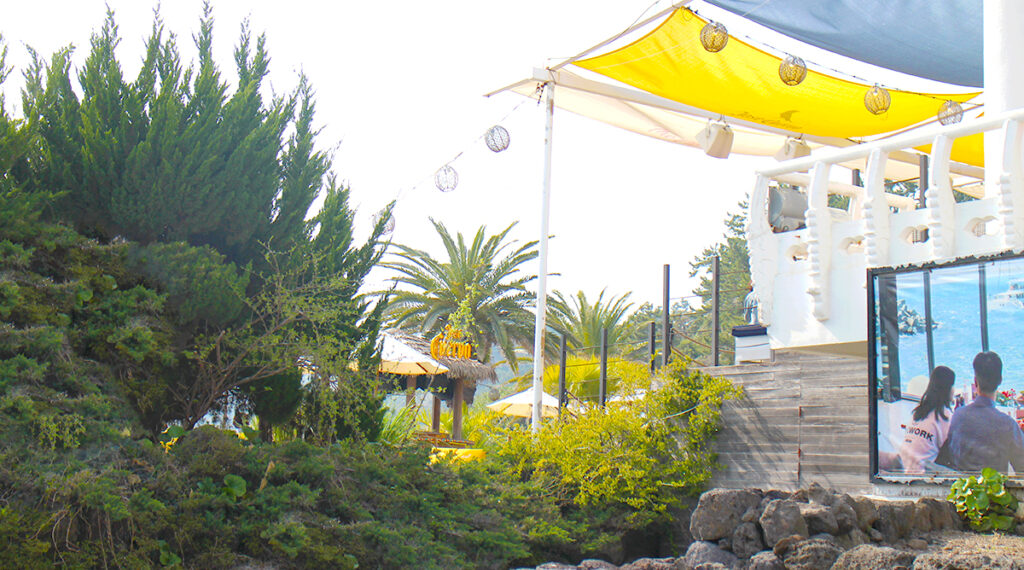
Once we grabbed a snack, our energy still didn’t bounce back, and our feet got even more sore and shaky. We started to worry about the time, so, judging by how our bodies felt and our pace, we decided to stop for now and continue the next day to give ourselves proper rest.
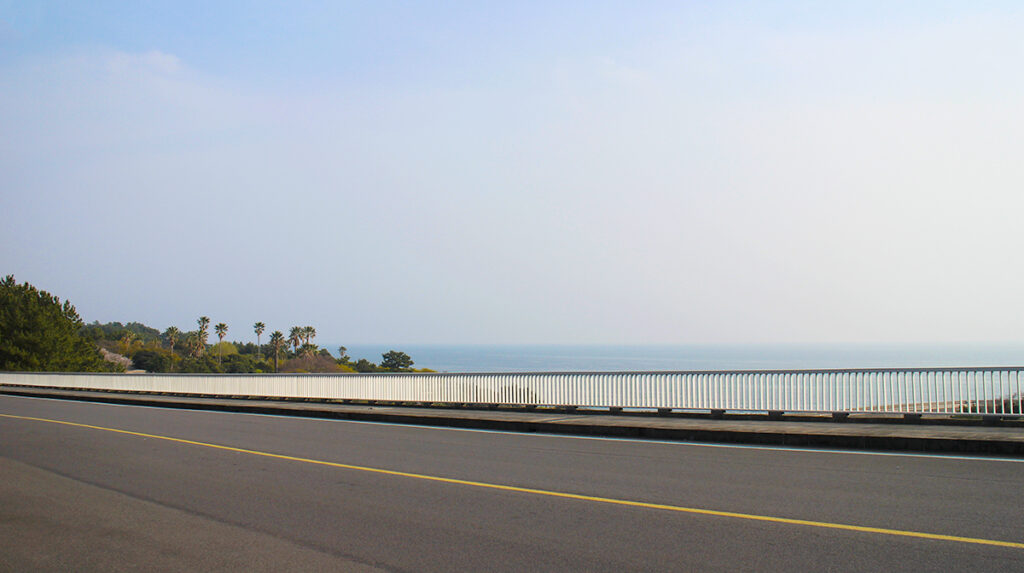
Recap Images
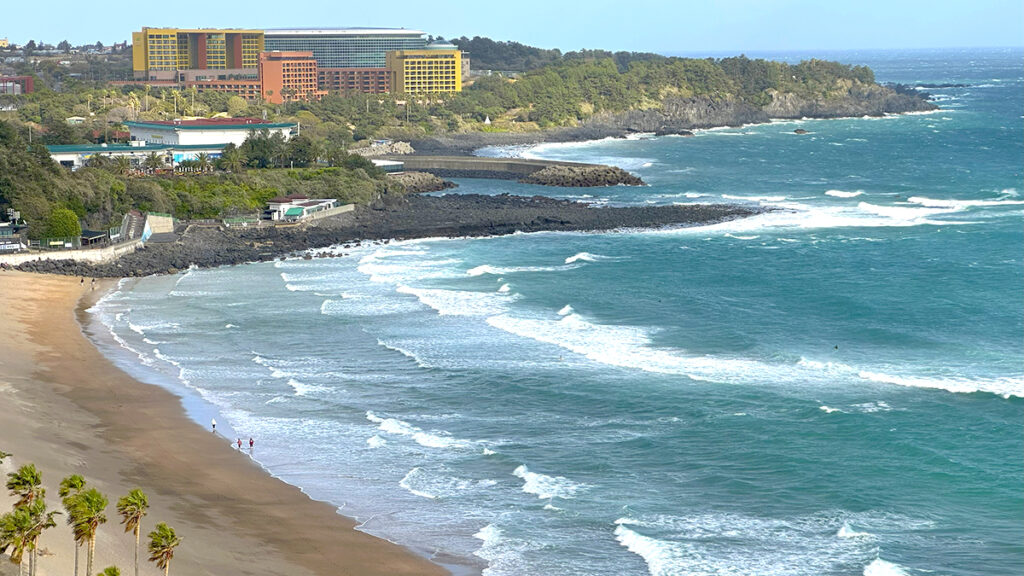
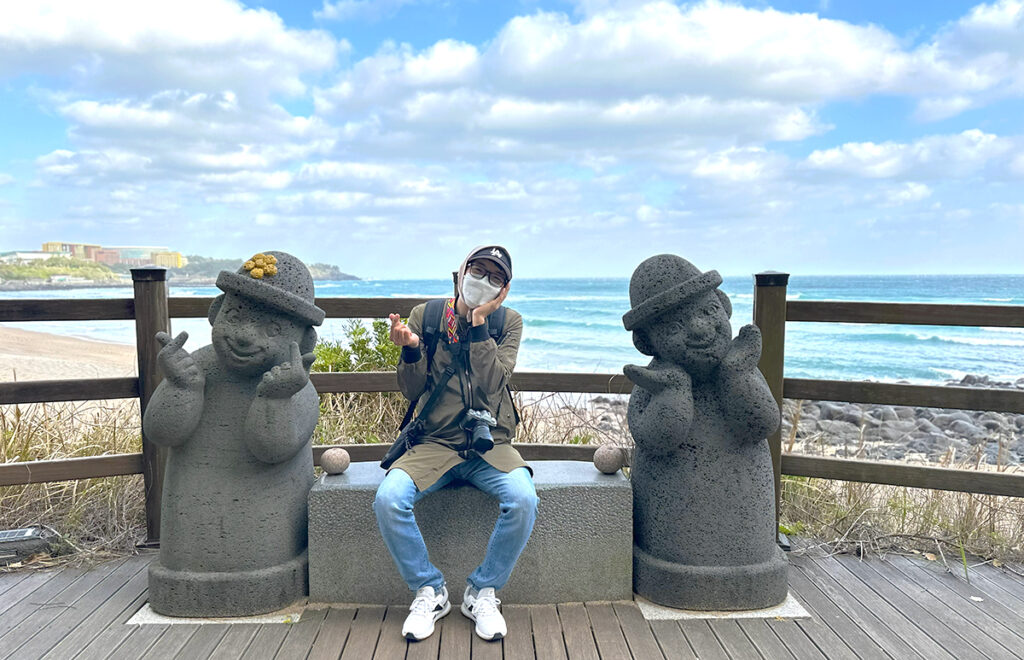
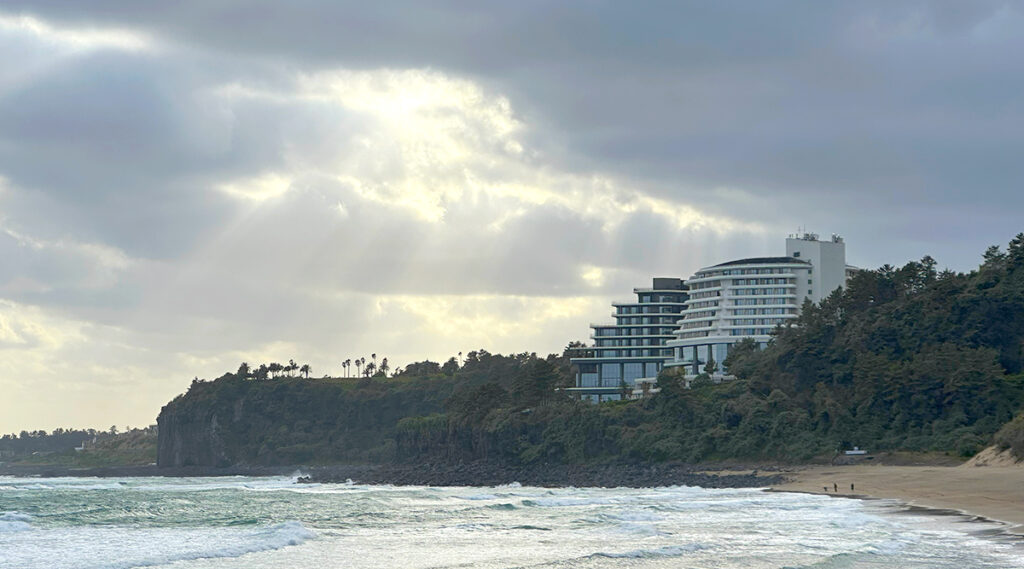
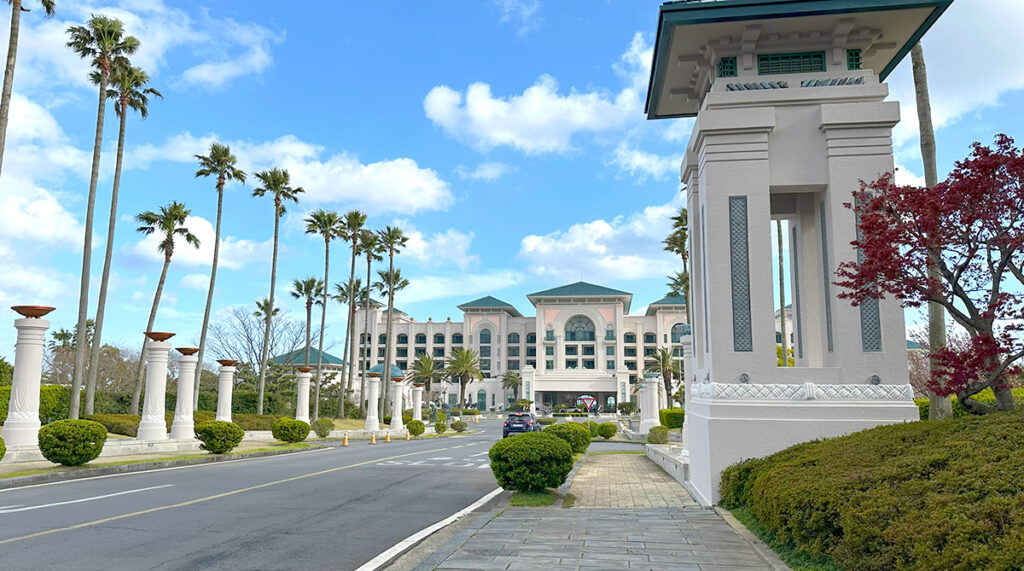
We made it back home and promised ourselves a full day of rest to recover our tired bodies and aching feet. The plan was just a quick break—but spring weather in Jeju can be unpredictable. It rained heavily the next day, so we ended up resting for two full days before getting back on the trail. Looking back, we’re really glad we gave ourselves that time.
Here comes Part Two of our Route 8 adventure—just as beautiful as the first!

Setting off again after two days of rest actually gave us the perfect chance to fully recover.
Honestly, thank God it rained the next day—our bodies were way too sore to do anything, especially trekking. And as if that wasn’t enough, we were blessed with perfect weather once we got back on the trail. We couldn’t be more thankful for the timing.
Just part of our usual routine—breakfast at McDonald’s to fuel the day, then we headed back to where we left off: the midpoint stamp. We wanted to keep our record clean and honest, no shortcuts or skipping parts. It matters to us that we walk the trail the way it was meant to be walked. So, we picked up exactly where we stopped and continued our trek, following the red and blue ribbons faithfully—just as it should be.
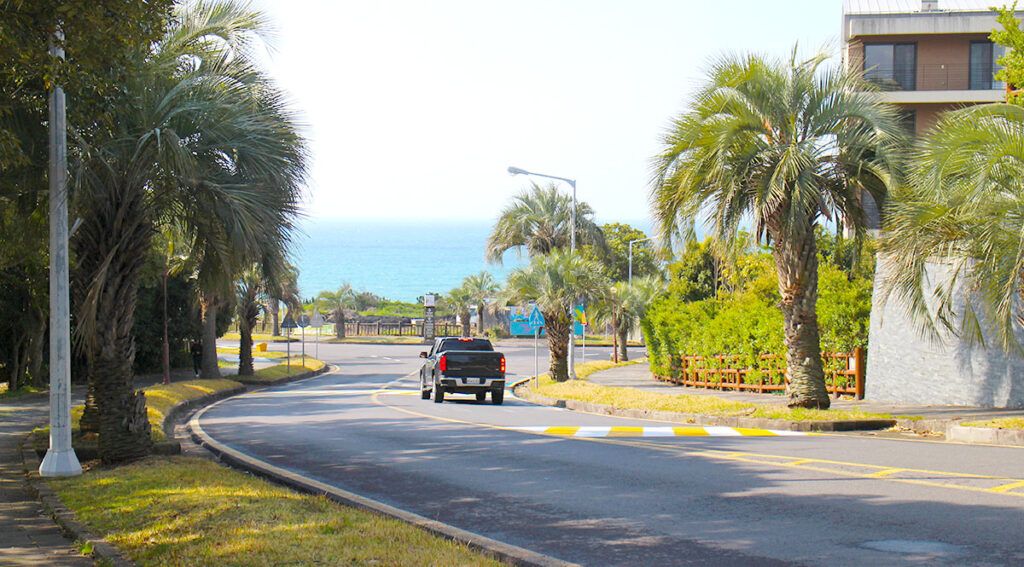
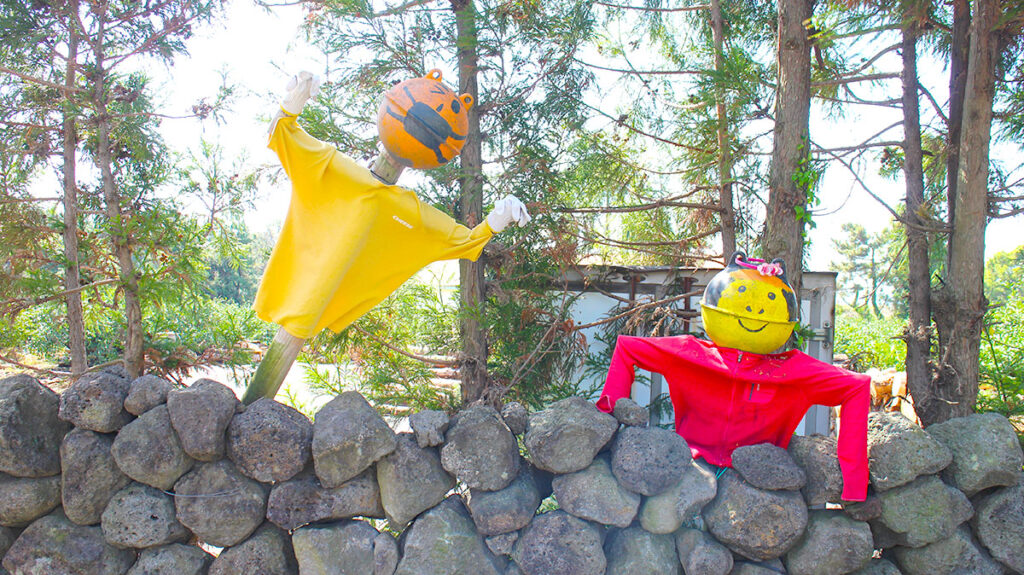
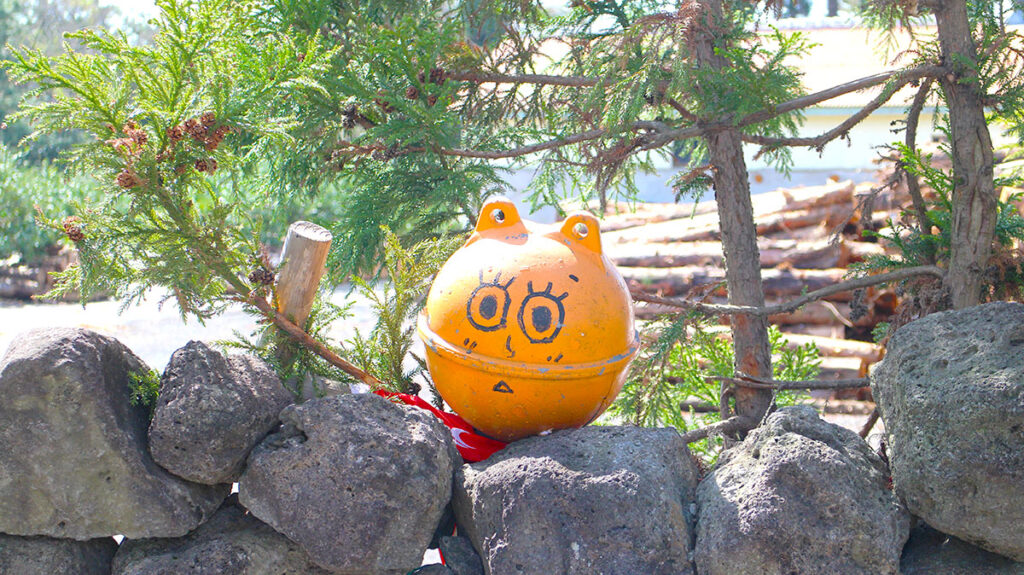
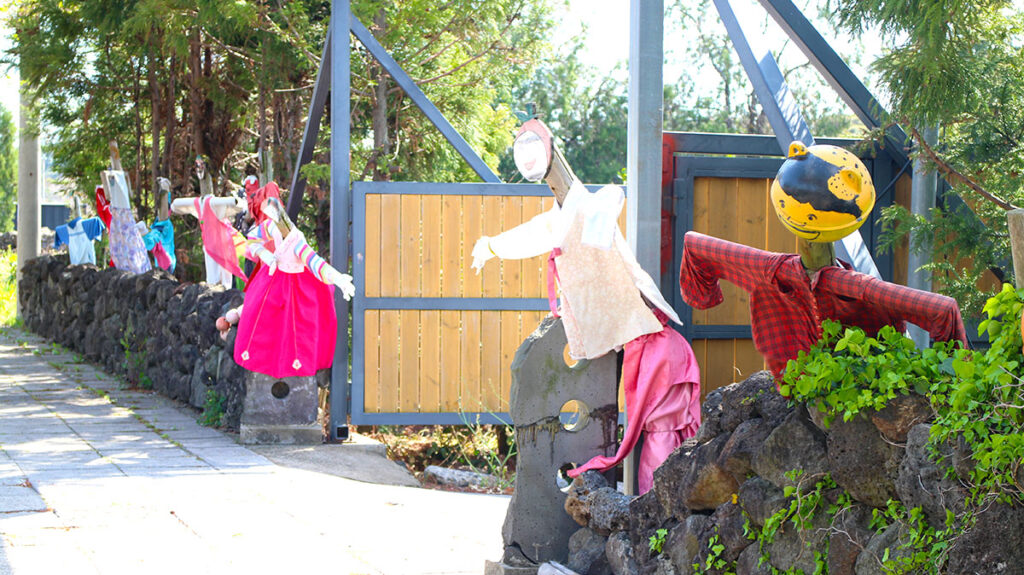
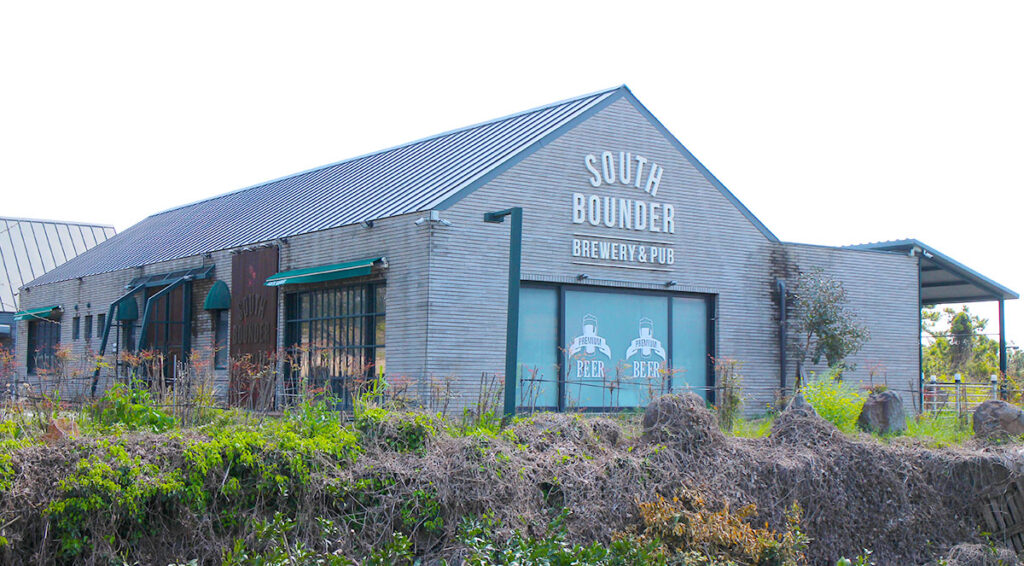
Not long after leaving the midpoint stamp spot, we came across a wide canola flower field, with the majestic Mt. Hallasan rising in the background. It was one of those moments that stopped us in our tracks—we couldn’t resist taking photo after photo of the breathtaking scene.
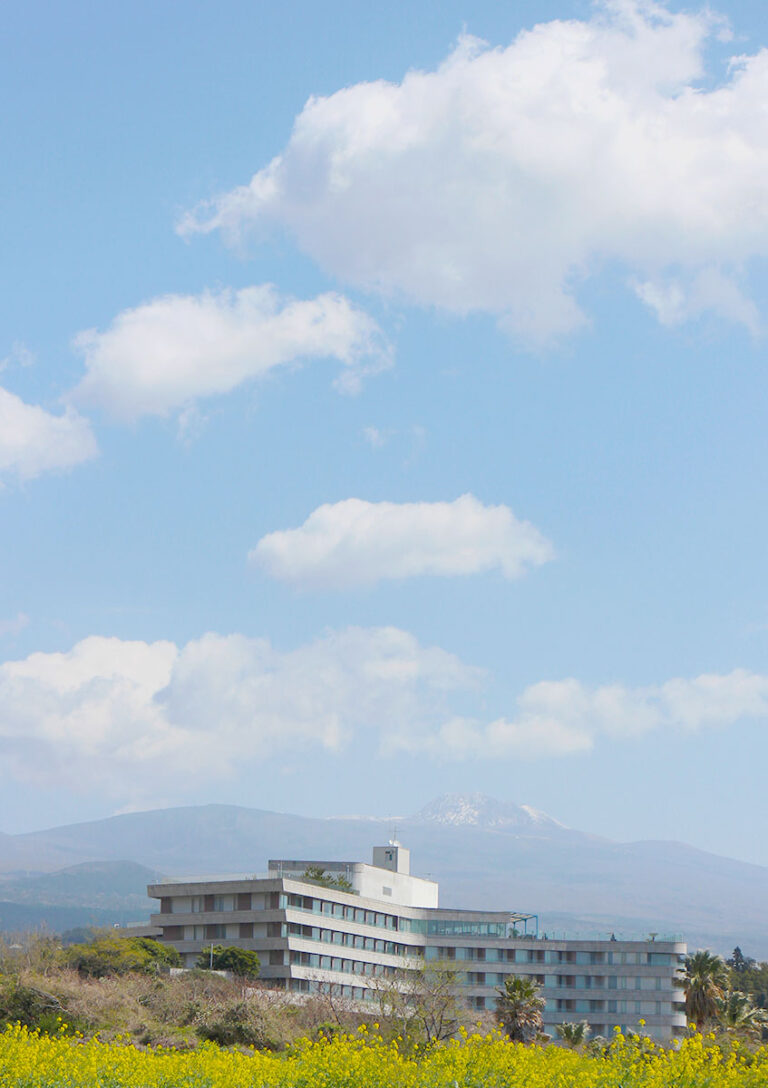
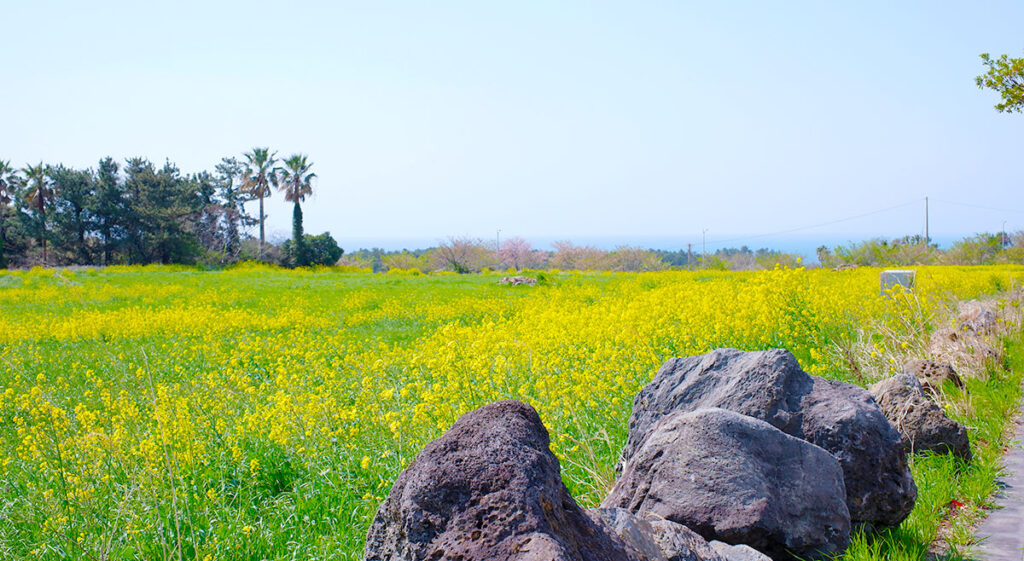
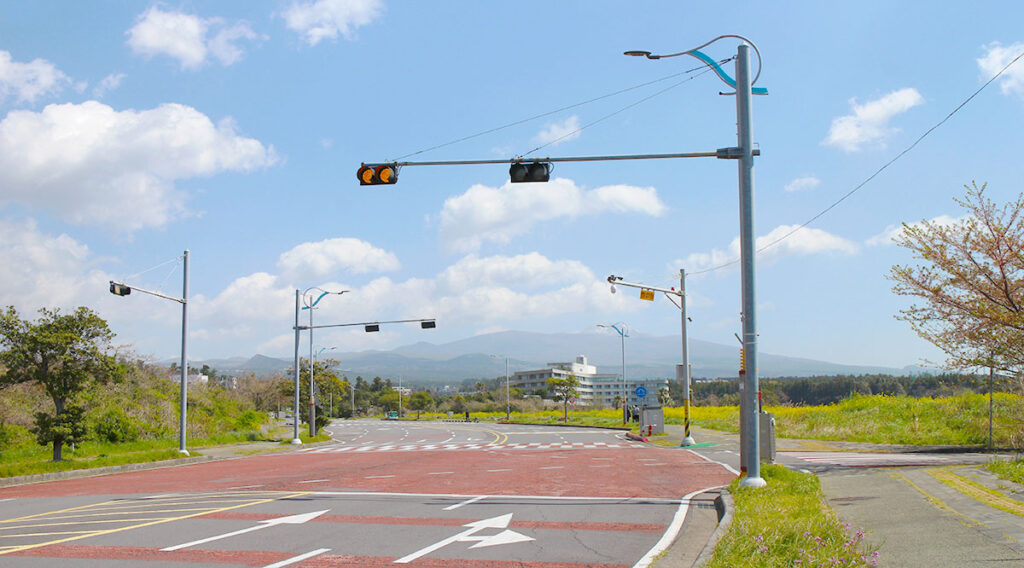
This next section of the trail leads to Yerae Ecological Park, a place we visited before during cherry blossom season. This time, the landscape was lush and green, with spring water forming small waterfalls and streams along the way.
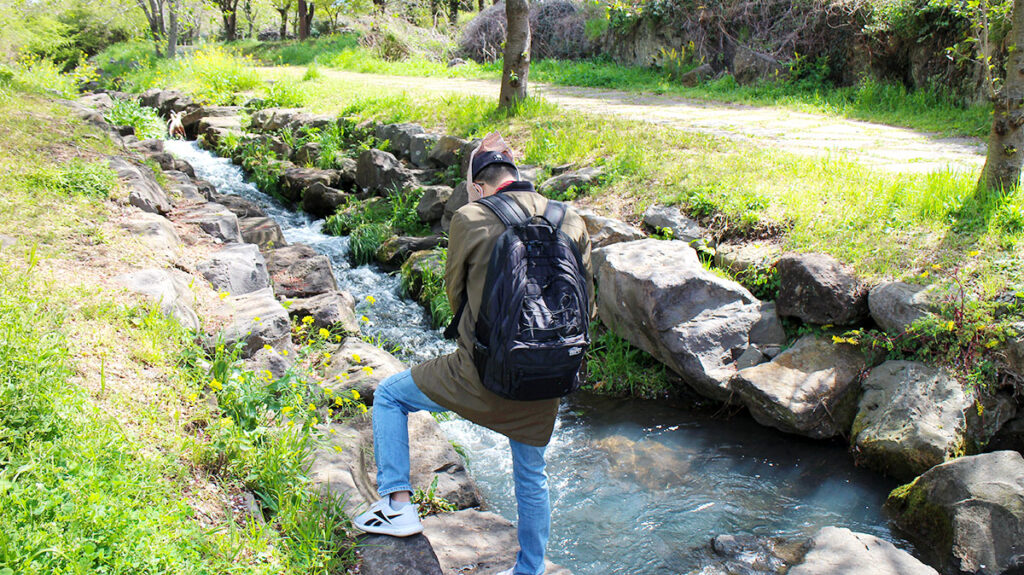
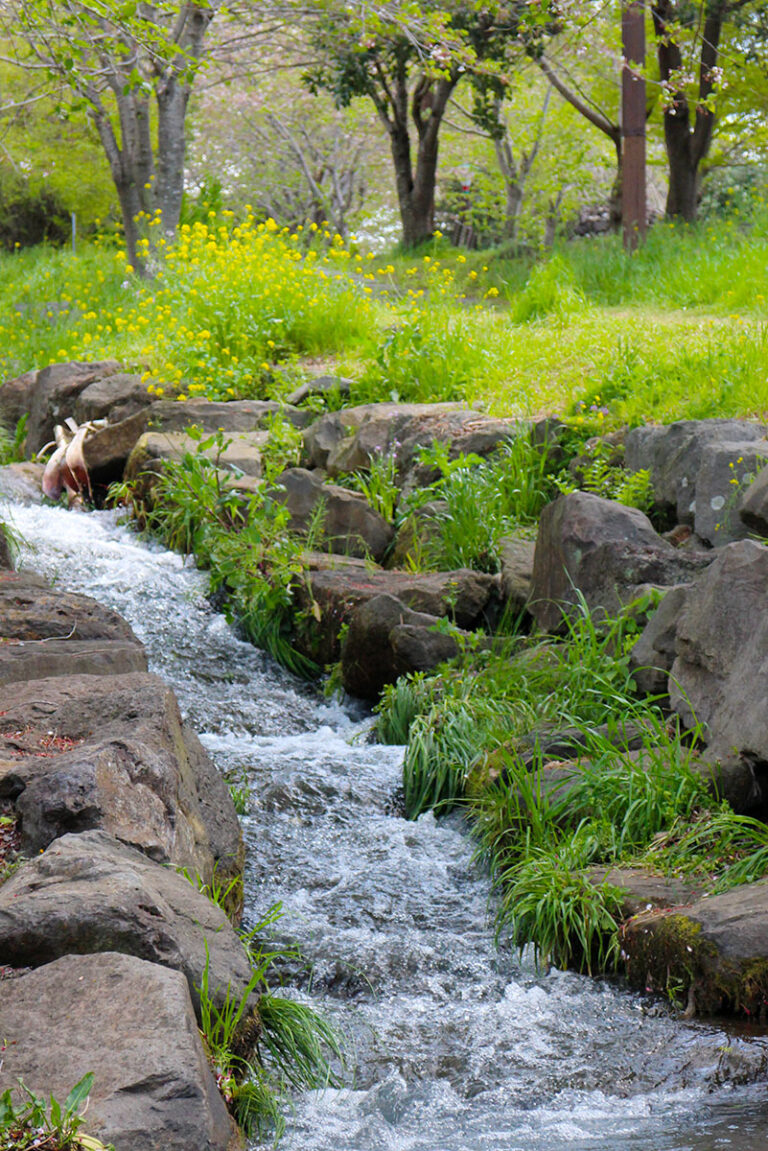
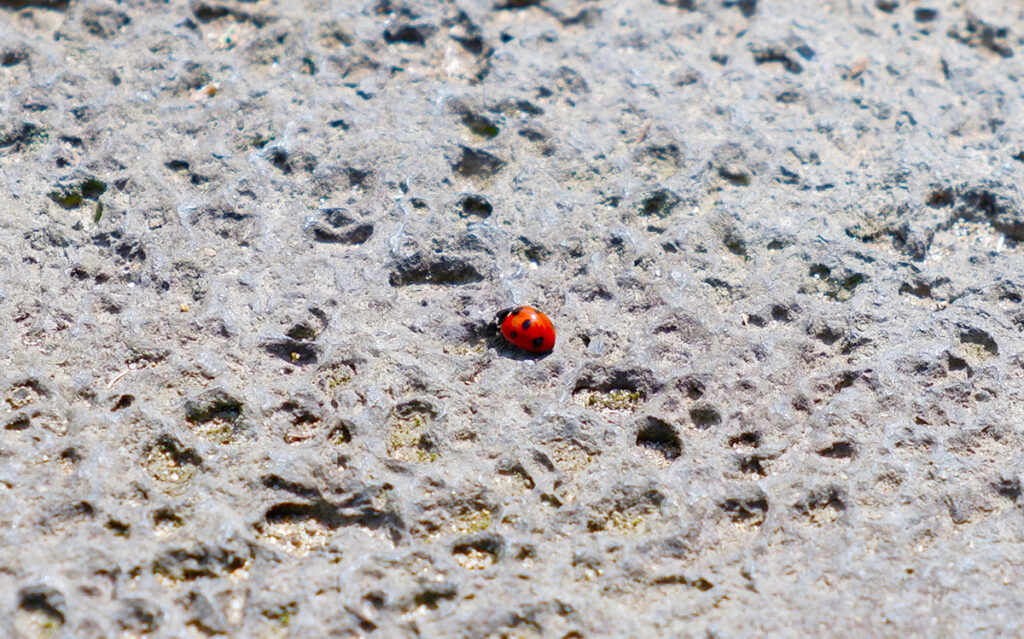
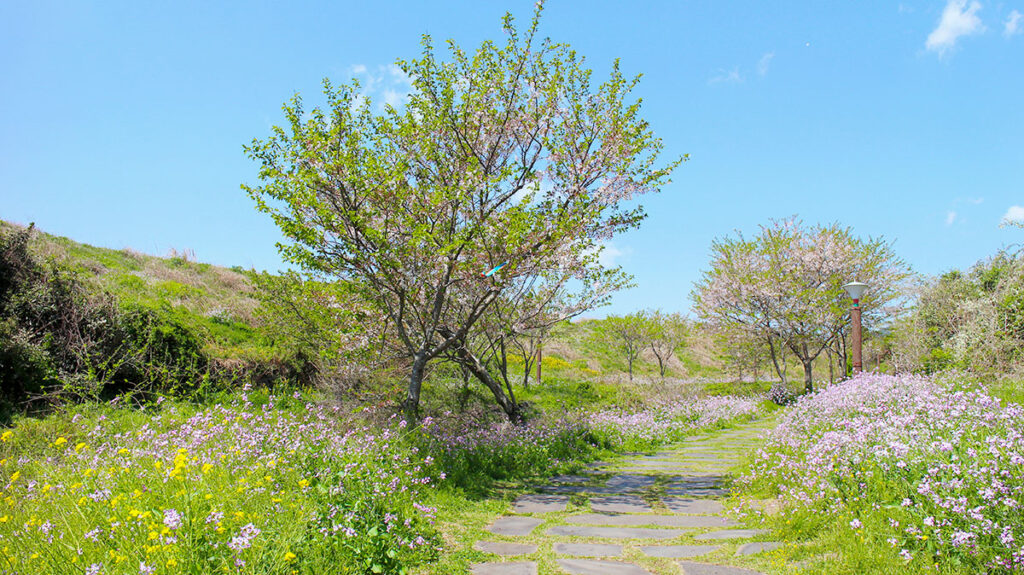
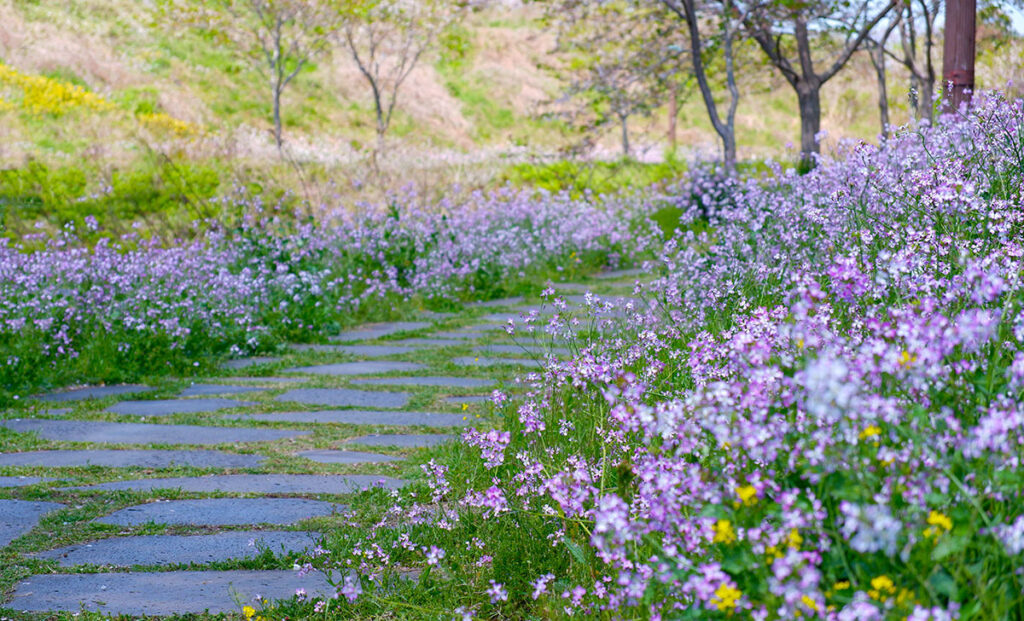
As we continued, we stumbled upon an eerie, half-resort, half-complex structure—abandoned and quietly deteriorating just before the coastal cliffs. Locals and hikers often refer to it as a ghost village. Reportedly, it was originally intended as part of a large multi-purpose resort with Malaysian investment, but legal disputes with local residents over its intended use brought the construction to a halt. What remains now is a haunting, unfinished site—rows of skeletal buildings, rusting rebar, and empty corridors slowly succumbing to nature. Though unmapped and unofficial, its unsettling appearance makes it impossible to miss along Route 8.
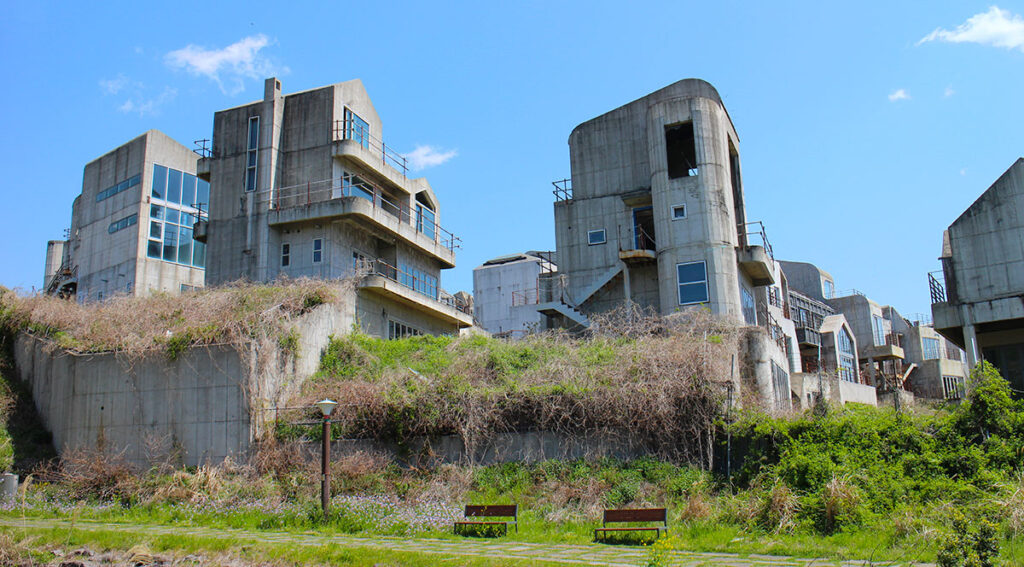
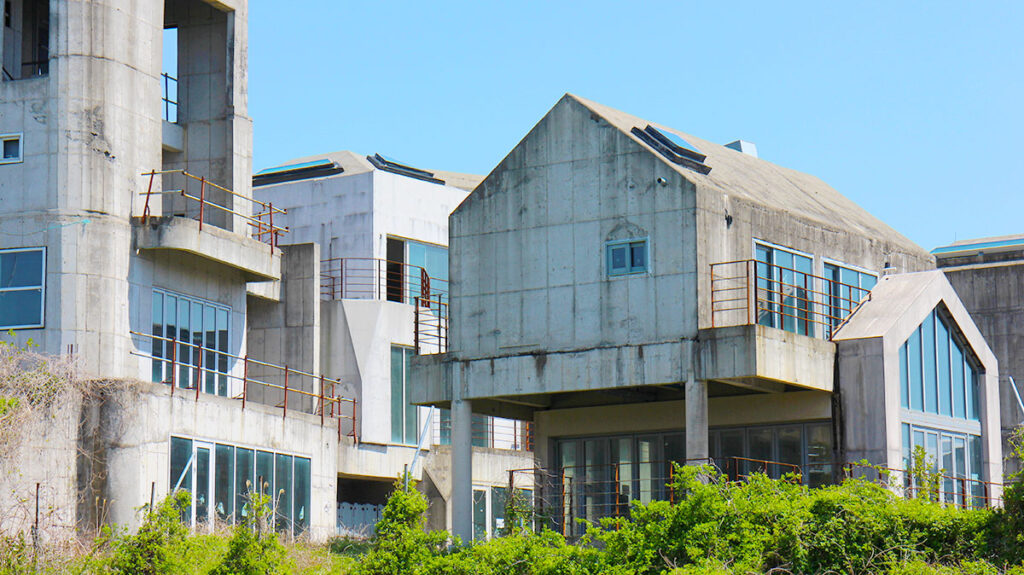
From there, we walked along the stunning Yeolli Coastal Road. It’s famous as a scenic drive, but seeing it on foot feels way more special. The ocean stretched out endlessly beside us, crashing against Jeju’s rugged volcanic rocks. It looked like it’d be perfect for surfing, but honestly, it’s way too rocky to try. The whole vibe here truly captures the spirit of Jeju—natural, rugged, and full of character.
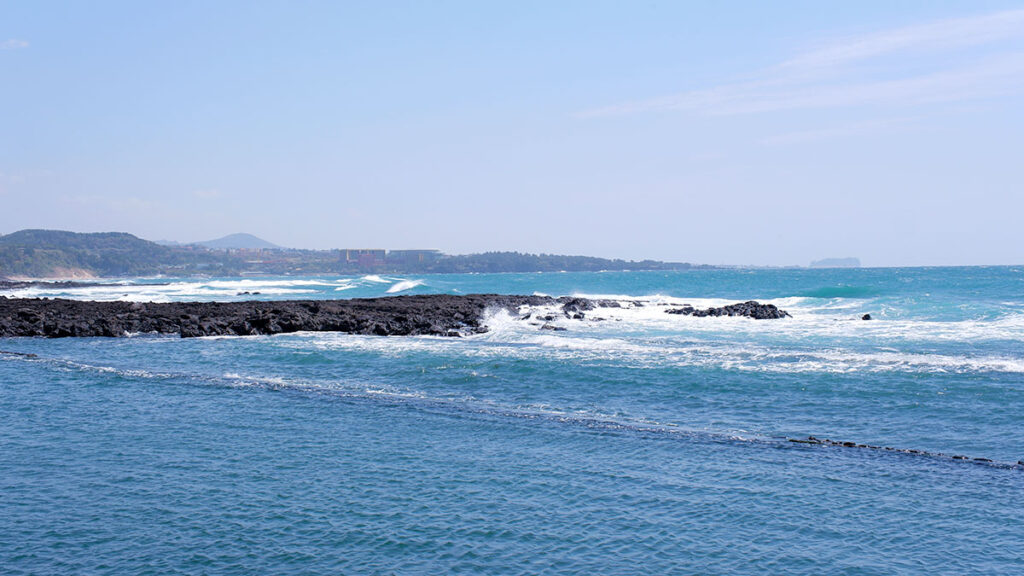
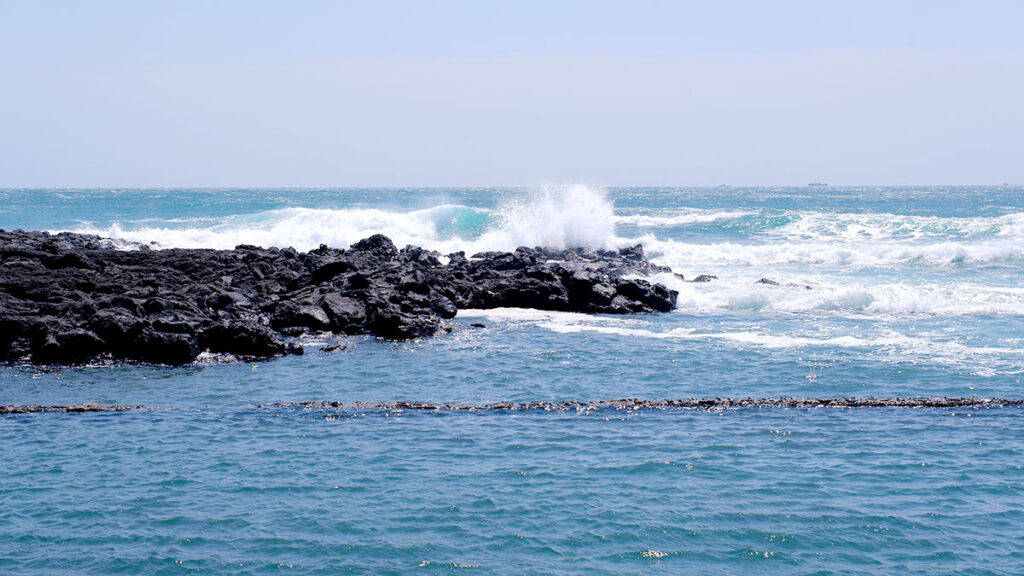
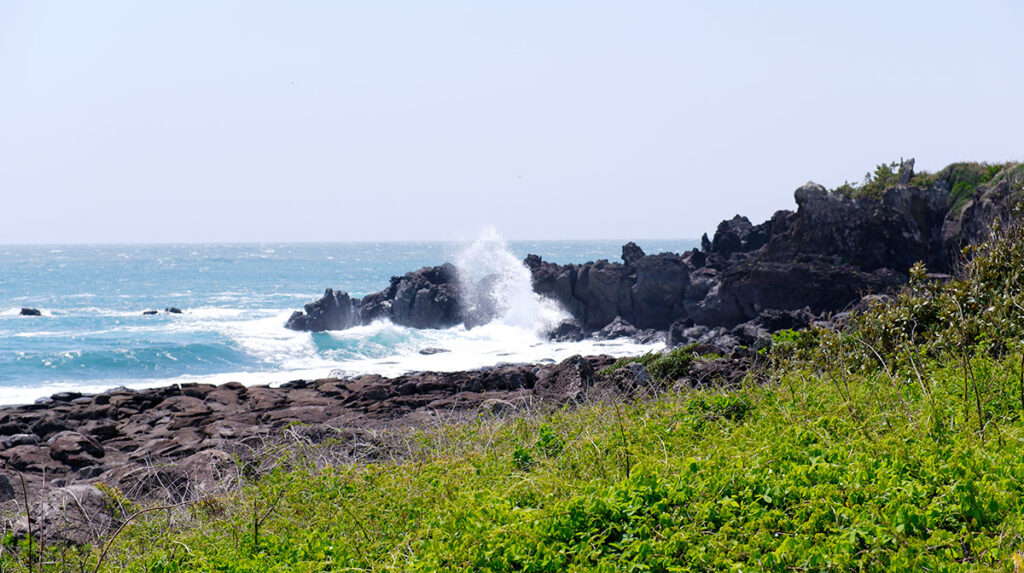
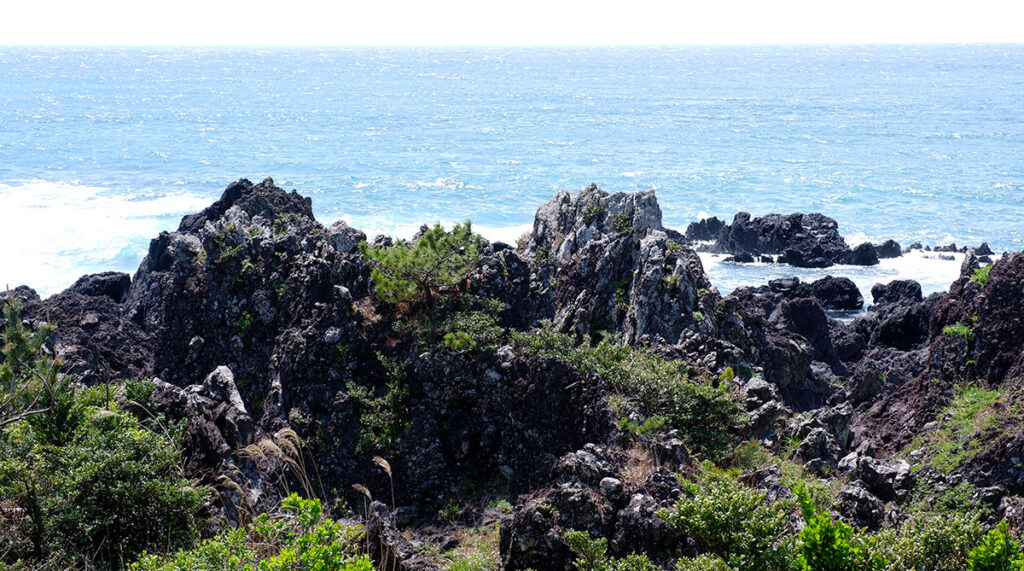
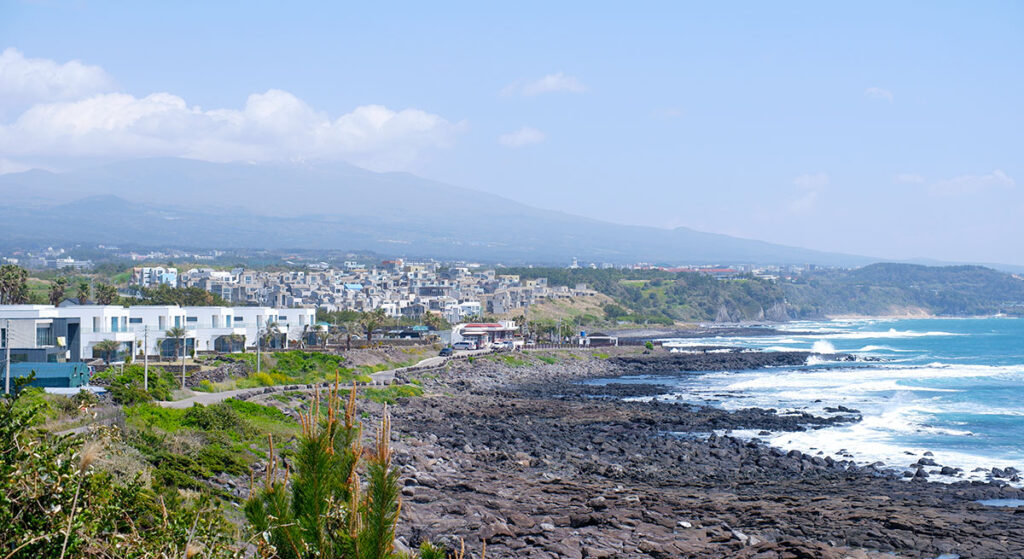
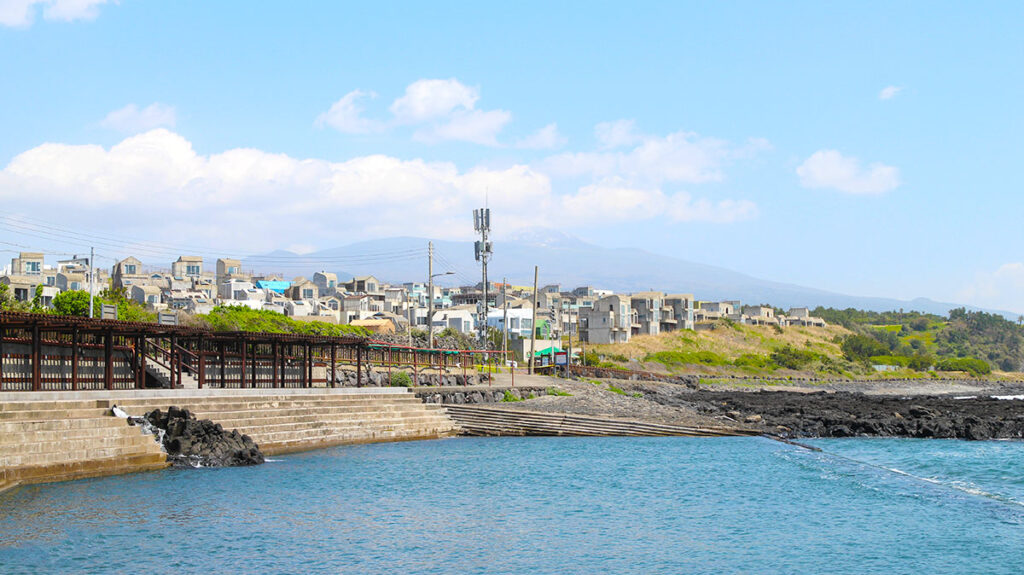
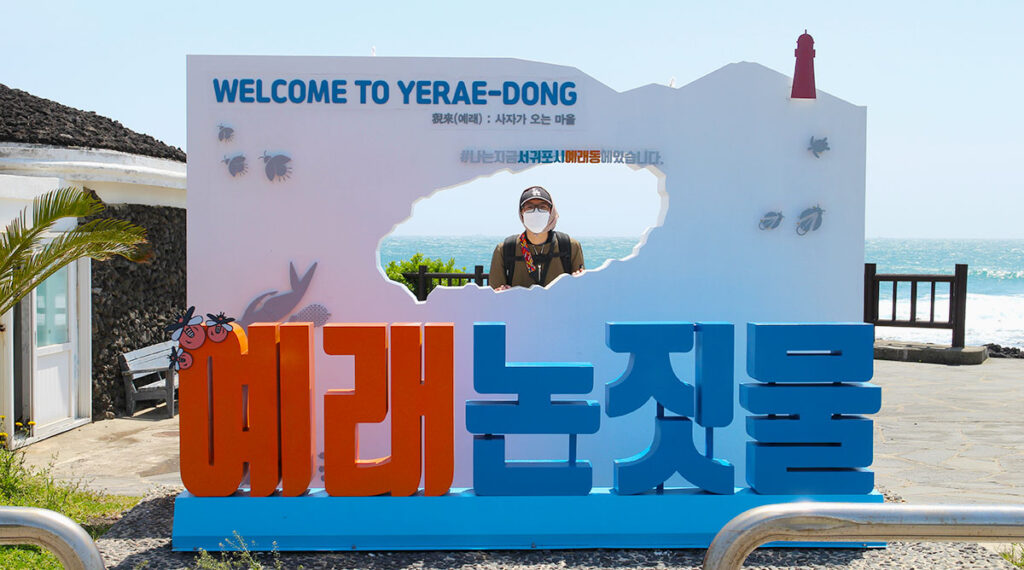
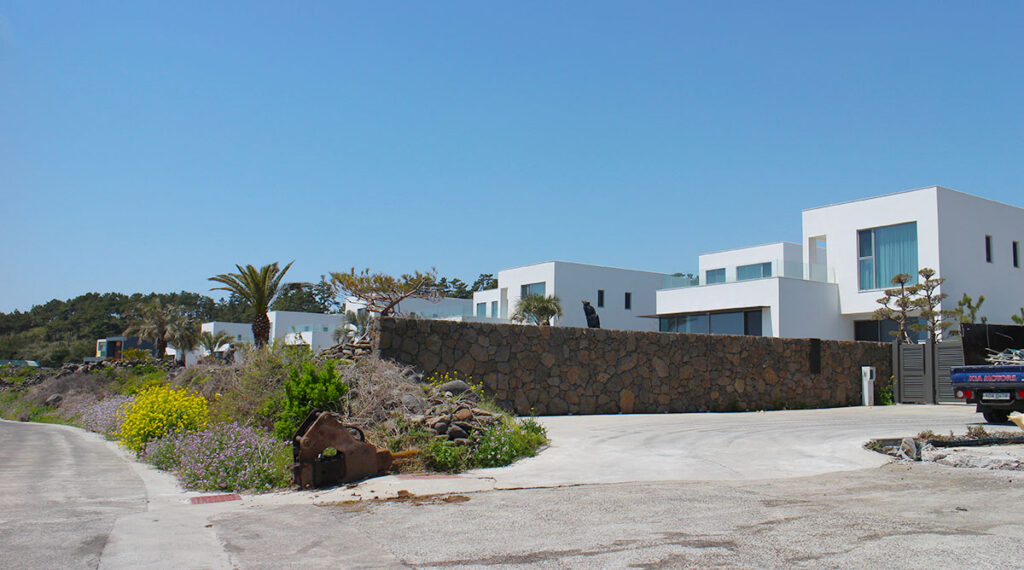
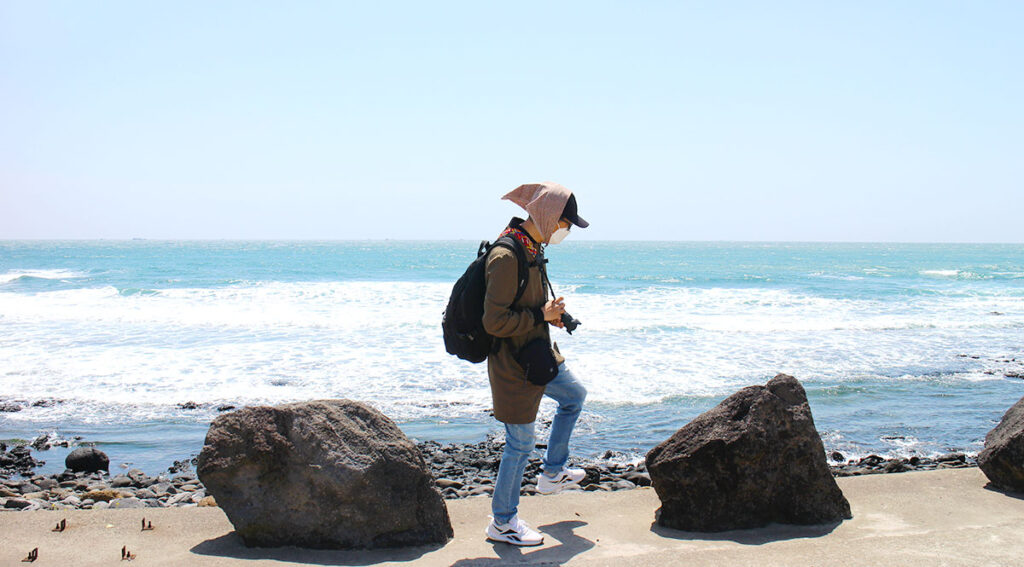
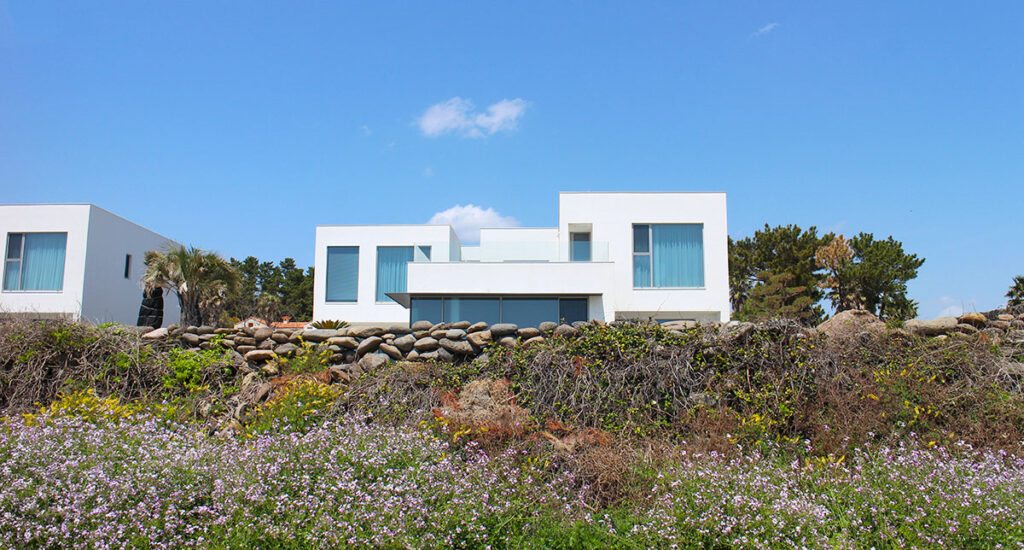
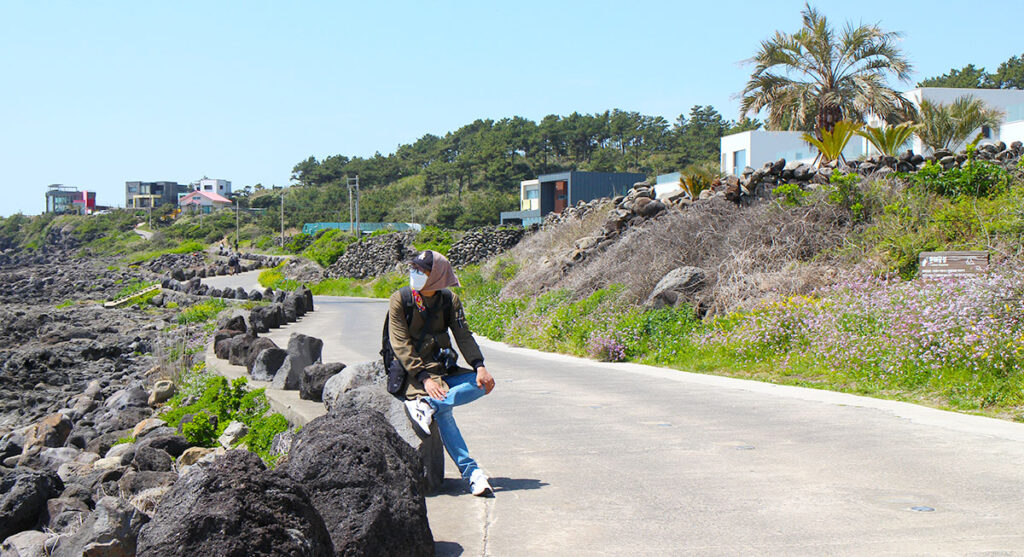
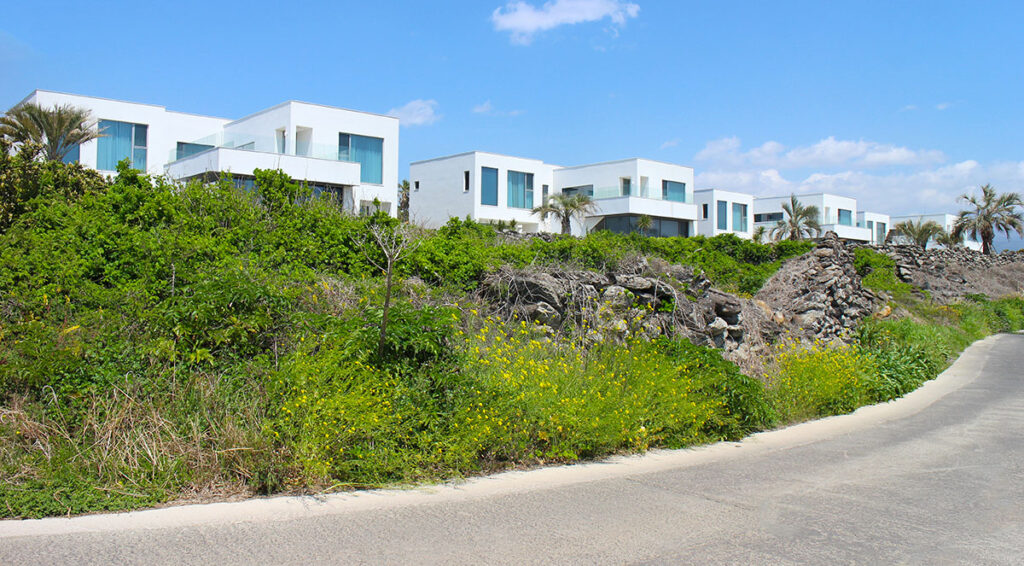
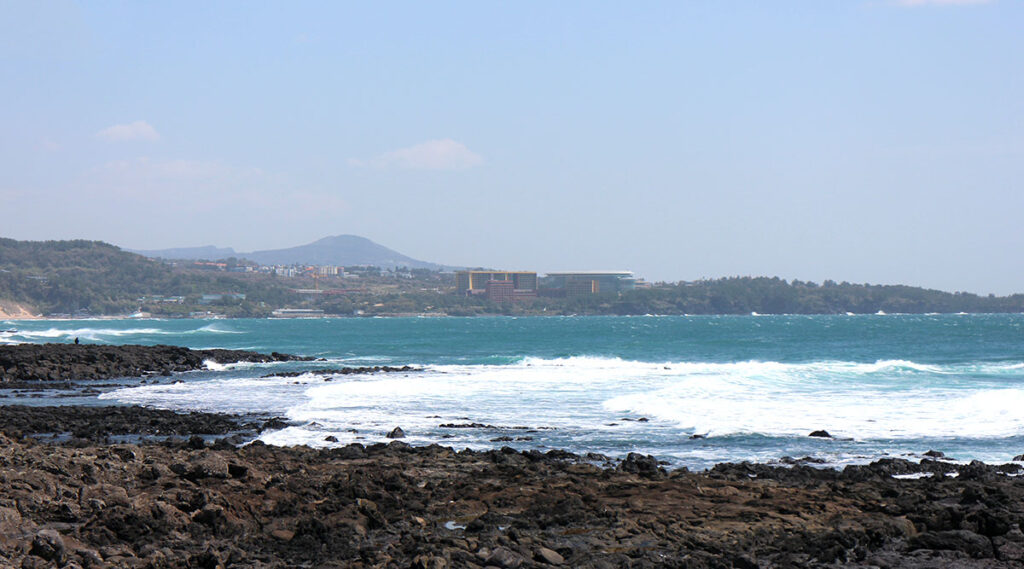
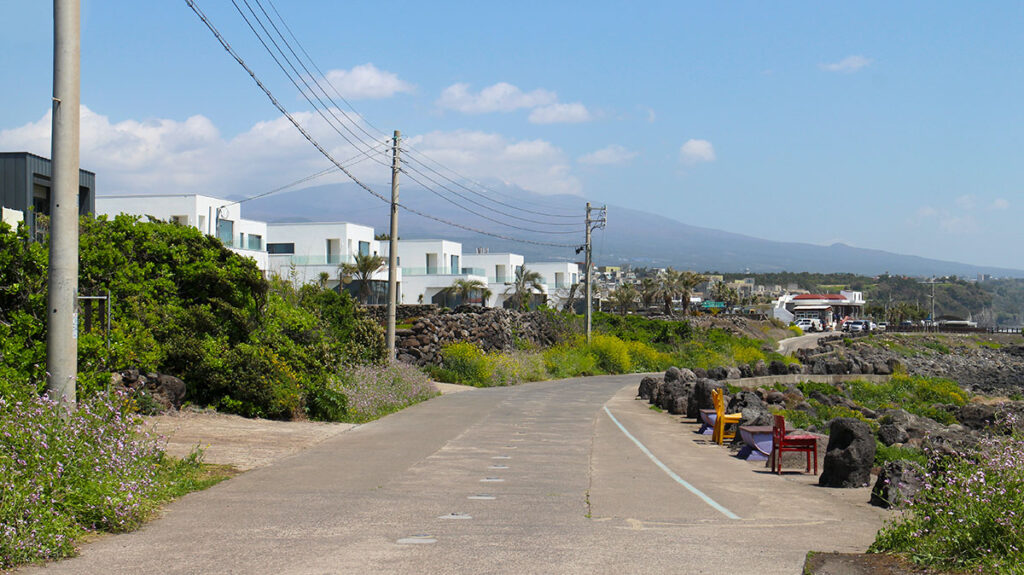
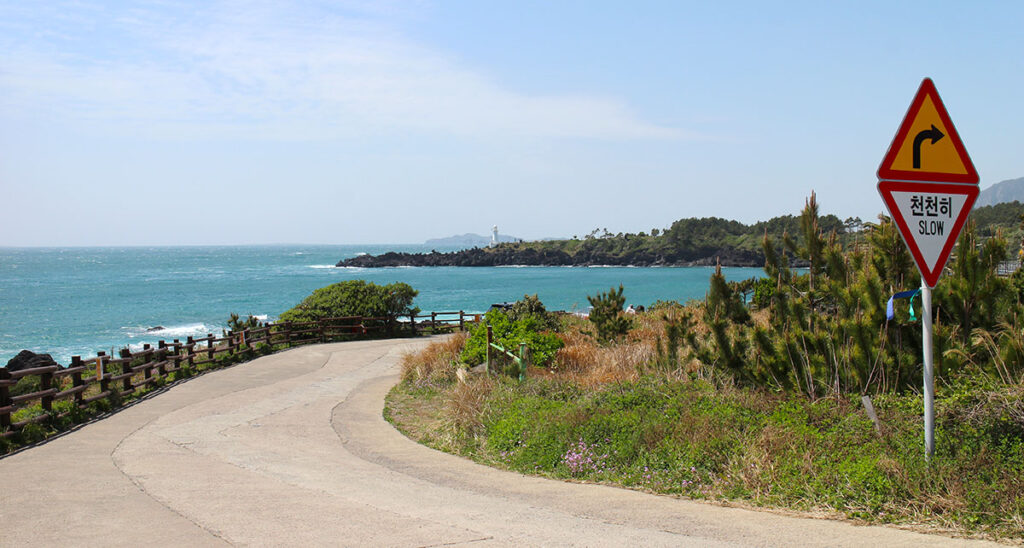
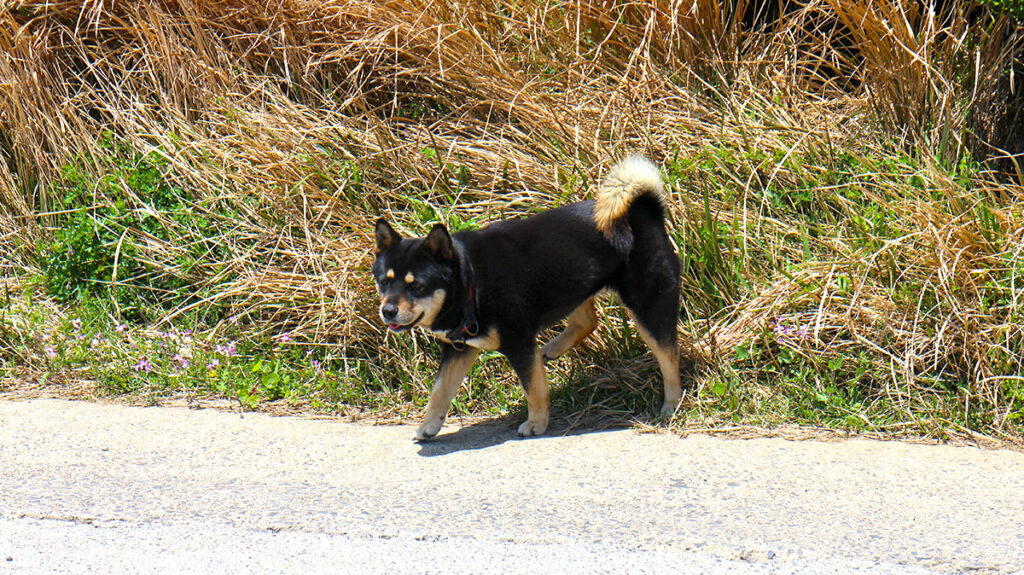
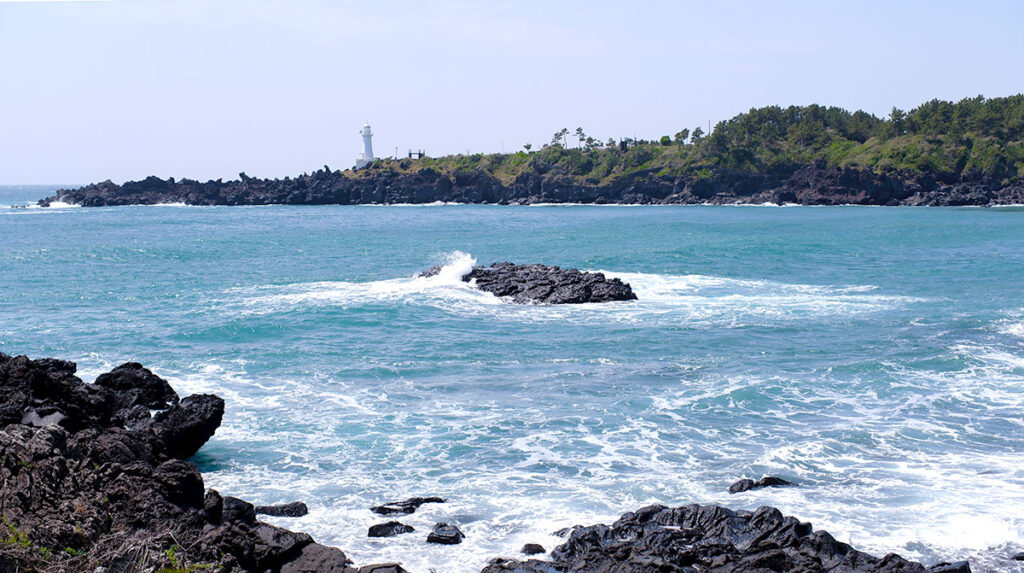
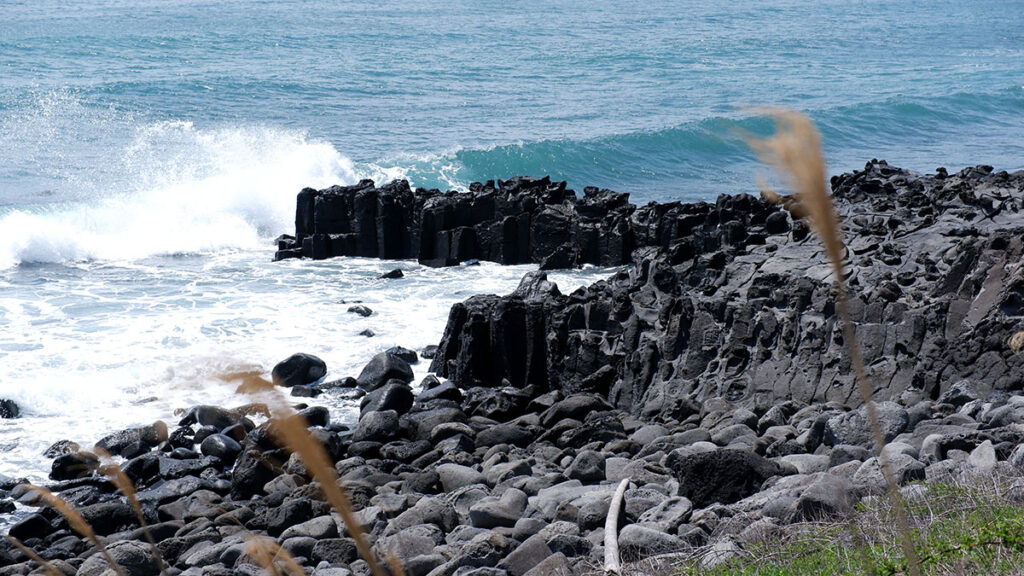
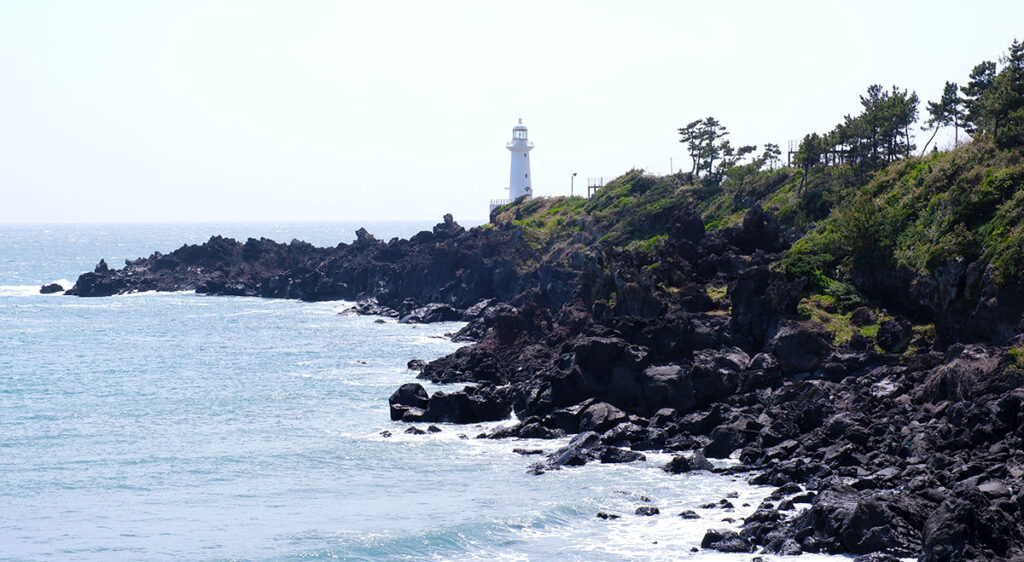
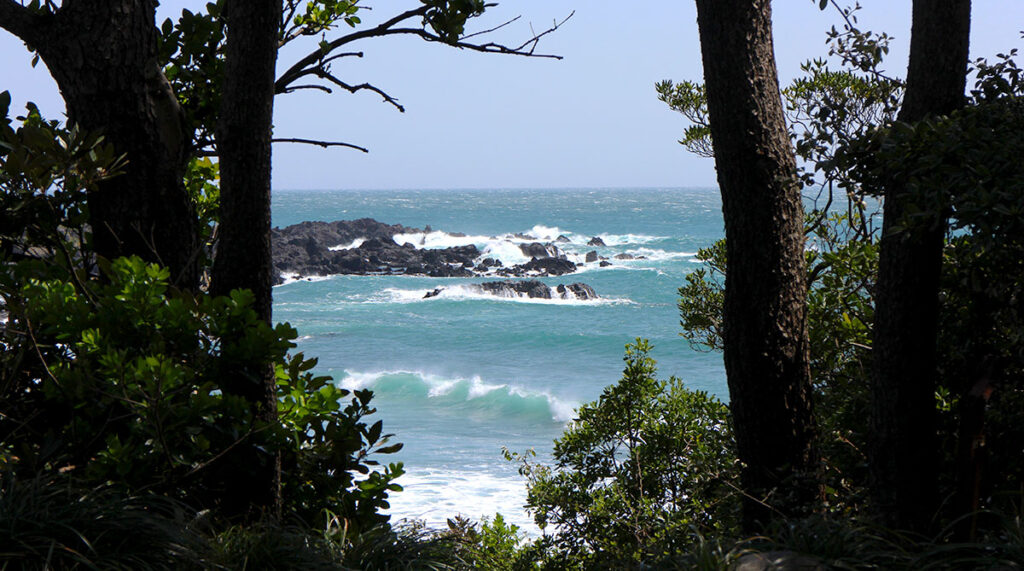

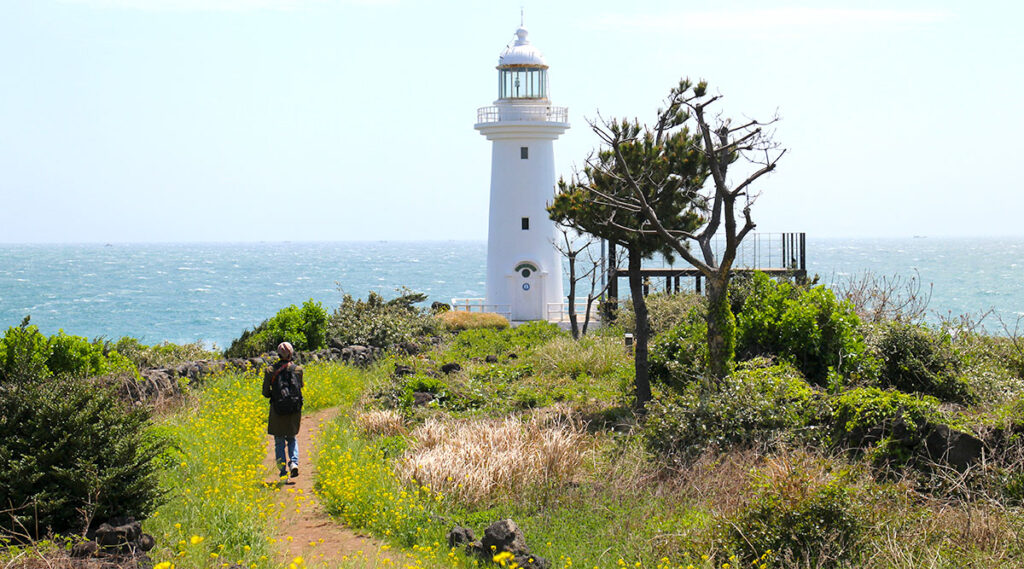
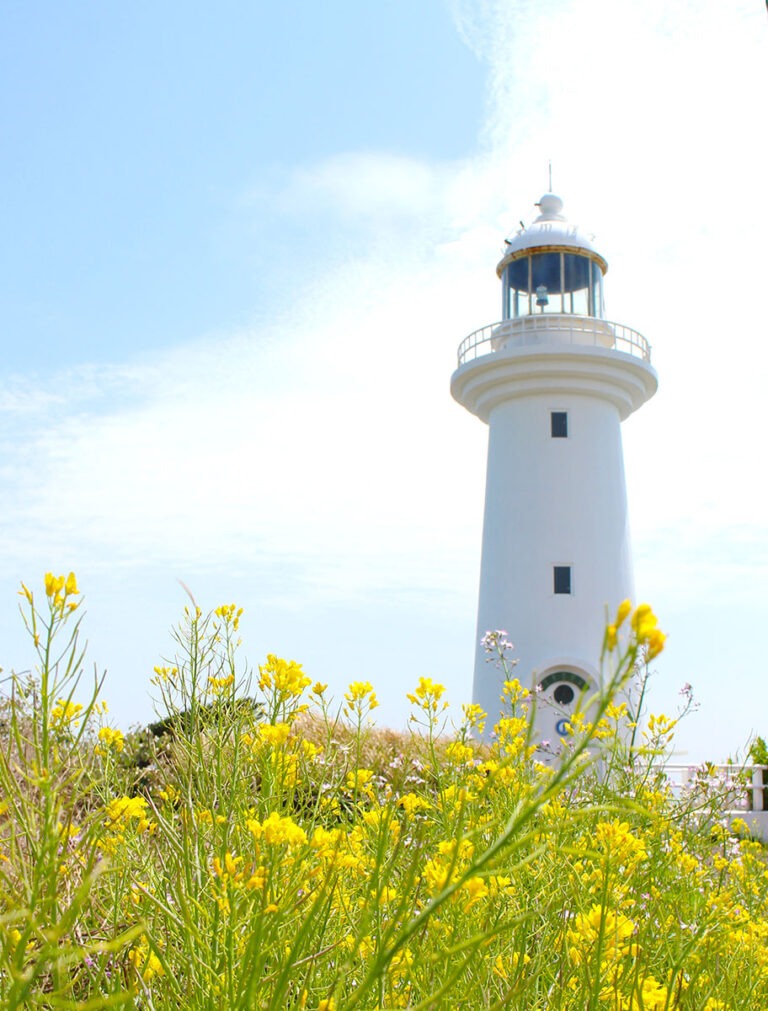
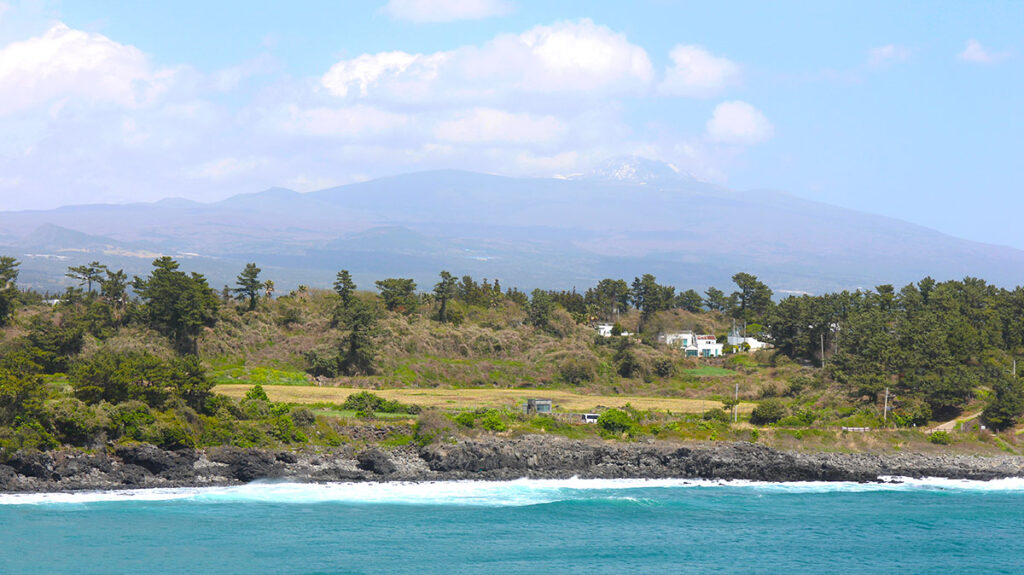
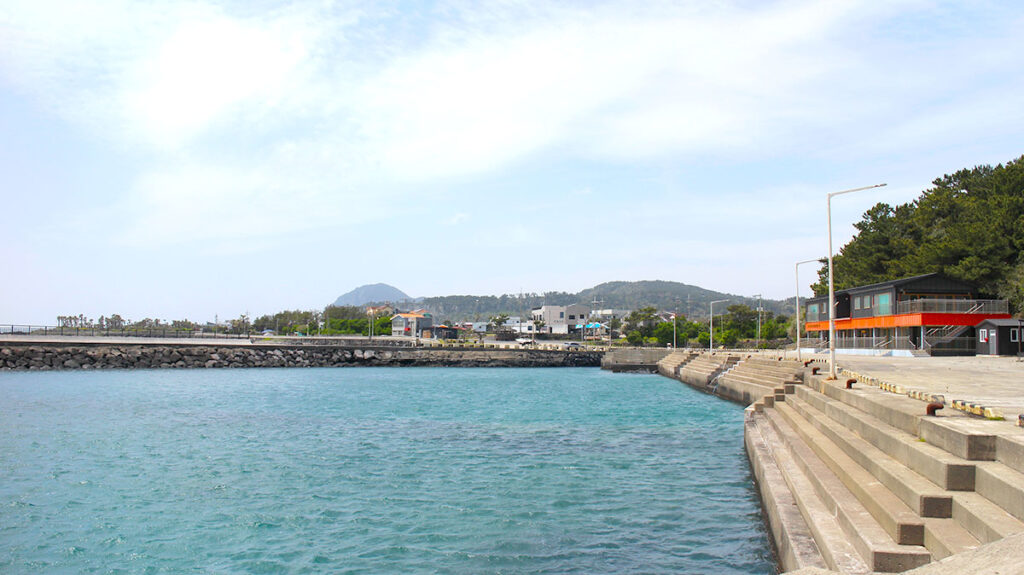
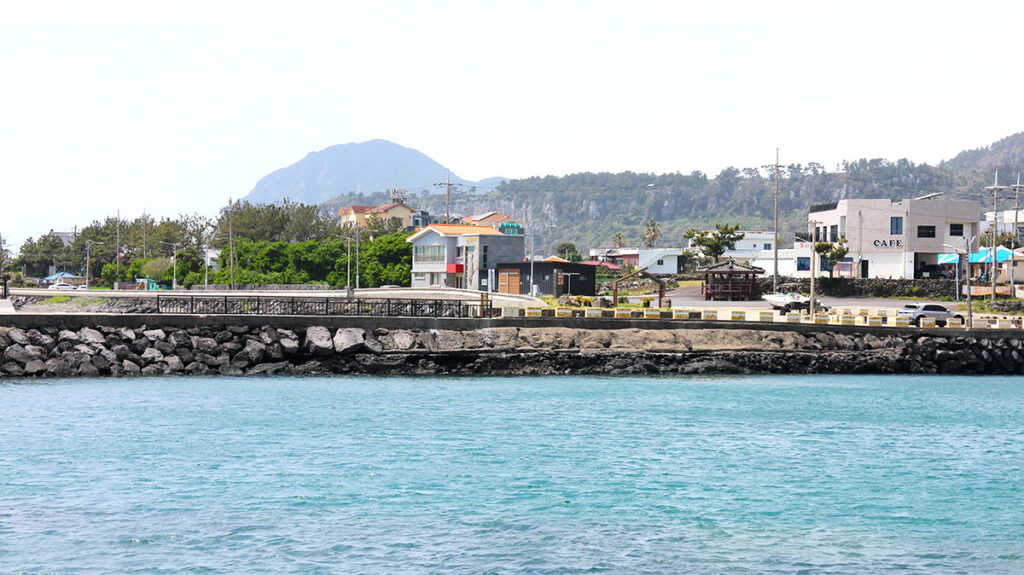
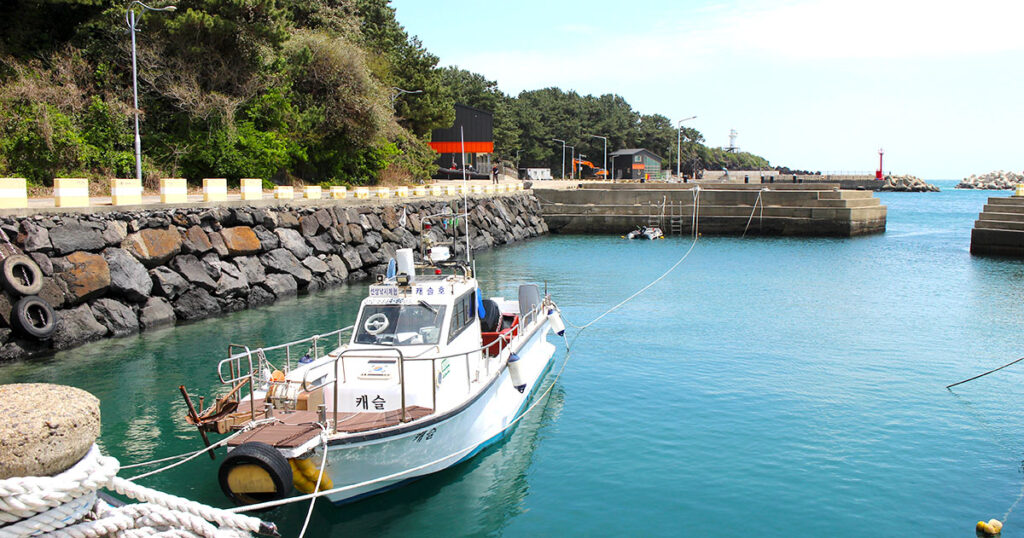
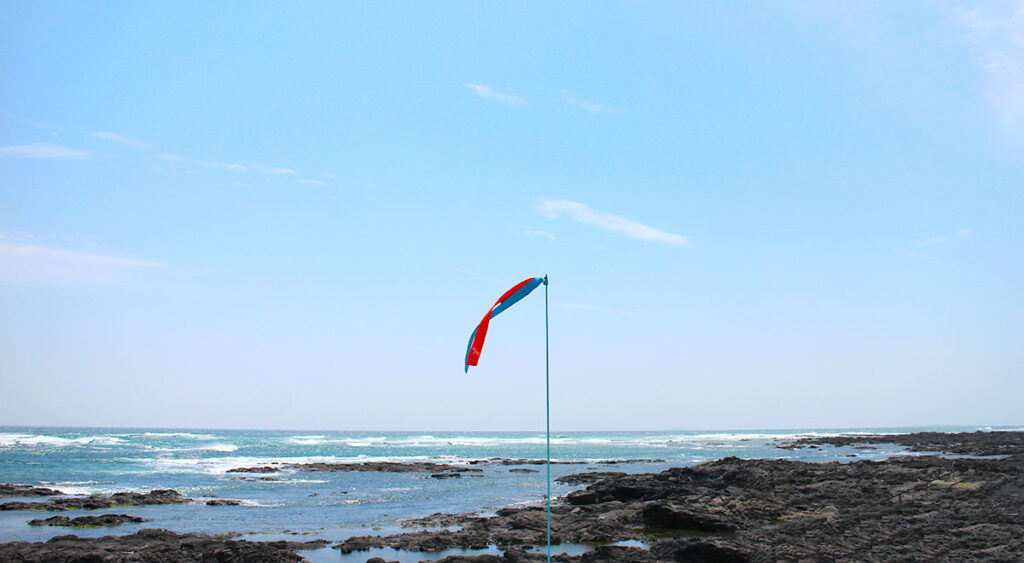
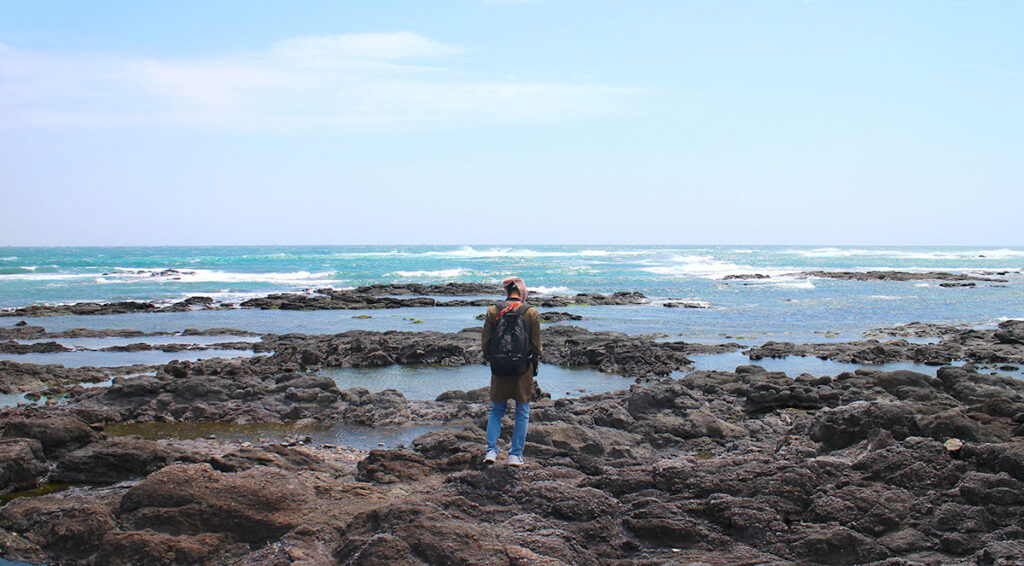
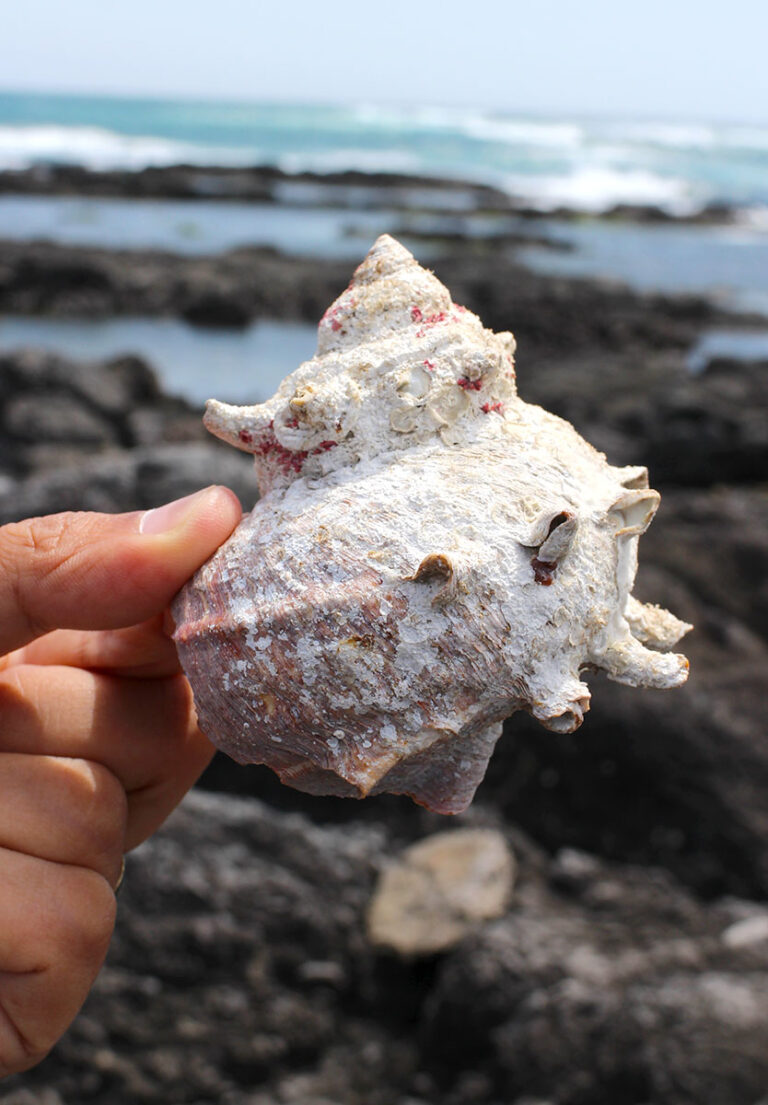
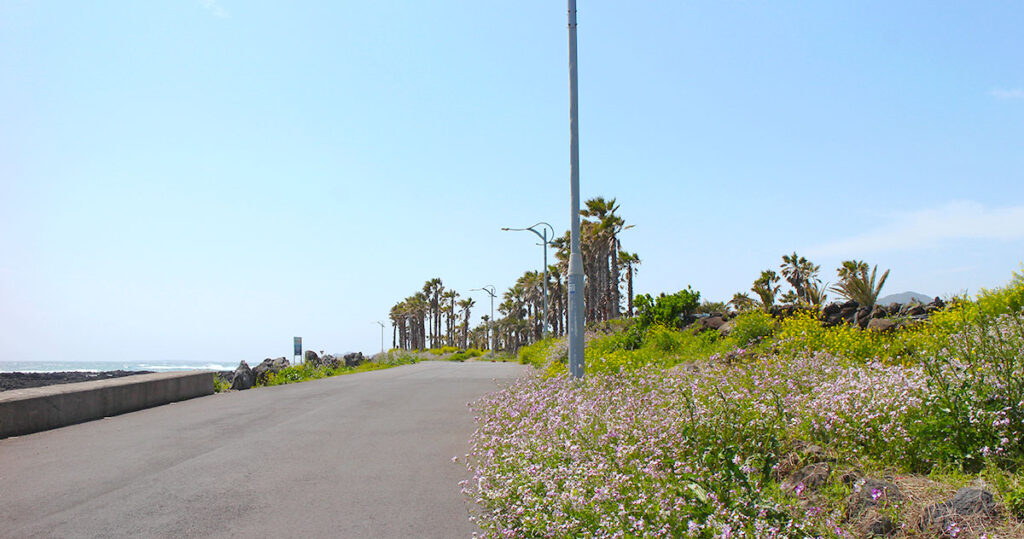
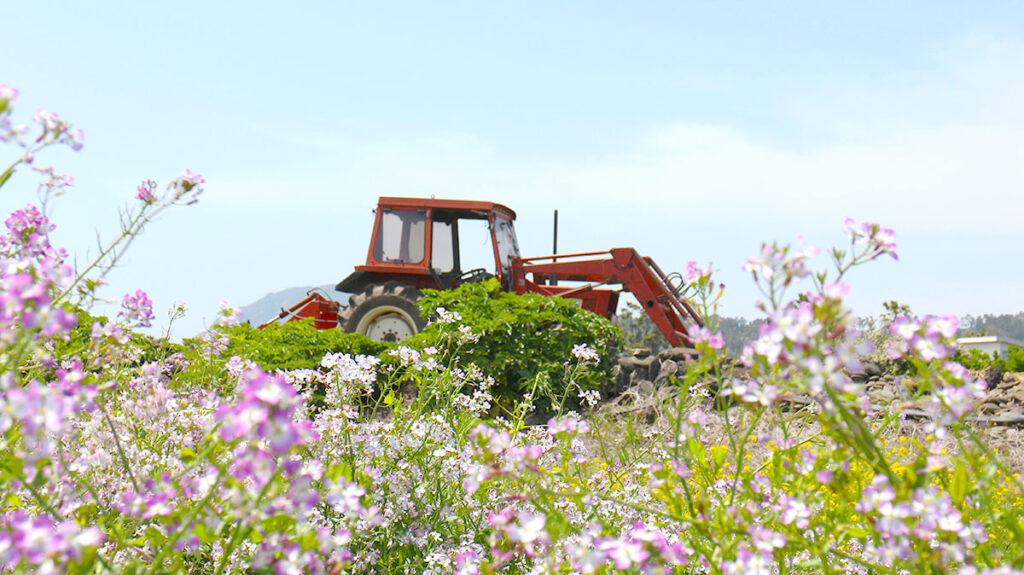
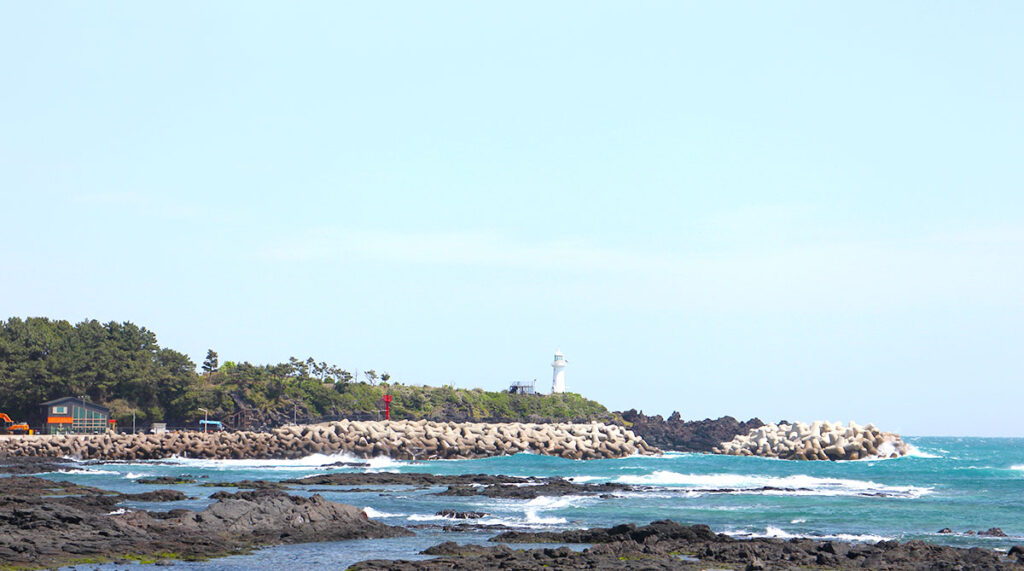
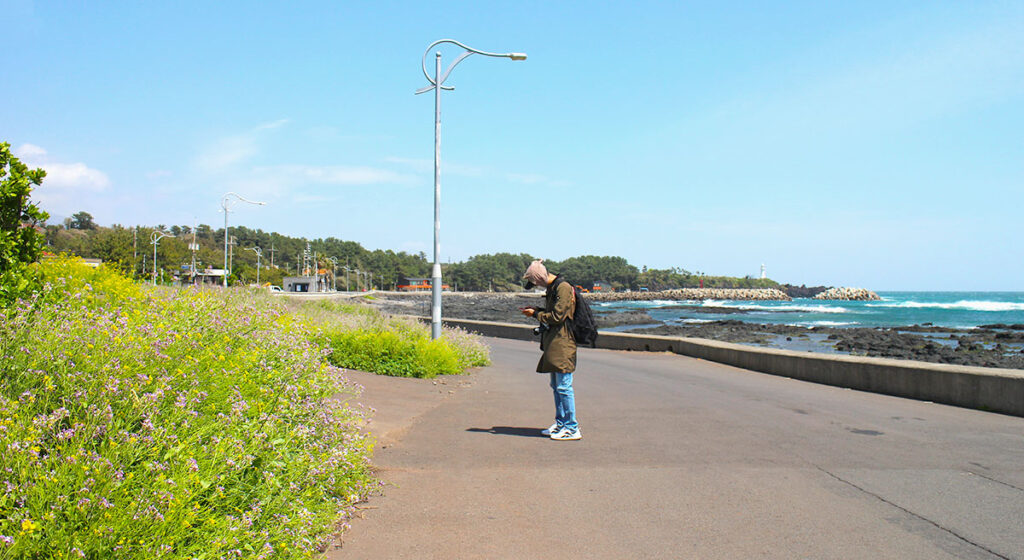
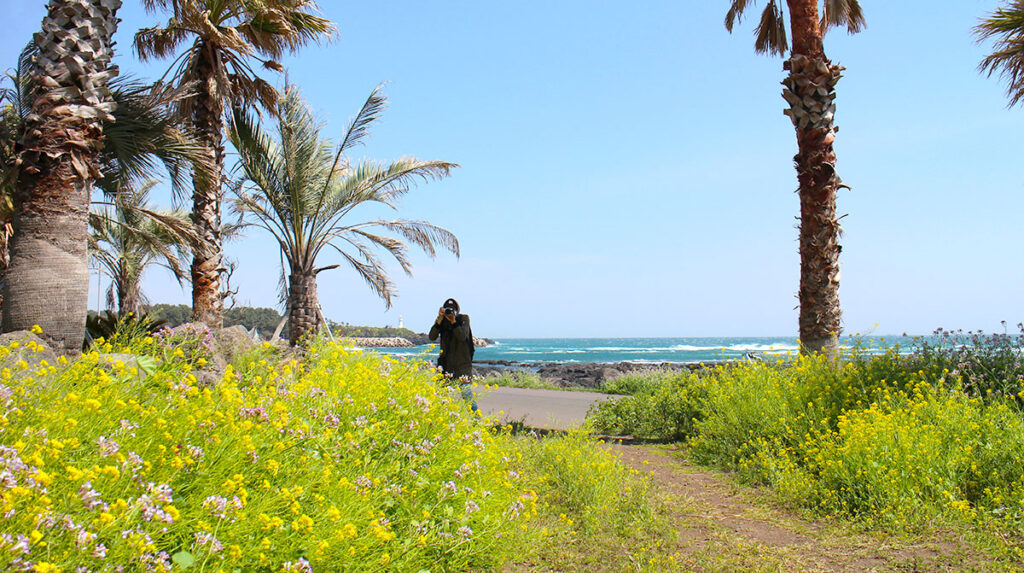
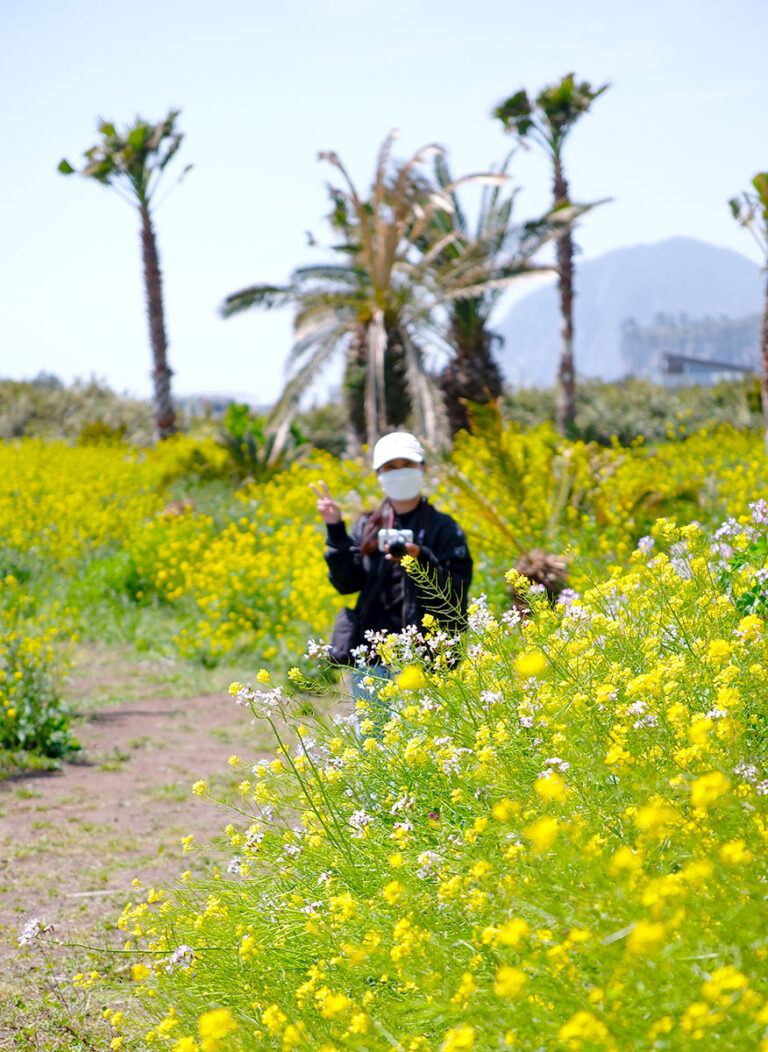
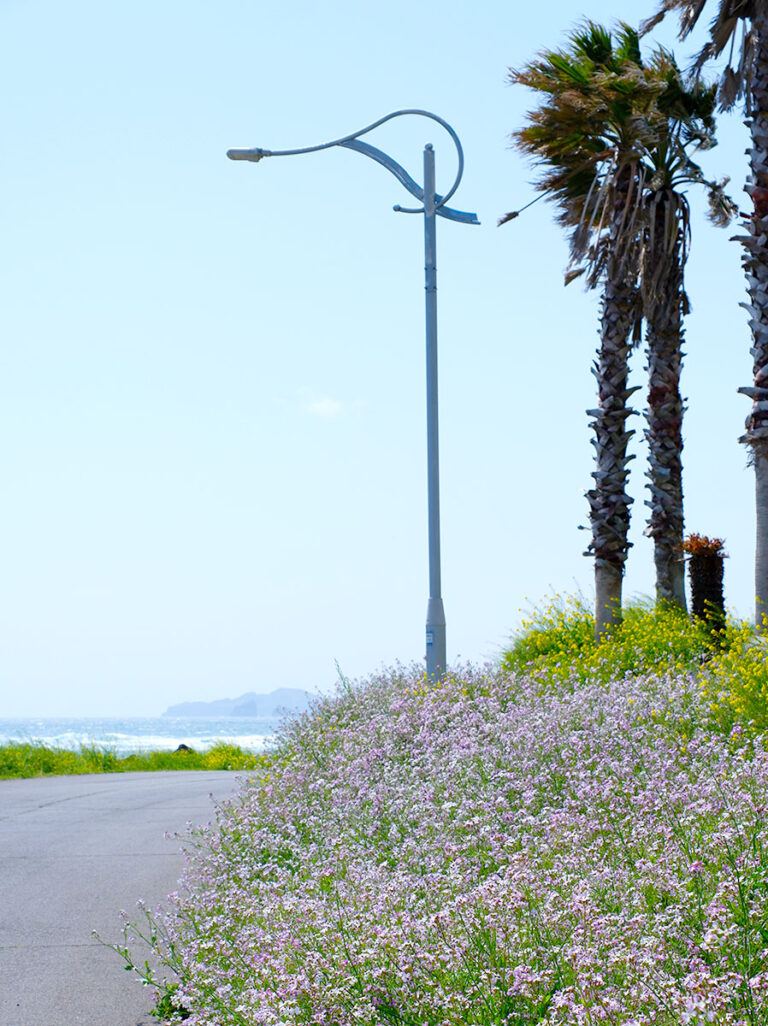
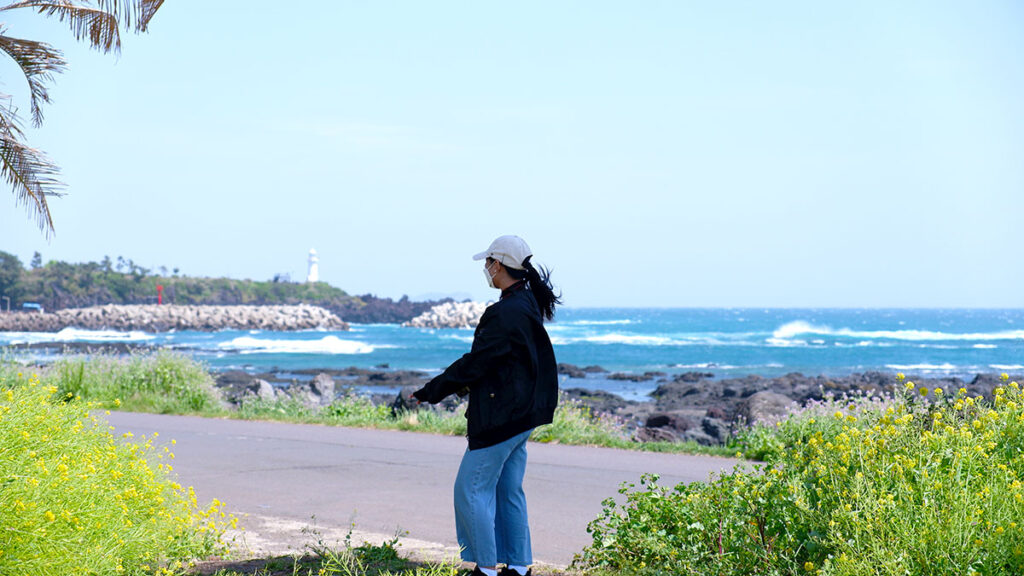
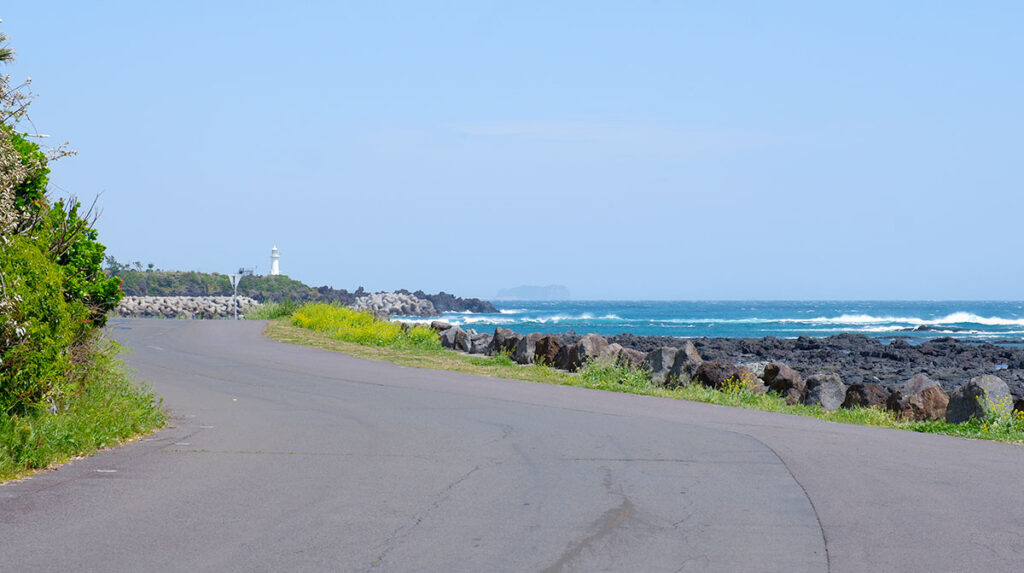
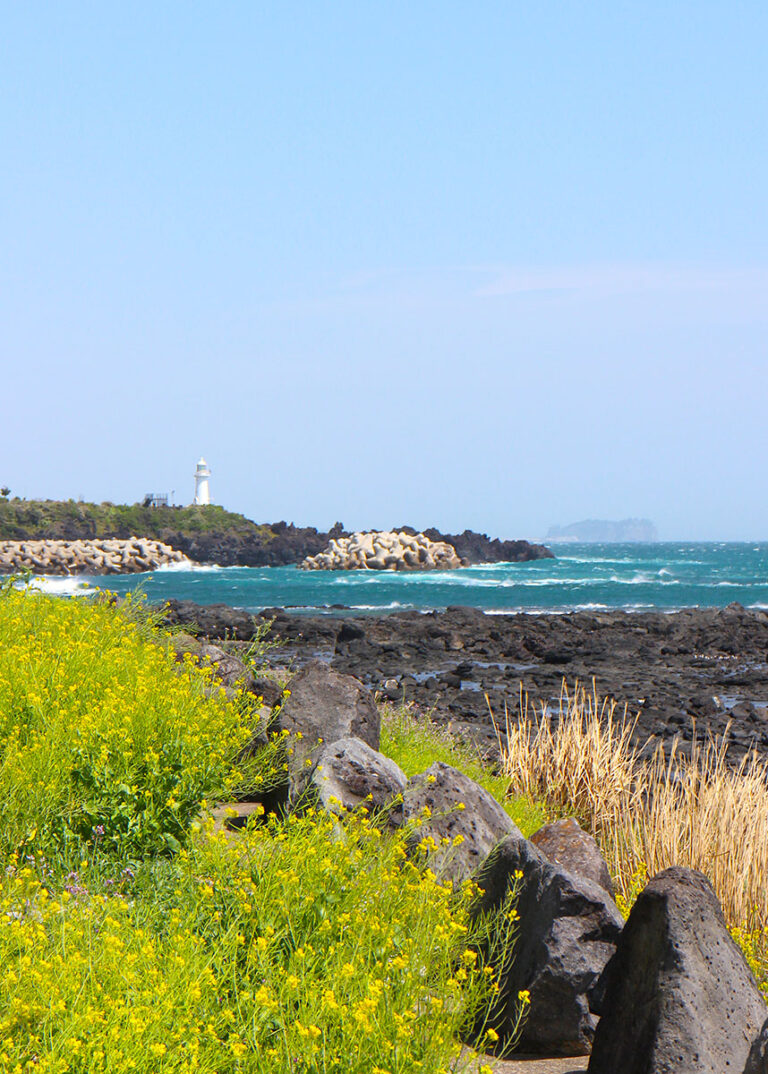
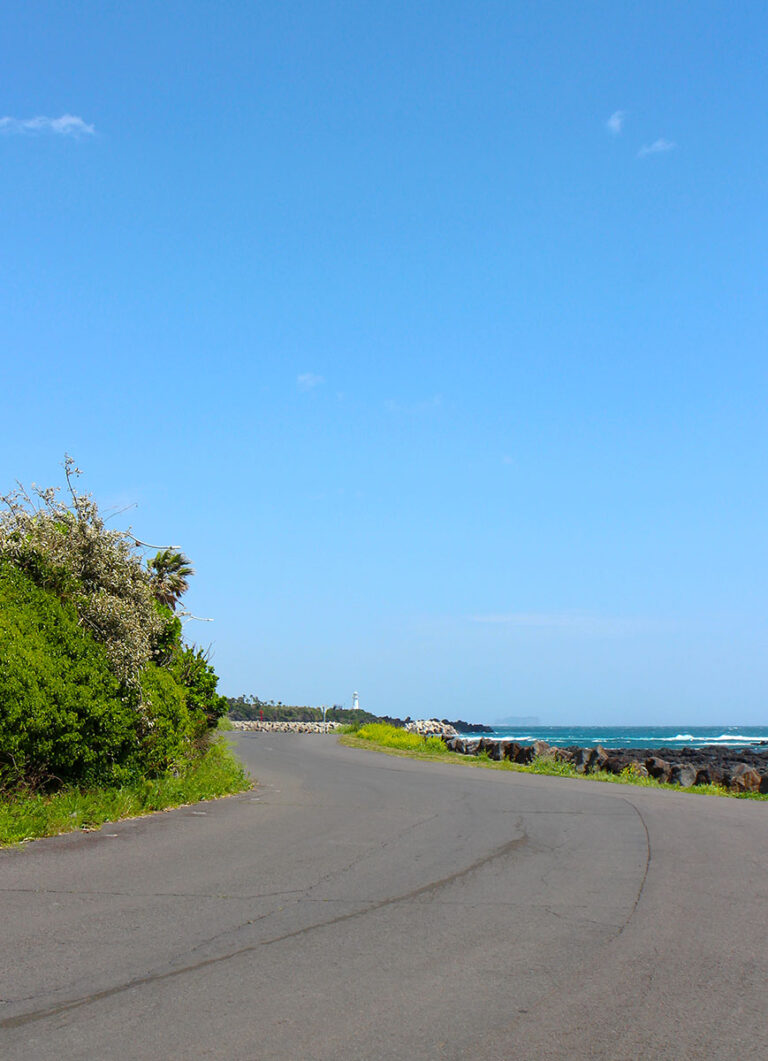
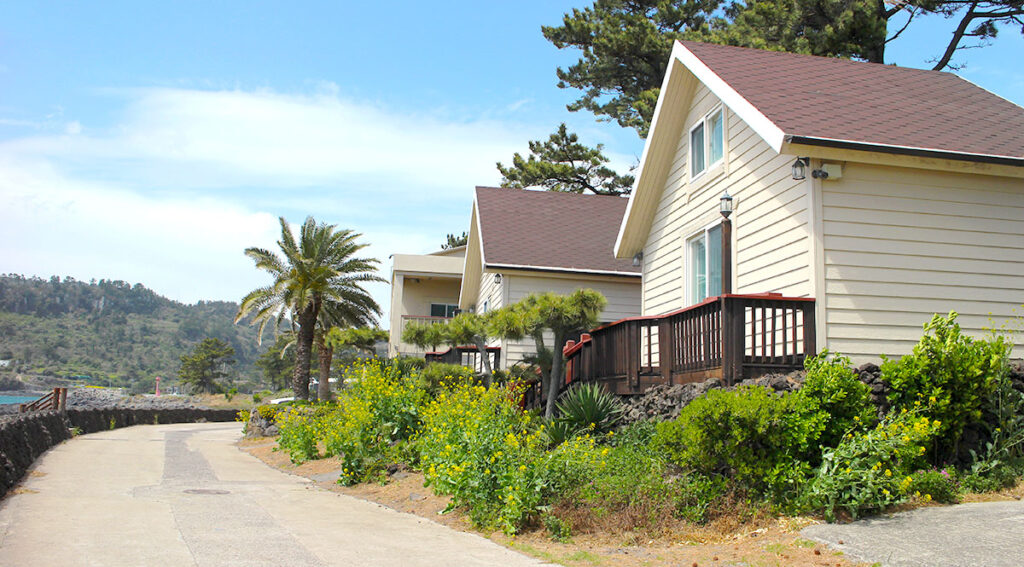
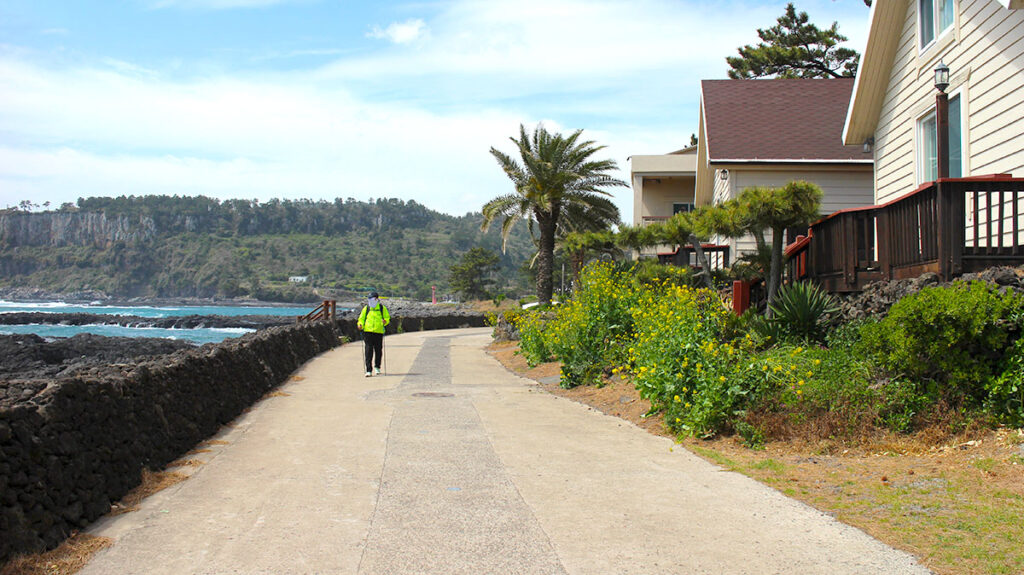

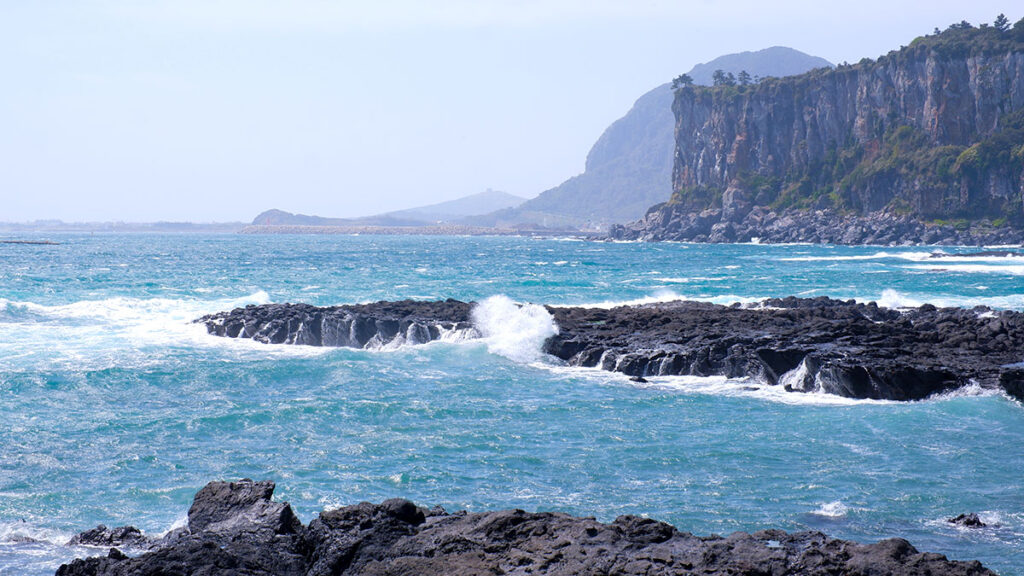
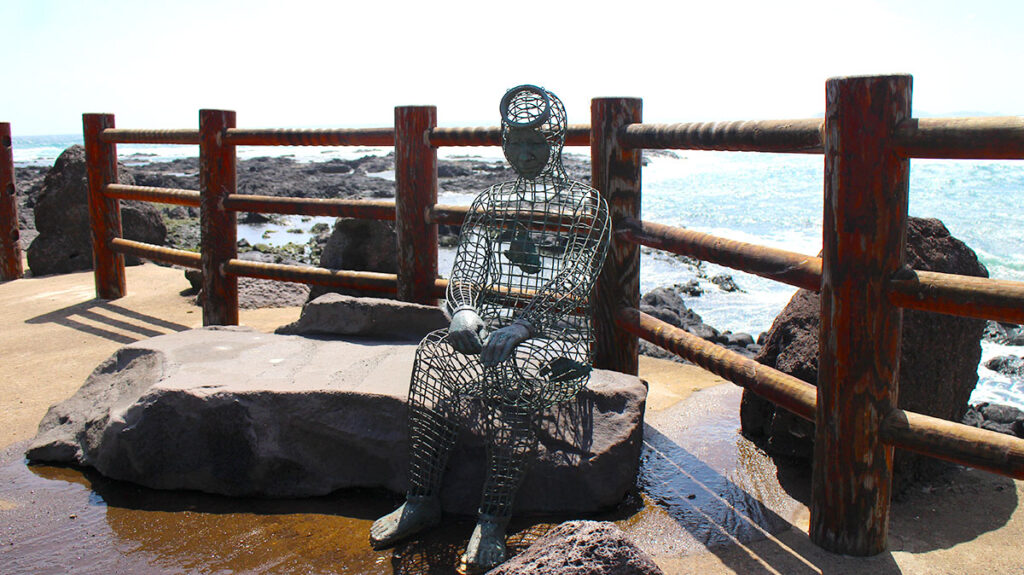
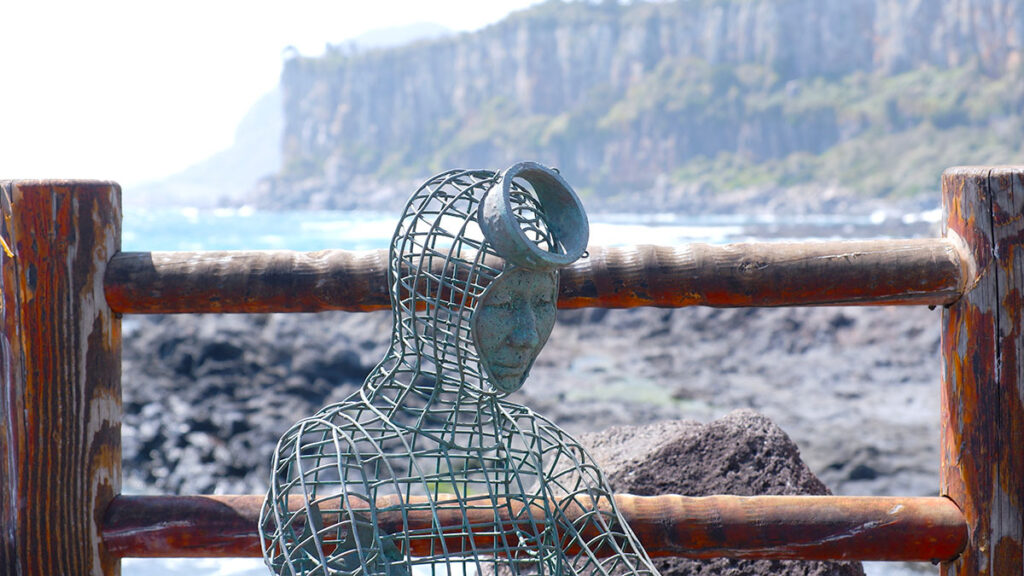

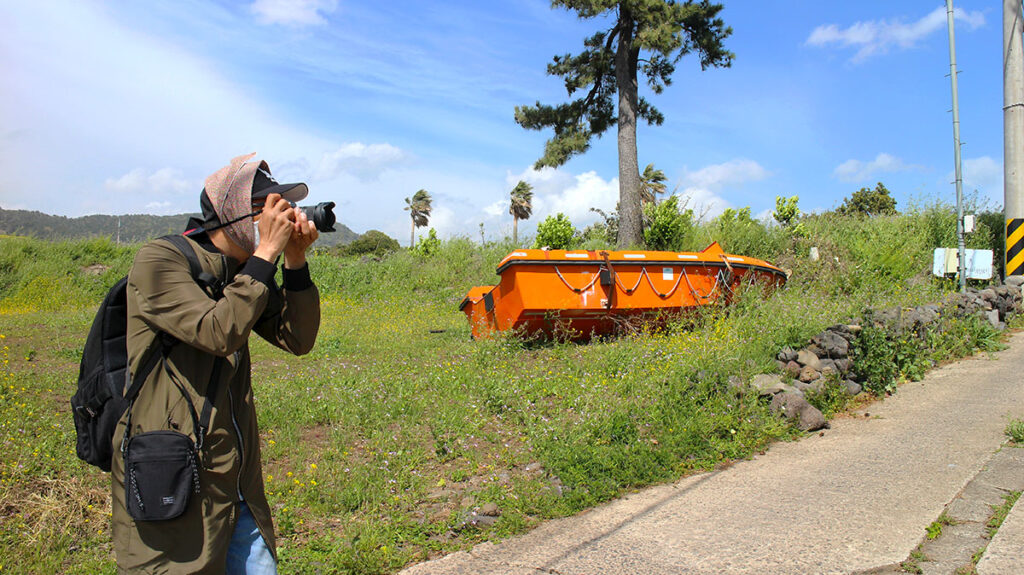
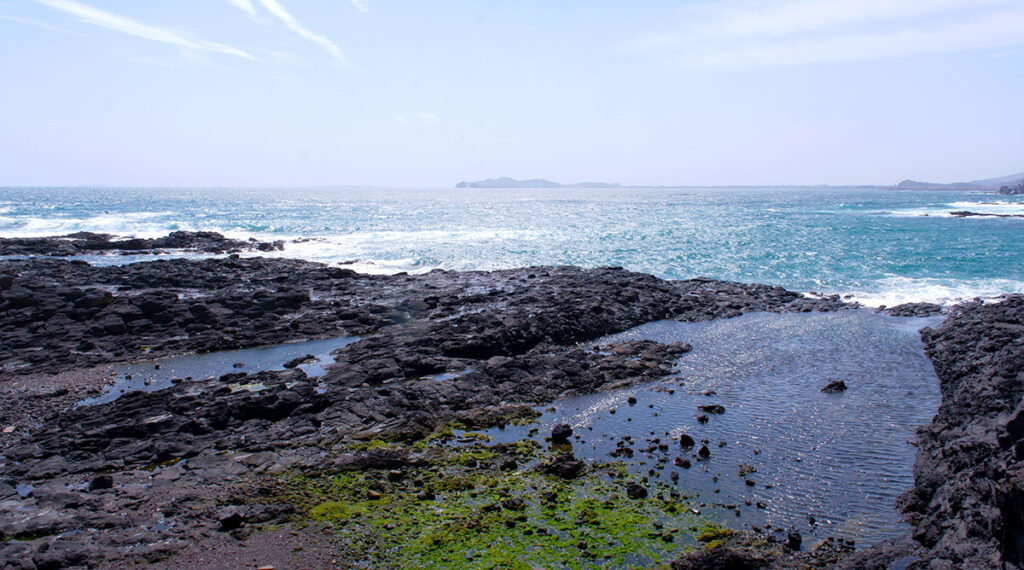
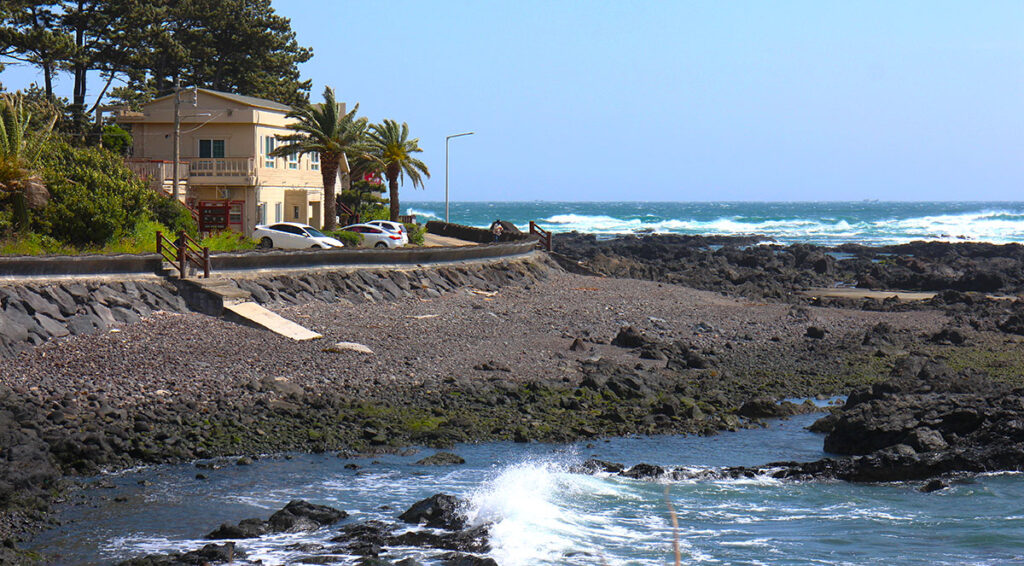
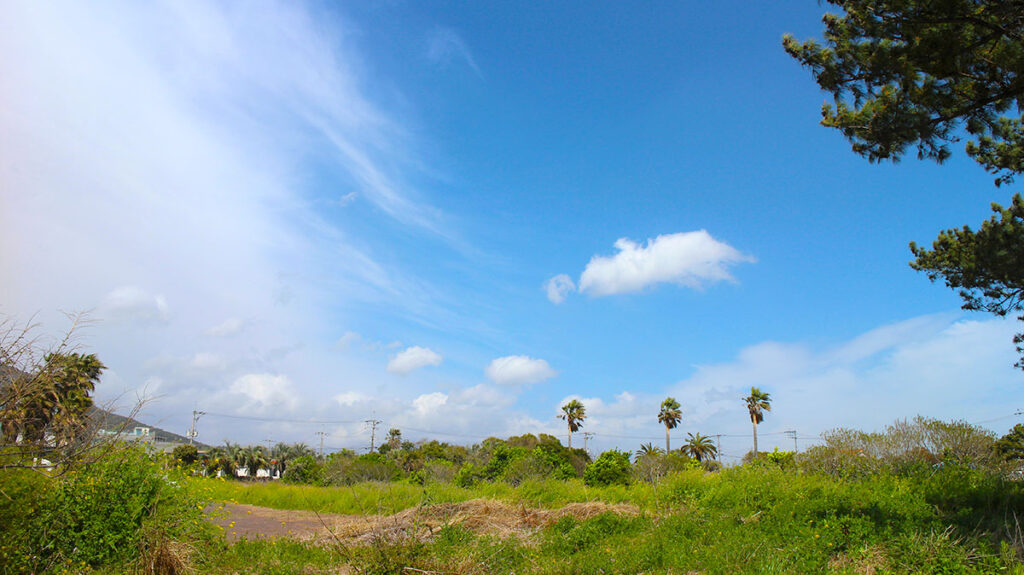
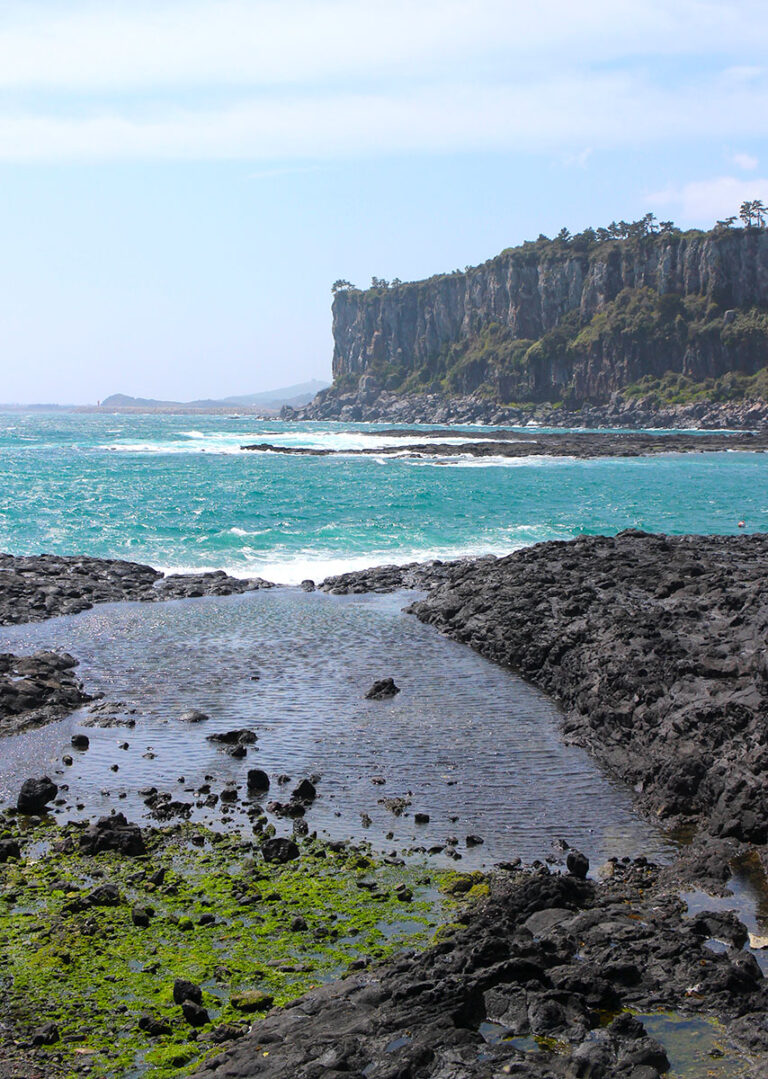
And then—just when we thought it couldn’t get better—we caught a glimpse of Baksugijeong (박수기정), a stunning coastal cliff about 100 meters high, famous for its dramatic vertical basalt columns. The name combines “박수” (baksu), meaning spring water, and “기정” (gijeong), meaning cliff, referring to the clean spring water that flows directly from the cliffside. This area is especially popular at sunset, when golden light floods the sea and stone. It’s best viewed from Daepyeong Port, where you can take in its full grandeur.
Recap Images
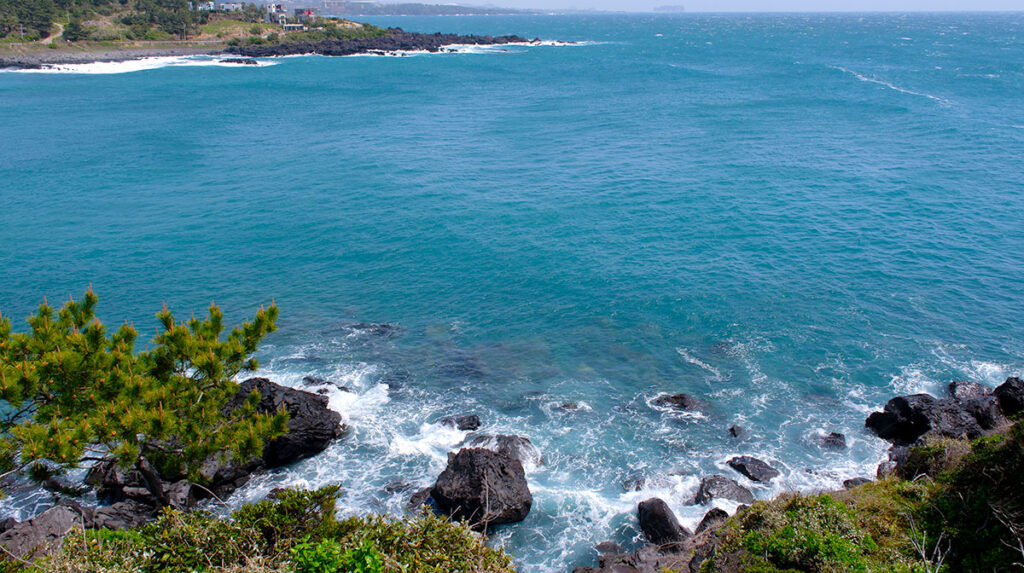
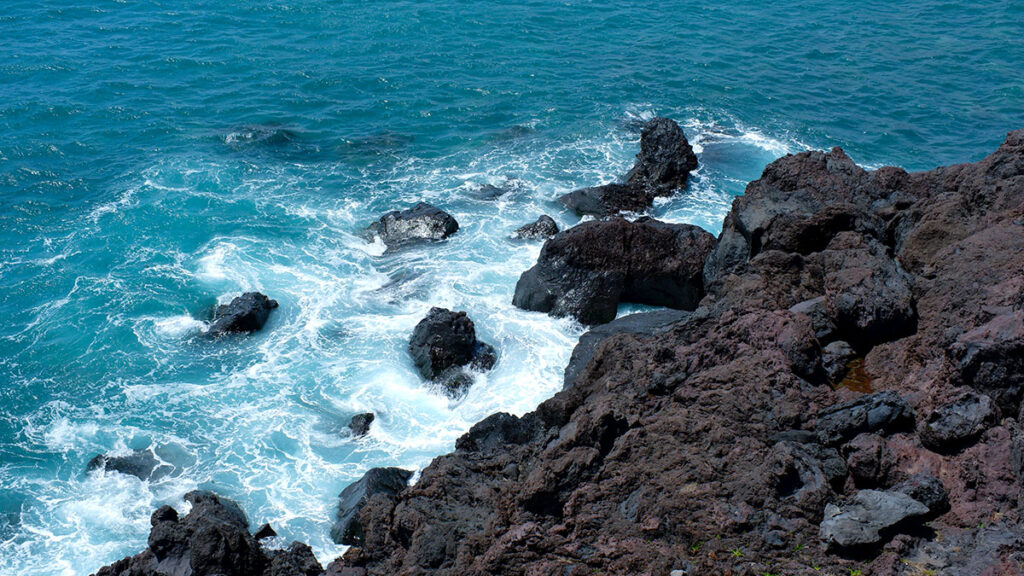
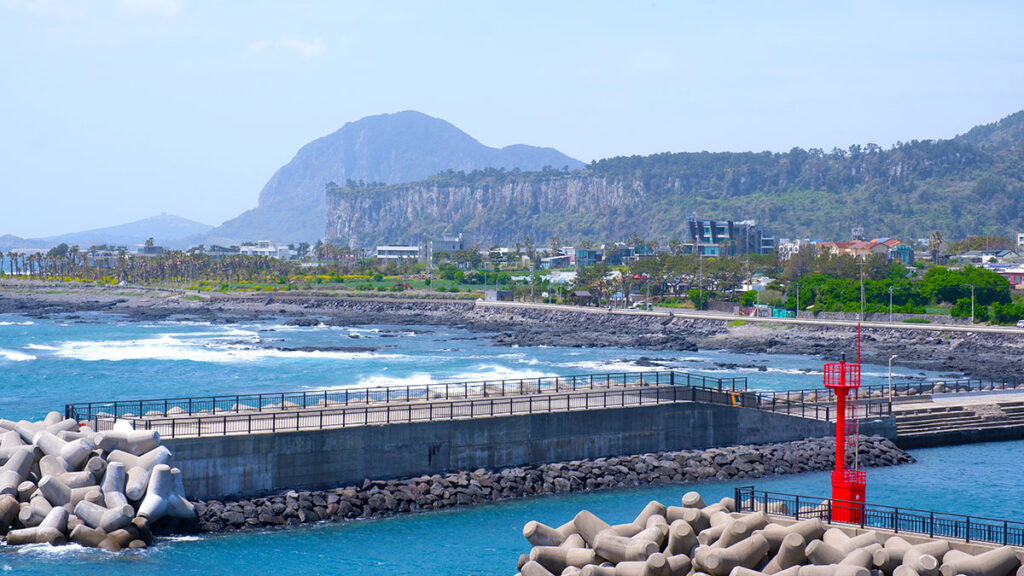
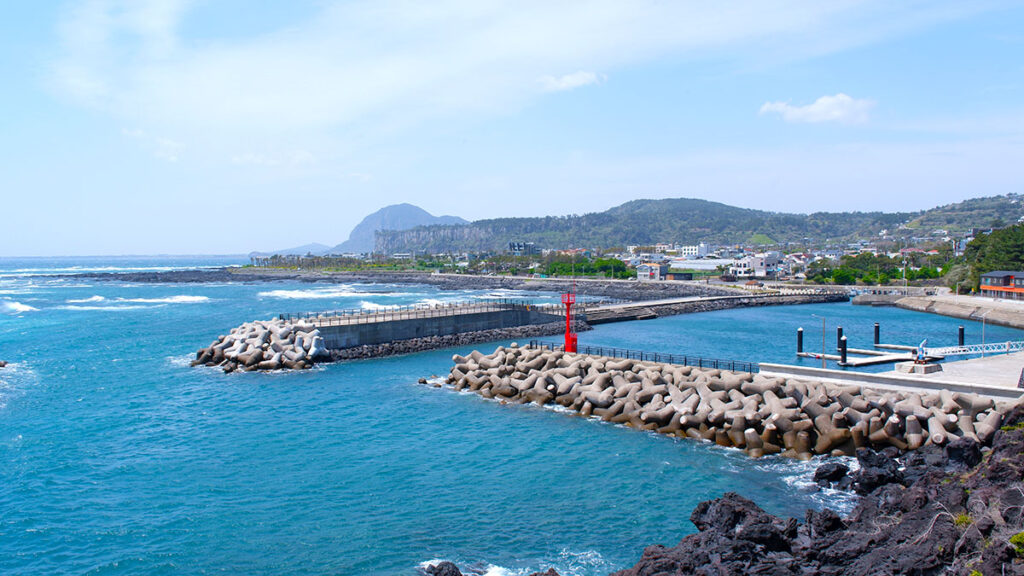
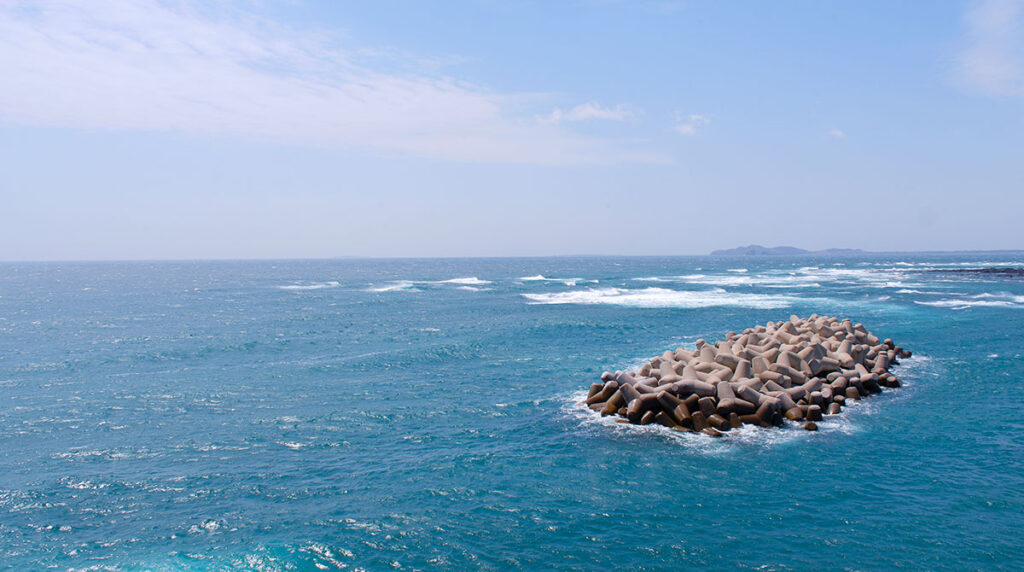
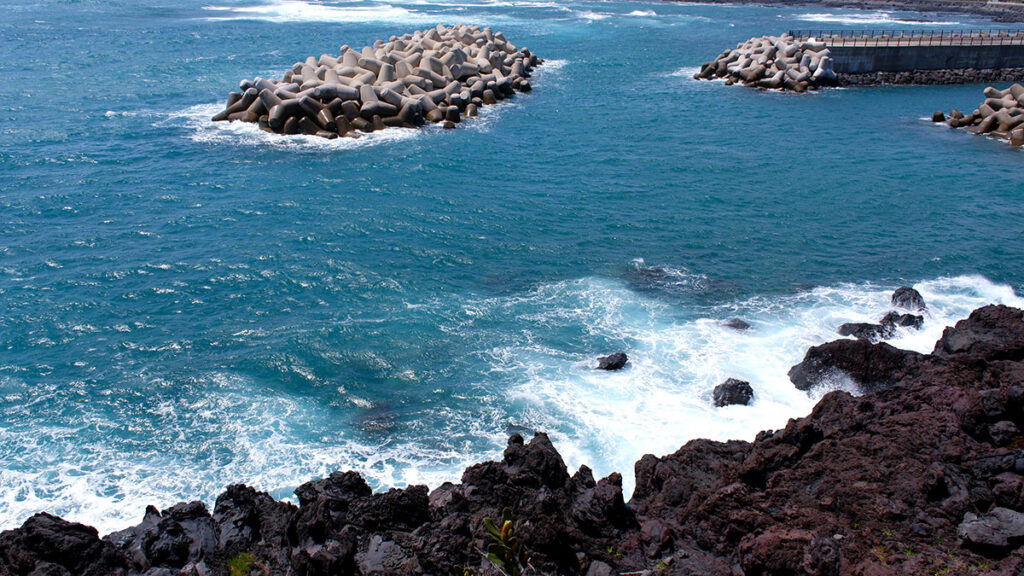
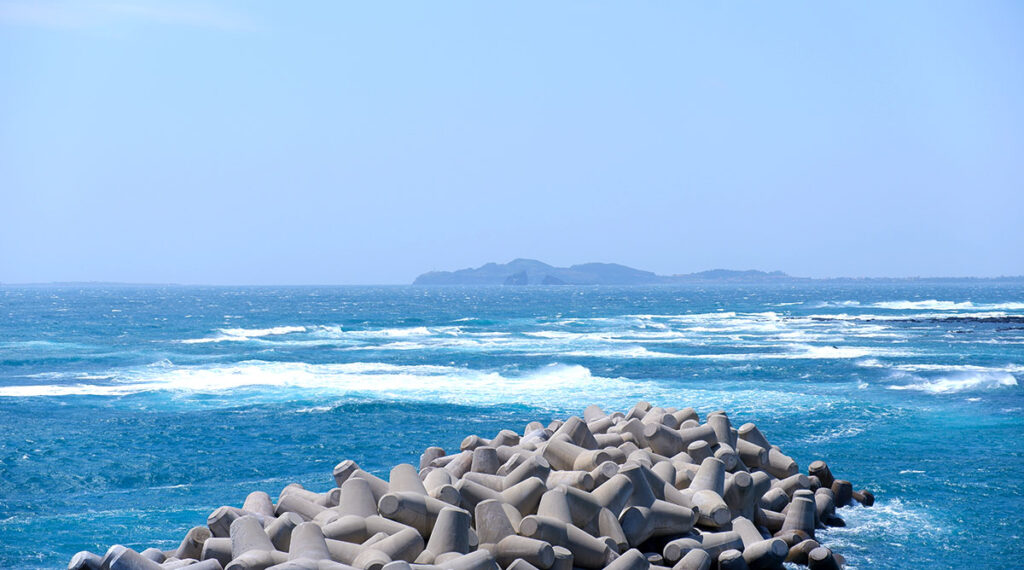
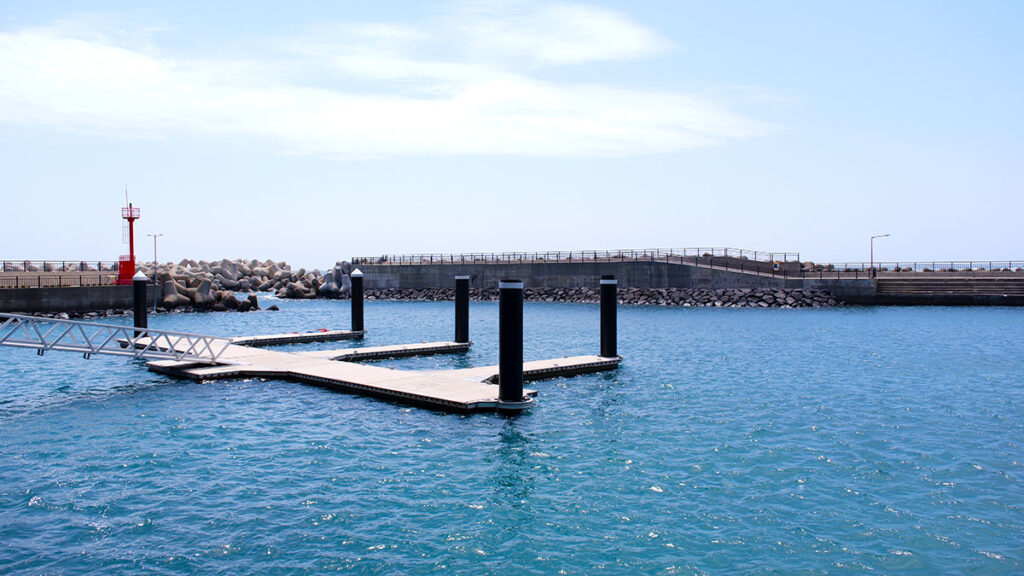
Near the end of the trail, we passed Hotel Napoli, a photogenic, Santorini-inspired hotel, before finally arriving at the Route 8 endpoint stamp at 2:46 PM.
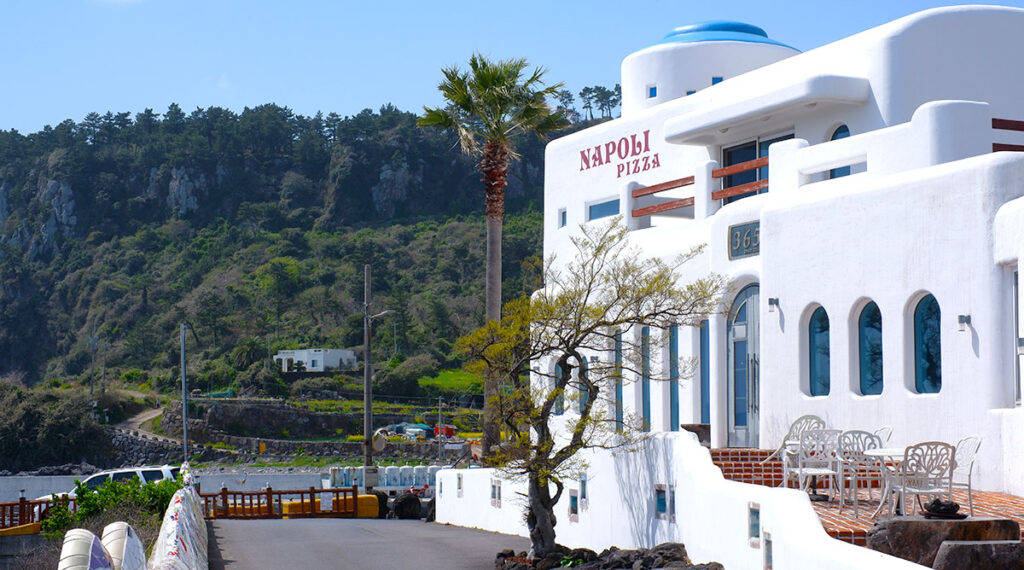
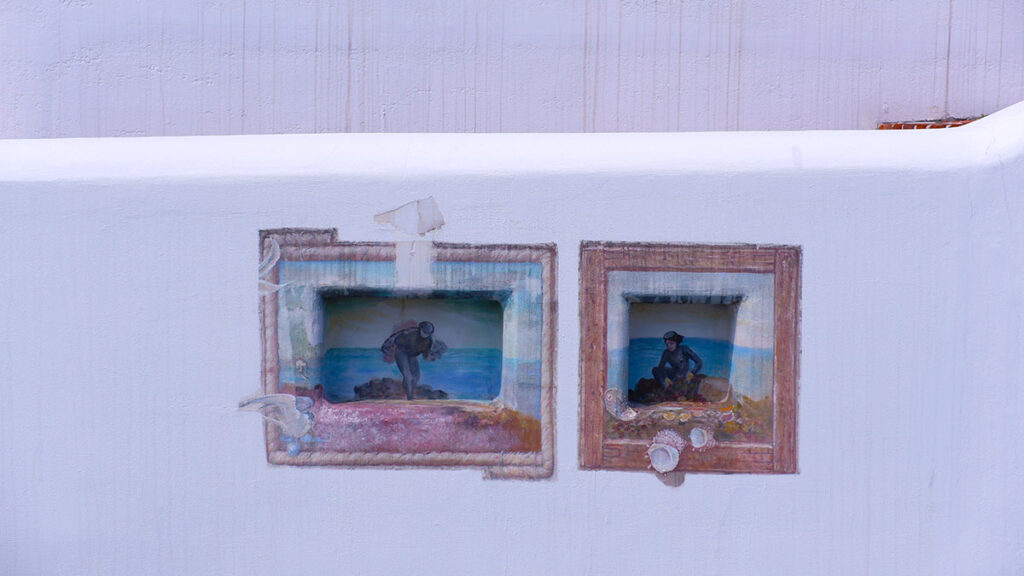
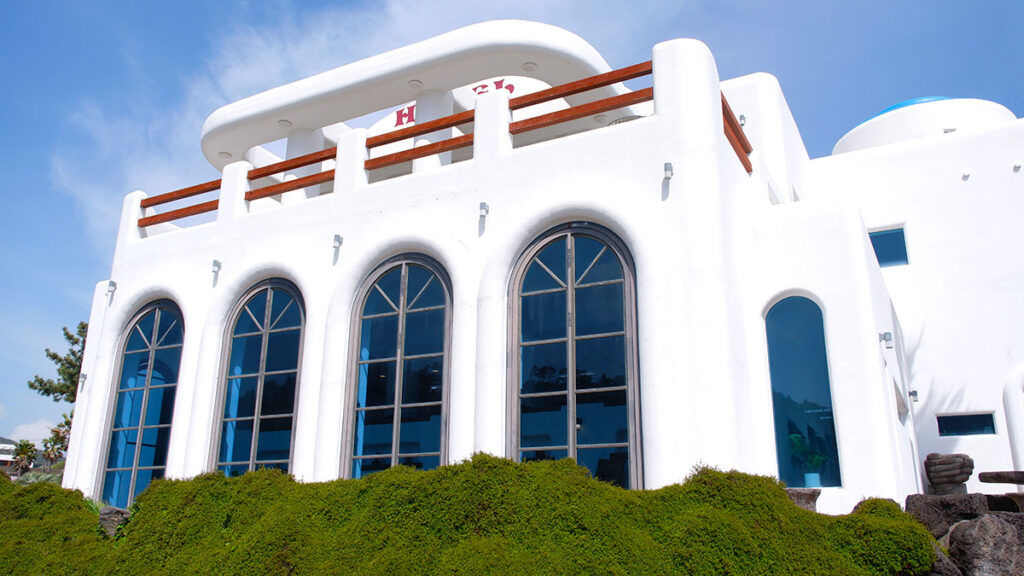
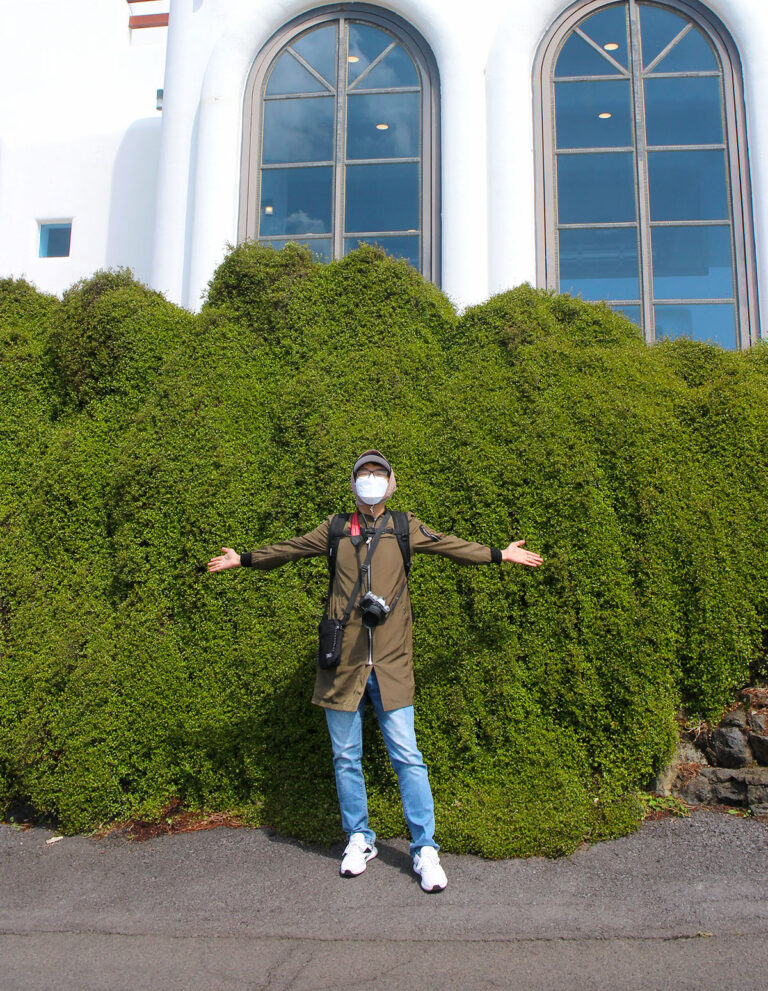
We did it—our first Olle Trail is complete.
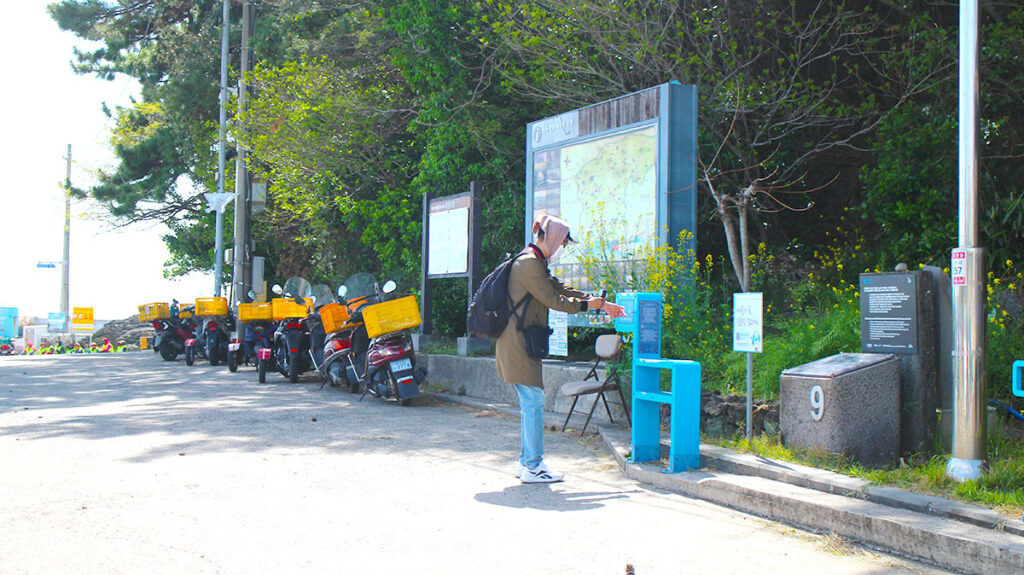
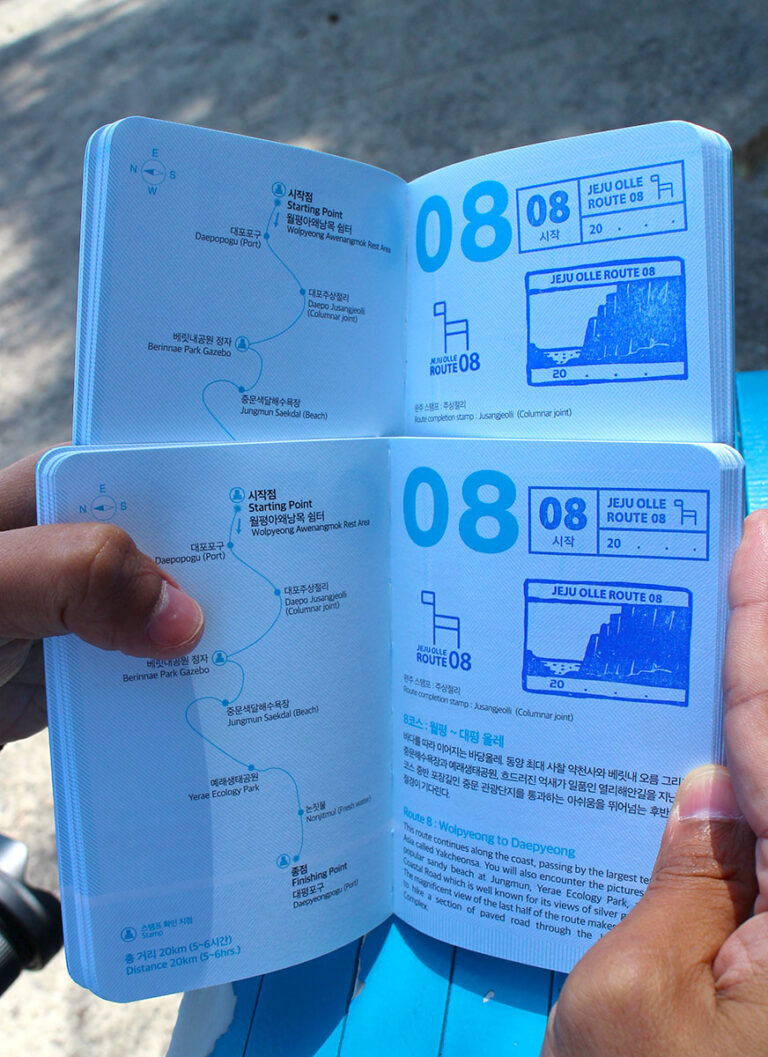
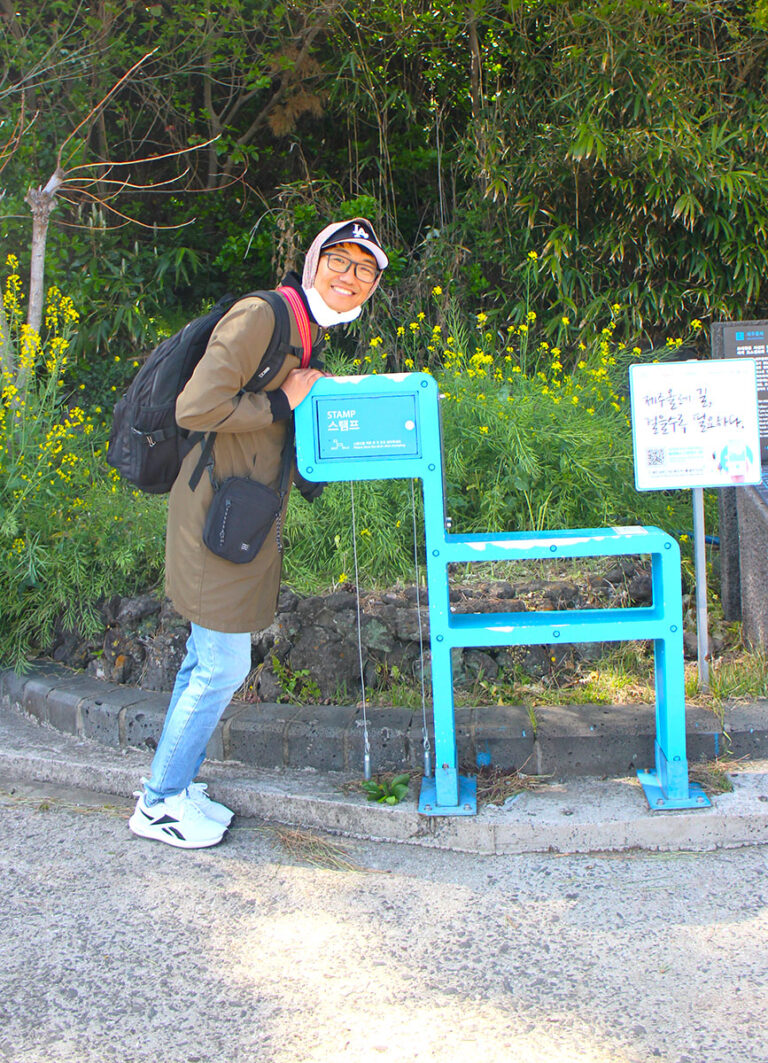
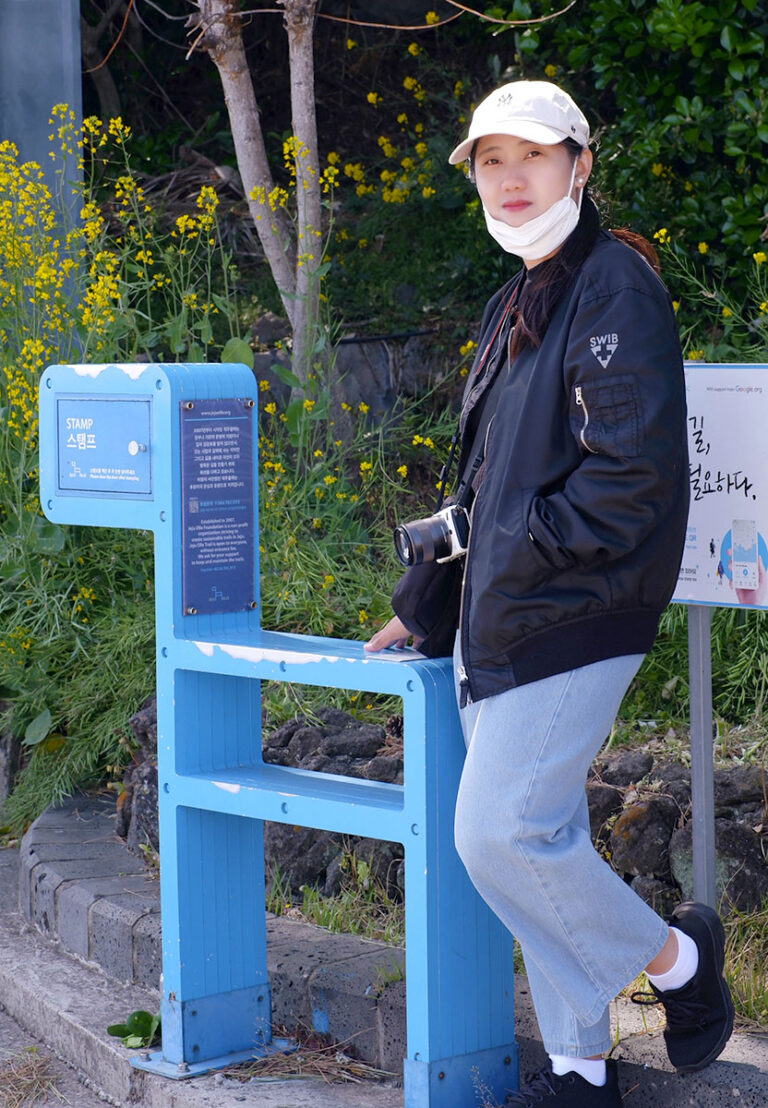
This experience taught us a lot. Next time, we’ll start earlier and pace ourselves better. Taking too many unnecessary breaks or photos can stretch out your trek and sap your energy. If you’re on a tight schedule, try to limit scenic stops to 10–15 minutes. But if time isn’t an issue, feel free to savor every step slowly.
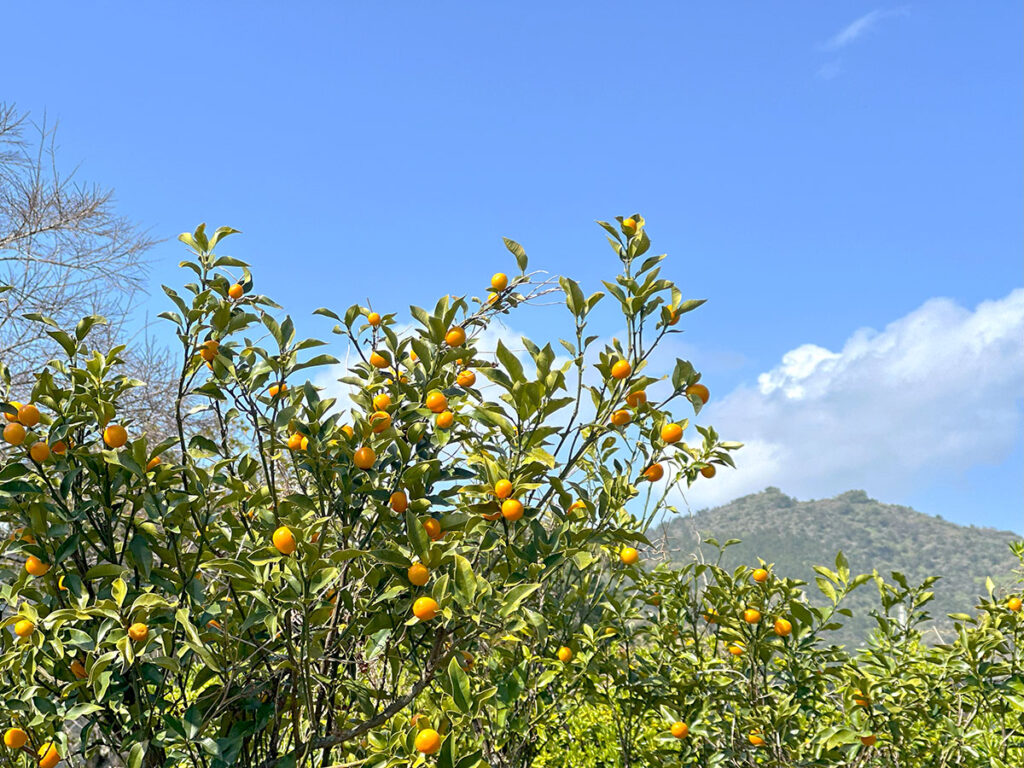
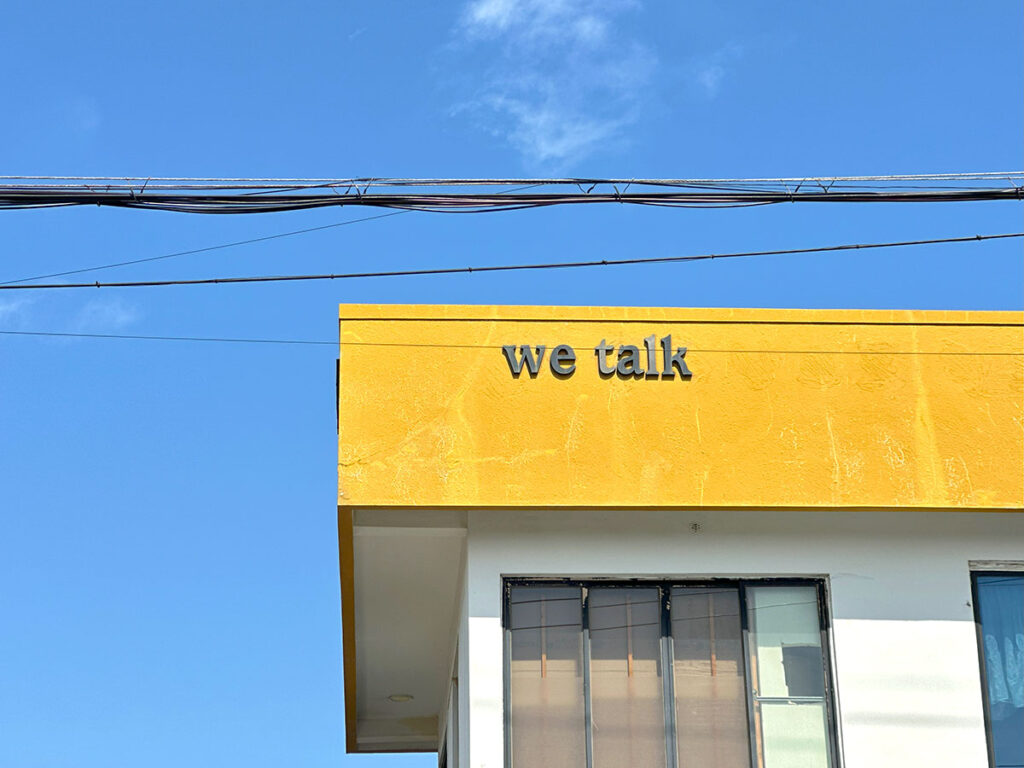
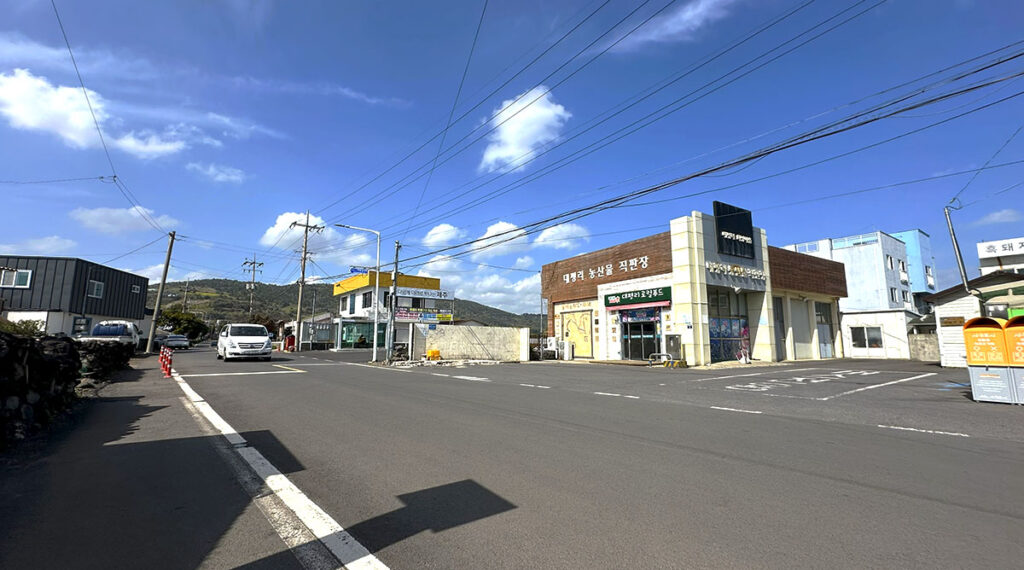
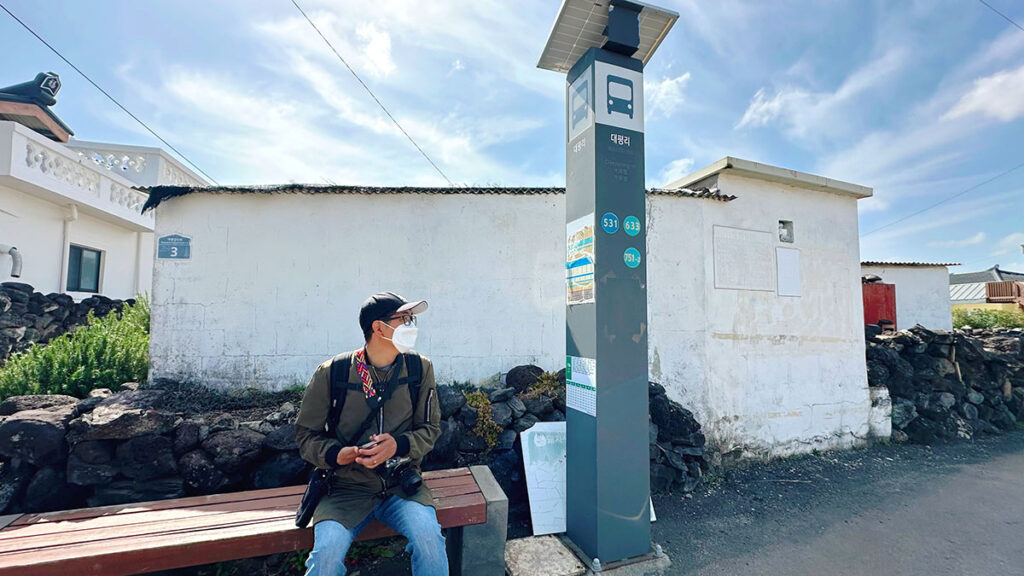
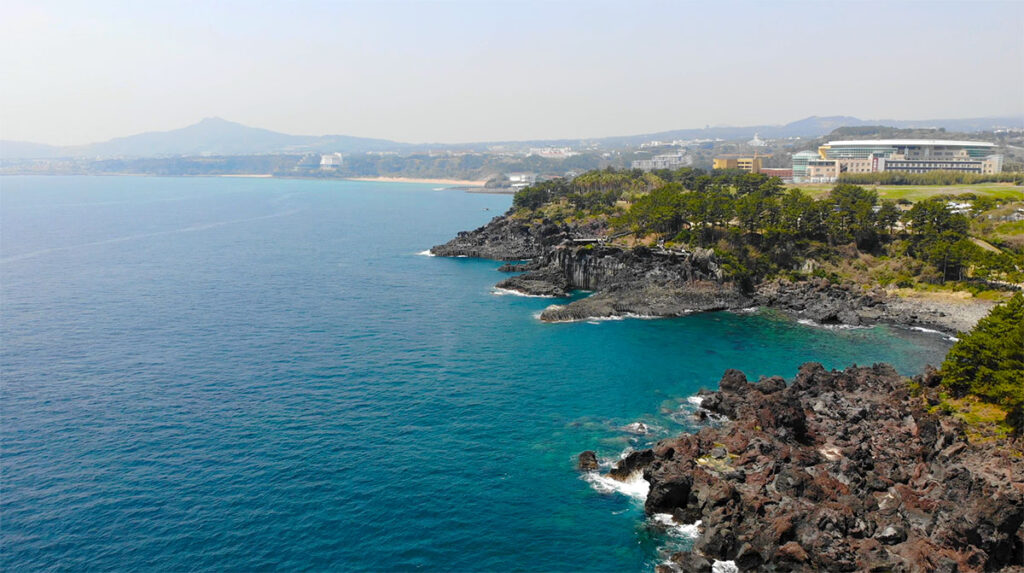
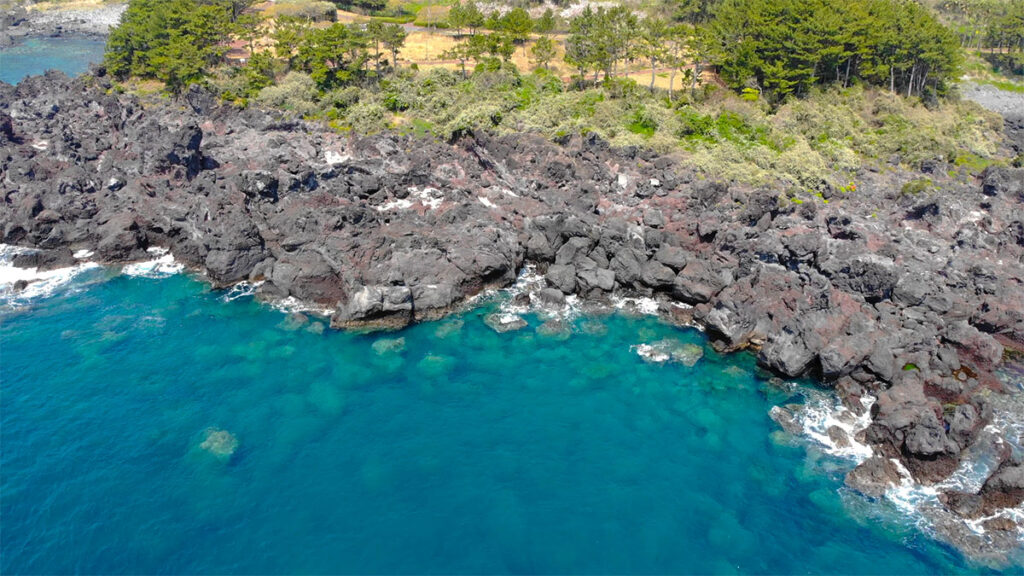
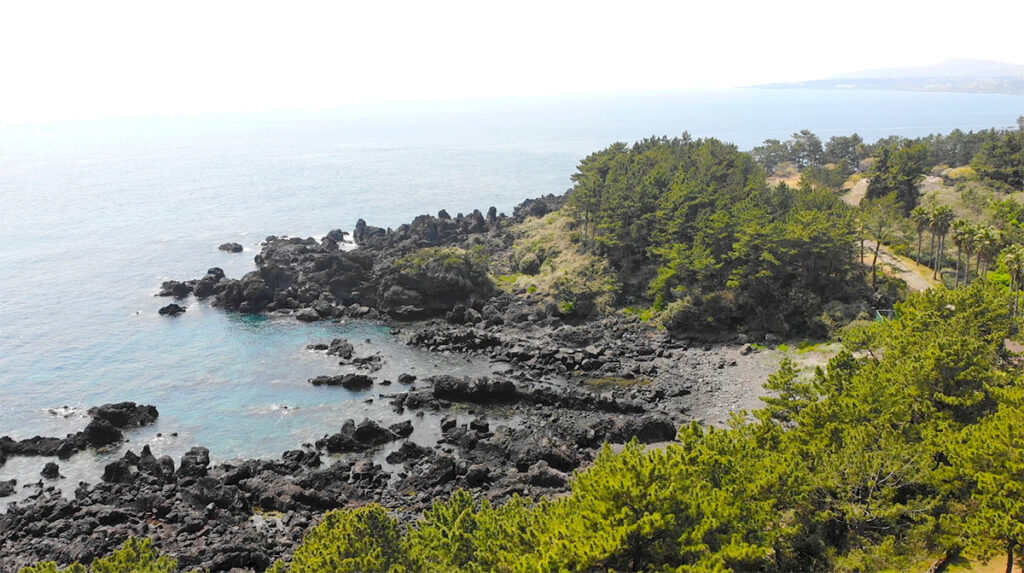
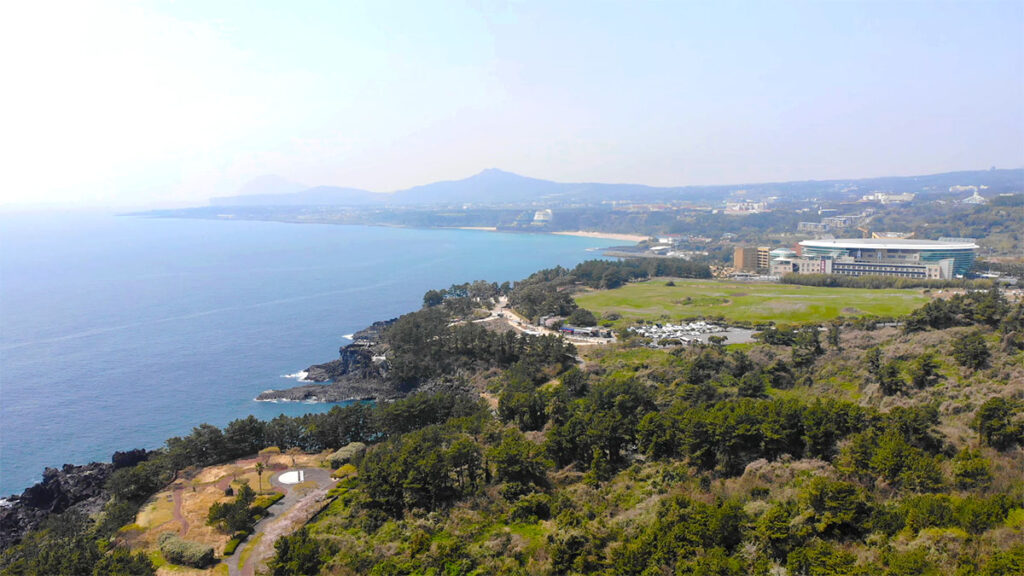
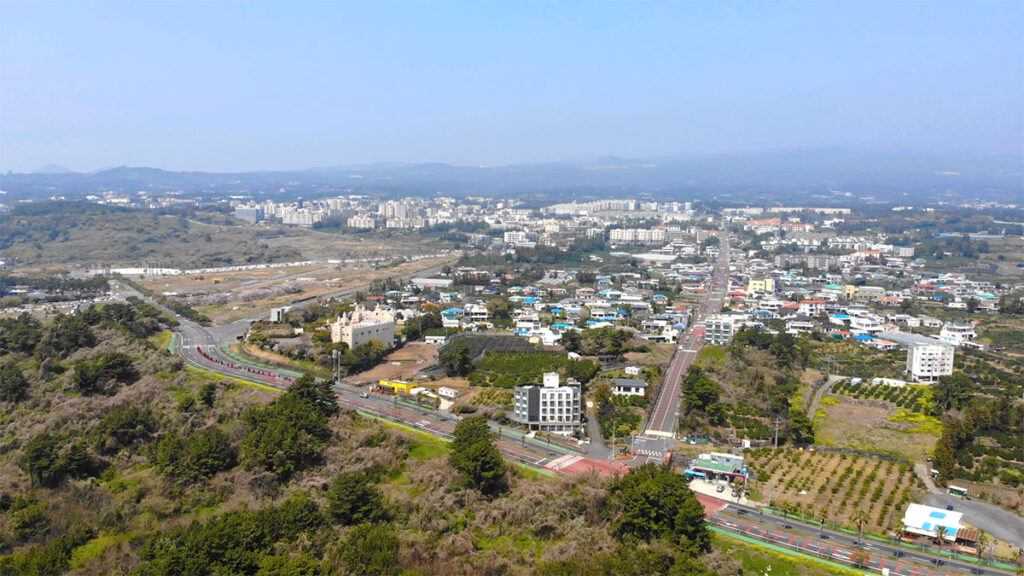
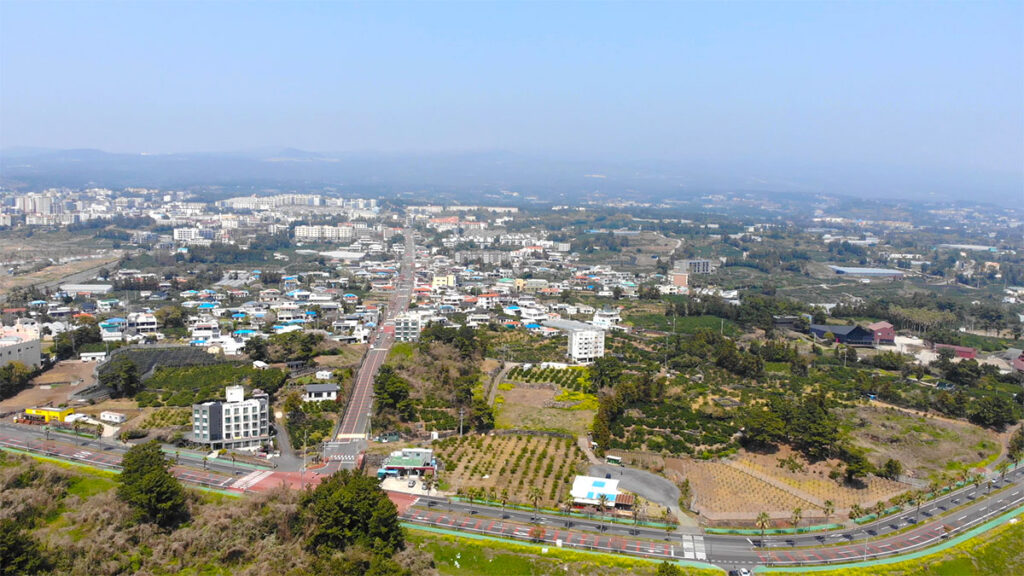
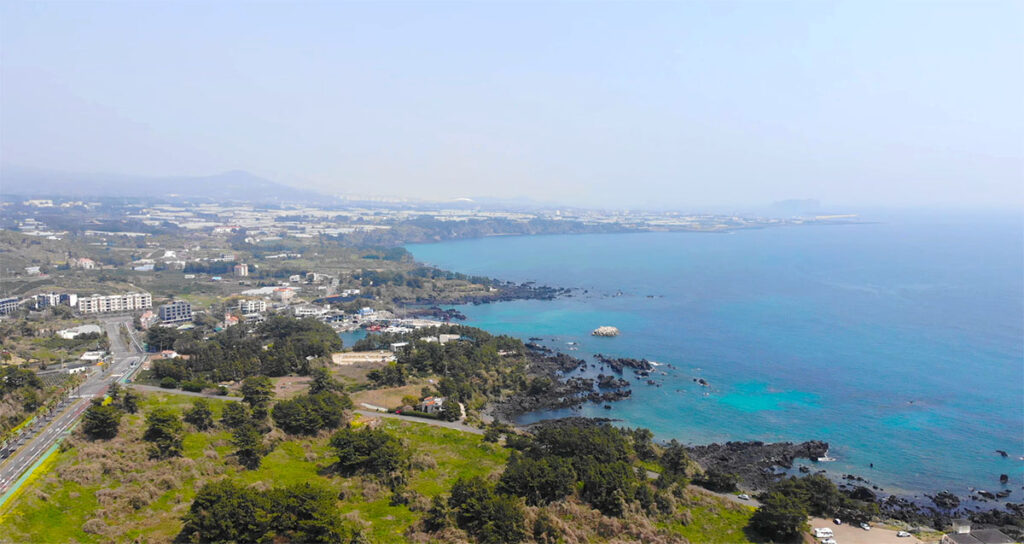
For now, we celebrate finishing Route 8 and look forward to the next trail on our list.
One trail at a time… Happy trekking!